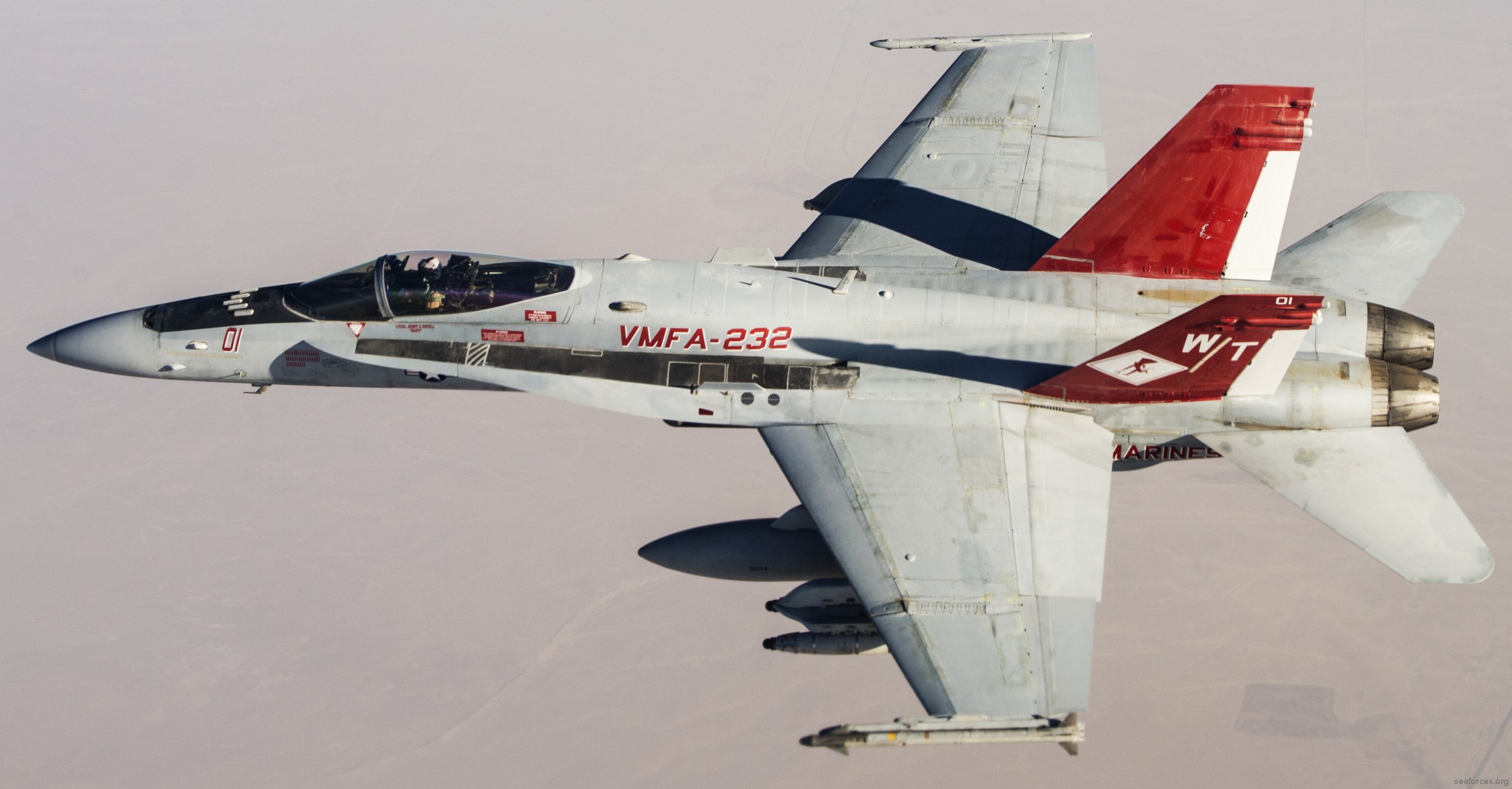 |
||||||
|
HOME
|
US Navy -
ships
|
US Navy - air
units
|
USMC - air
units
|
International
Navies
|
Weapon Systems
|
Special Reports |
||||||
|
US Marine Corps - Marine Fighter Attack Squadron
232 VMFA-232 'Red Devils' |
||||||
|
||||||
| 12/21 | ||||||
|
||||||
| images | ||||||
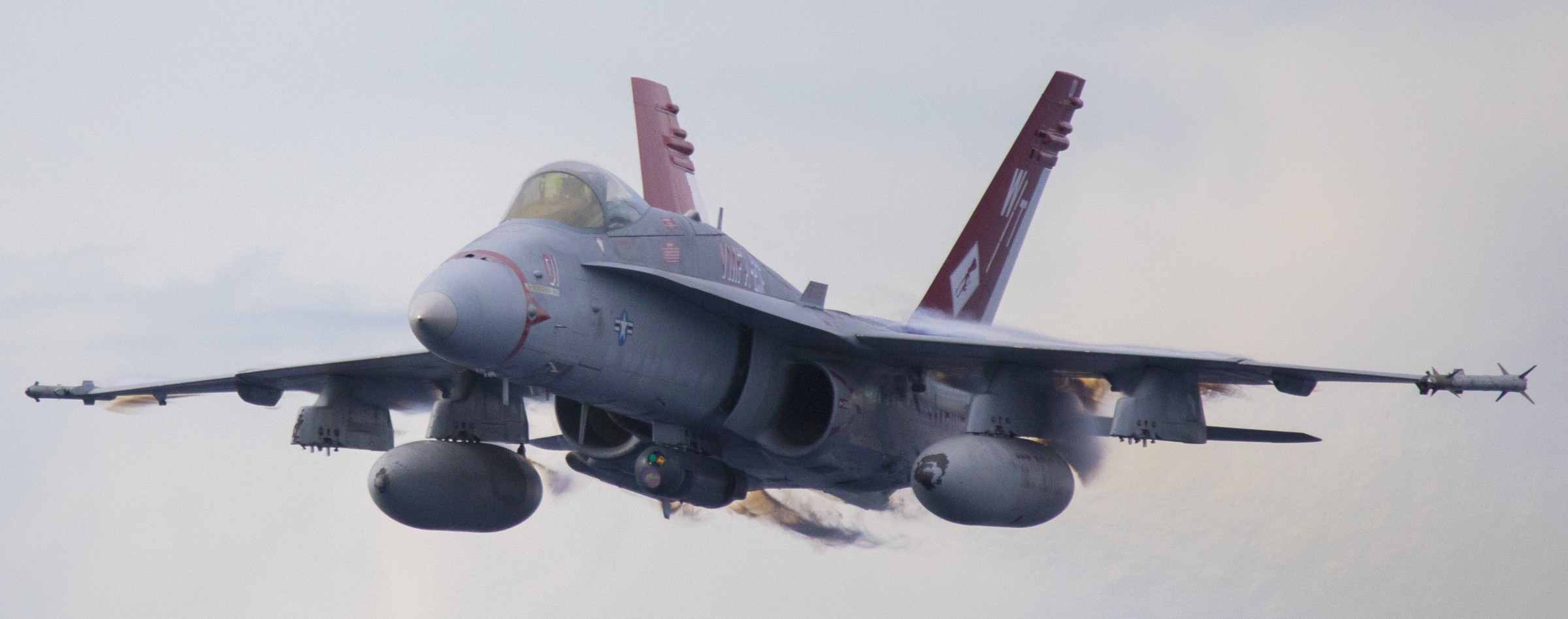 F/A-18C Hornet (VMFA-232) provides close air support during an exercise above Farallon De Medinilla, Northern Mariana Islands, August 2021 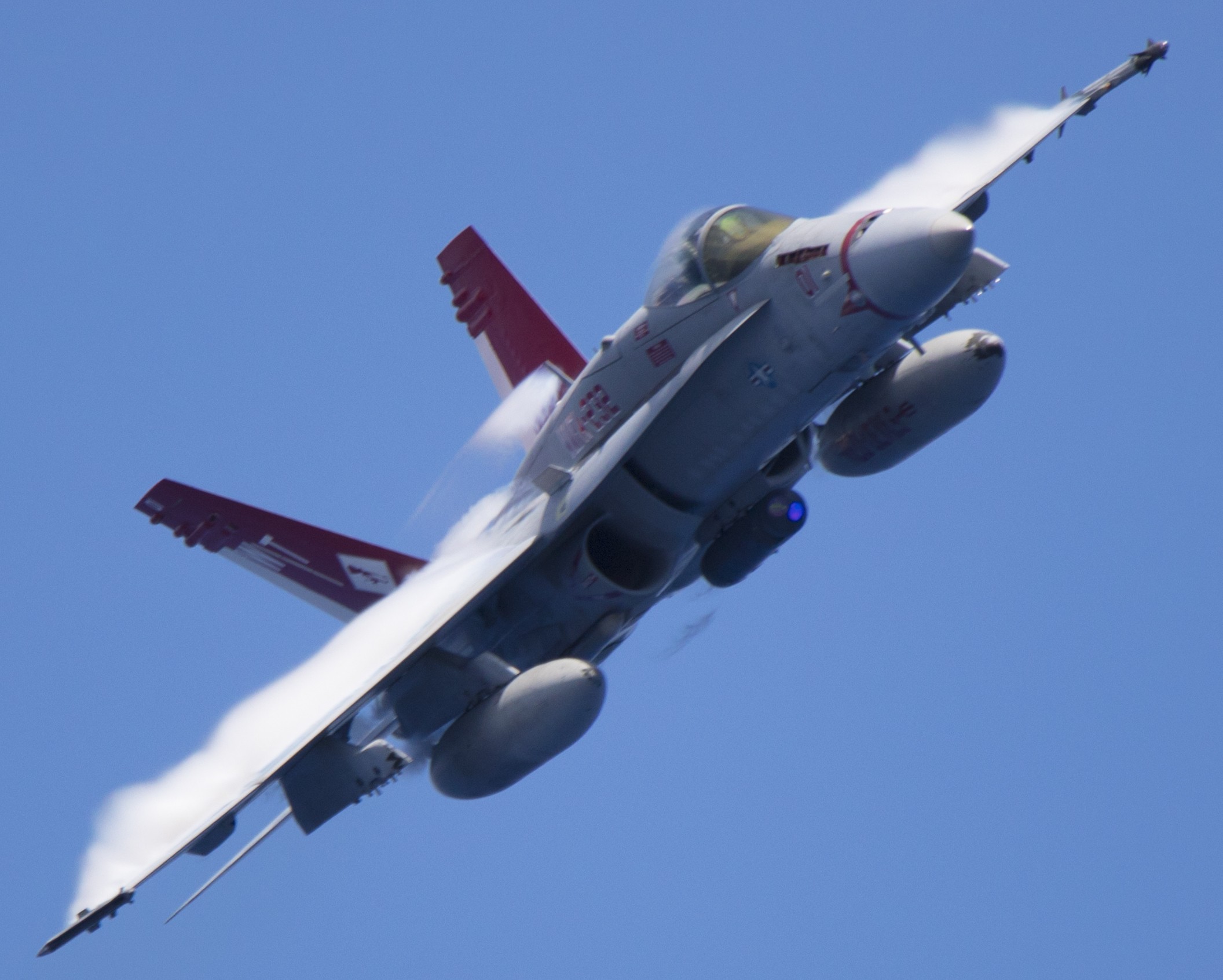 F/A-18C Hornet (VMFA-232) provides close air support during an exercise above Farallon De Medinilla, Northern Mariana Islands - August 2021 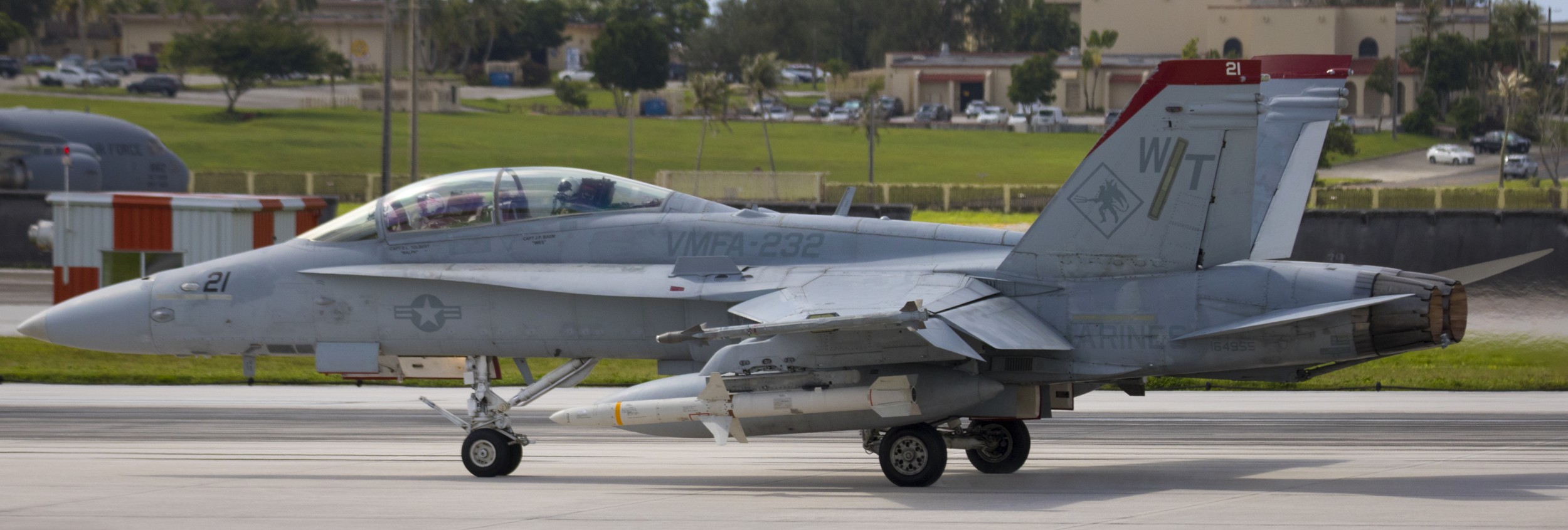 F/A-18D Hornet (VMFA-232) was armed with an AGM-88 HARM missile at Andersen Air Force Base (AFB), Guam - August 2021 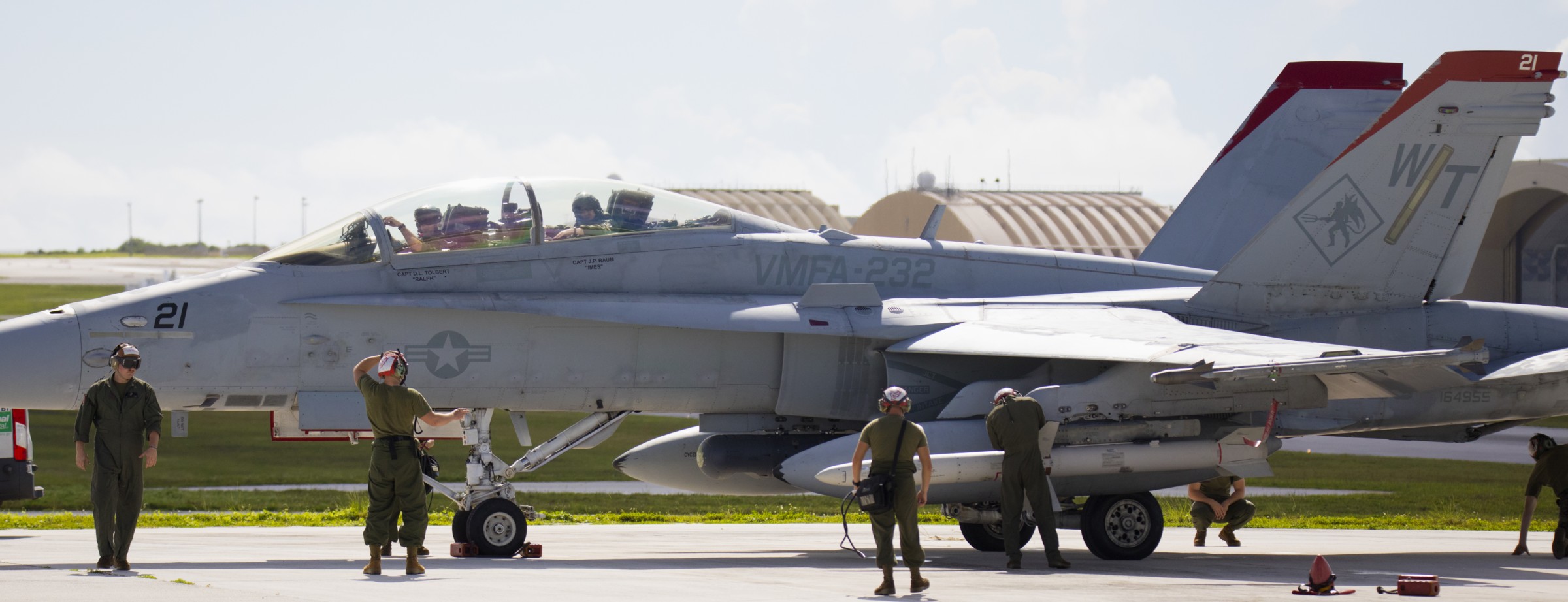 F/A-18D Hornet (VMFA-232) was armed with an AGM-88 HARM missile at Andersen Air Force Base (AFB), Guam - August 2021 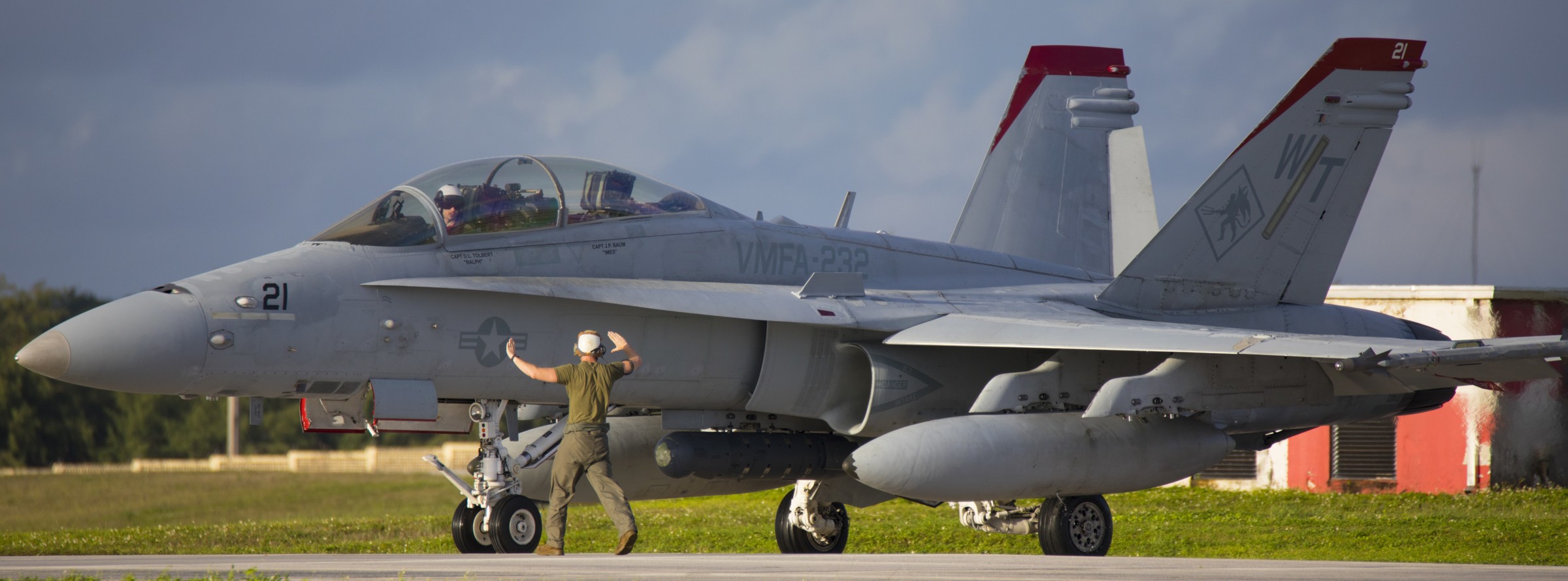 F/A-18D Hornet (VMFA-232) at Andersen Air Force Base (AFB), Guam - August 2021 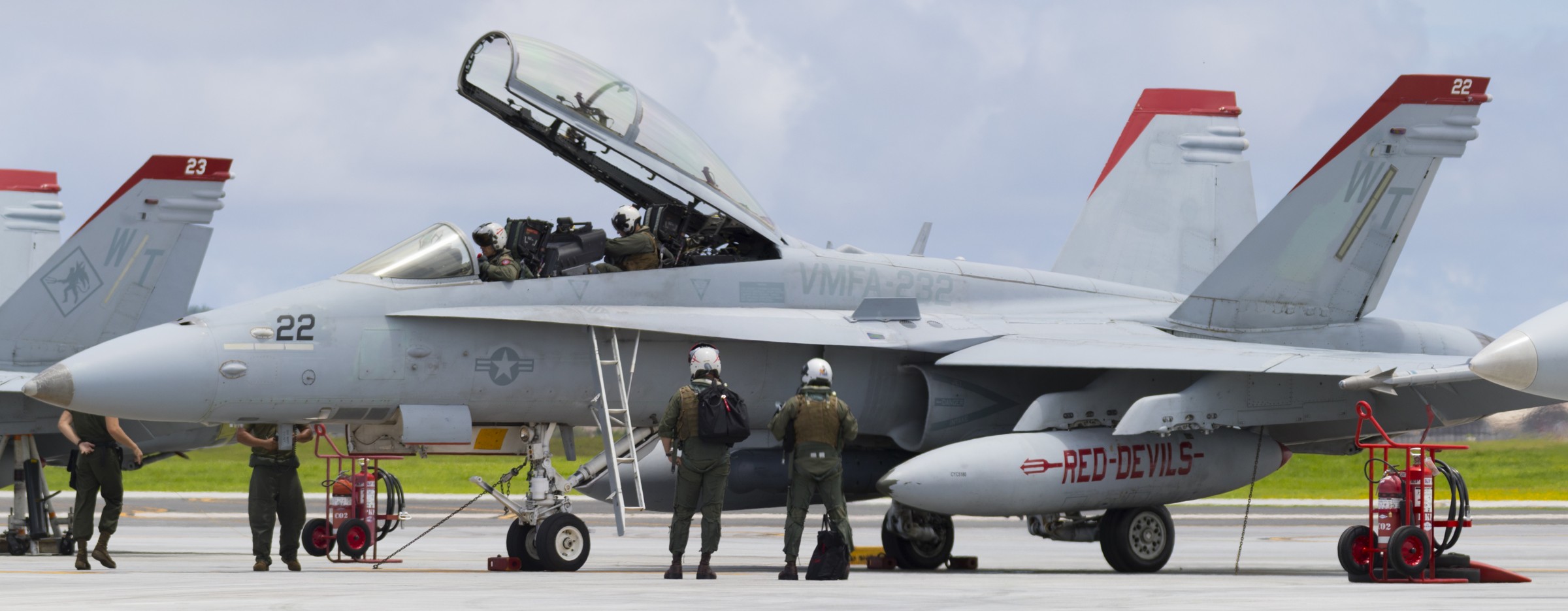 F/A-18D Hornet (VMFA-232) at Andersen Air Force Base (AFB), Guam - August 2021 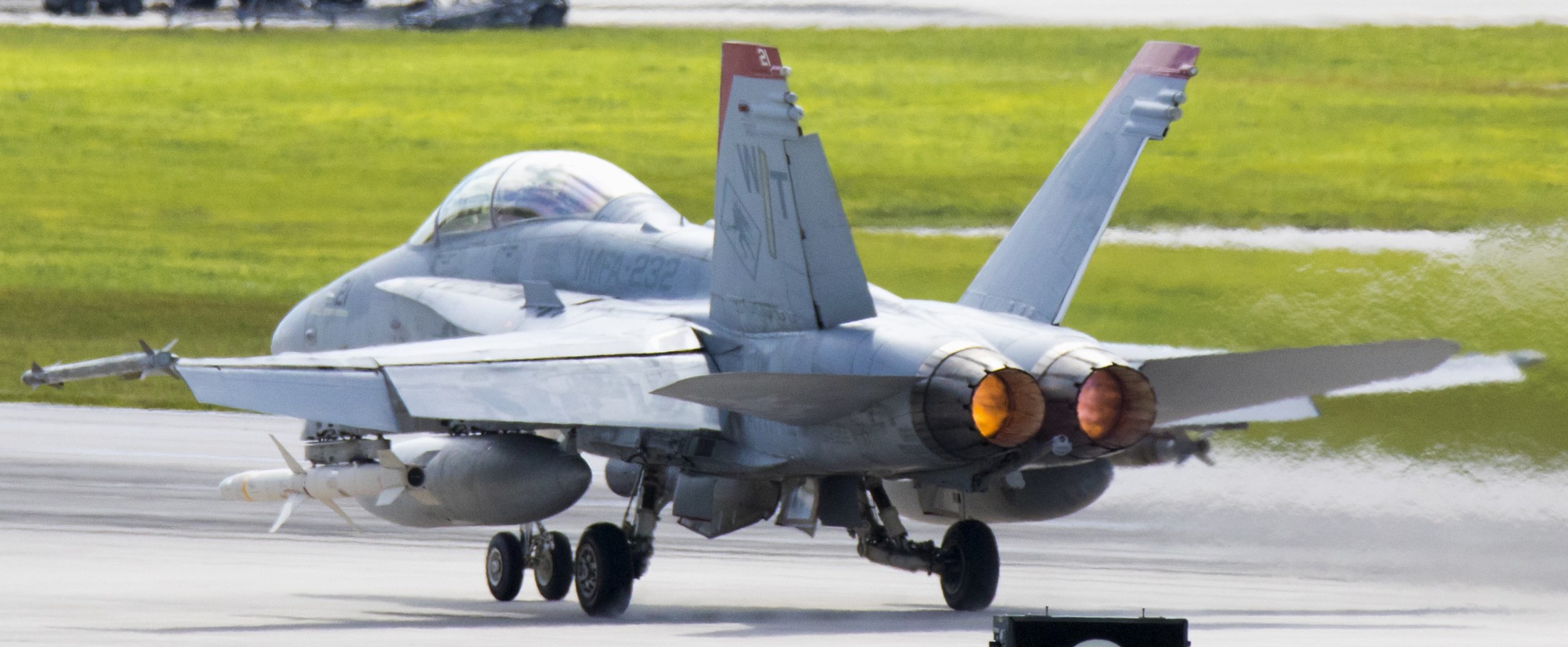 F/A-18D Hornet (VMFA-232) at Andersen Air Force Base (AFB), Guam - August 2021 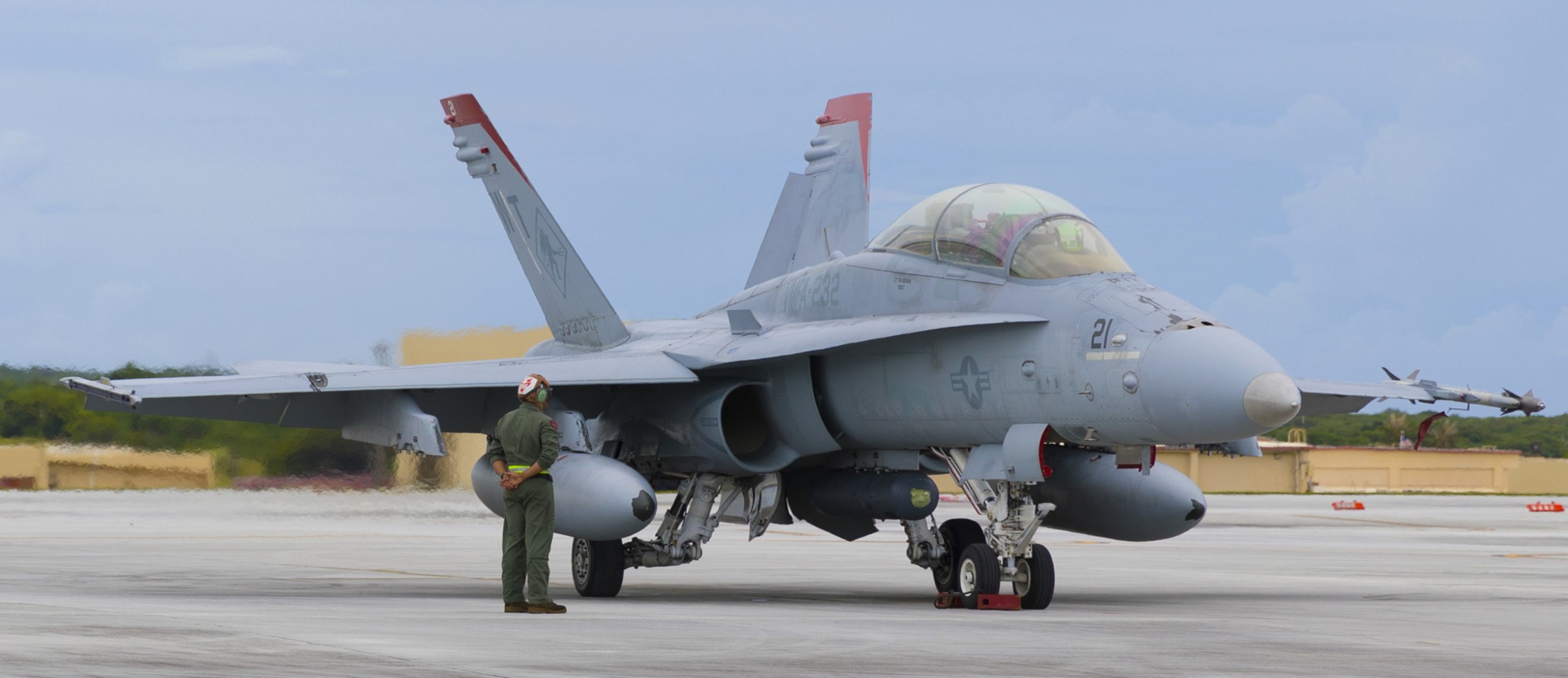 F/A-18D Hornet (VMFA-232) at Andersen Air Force Base (AFB), Guam - August 2021 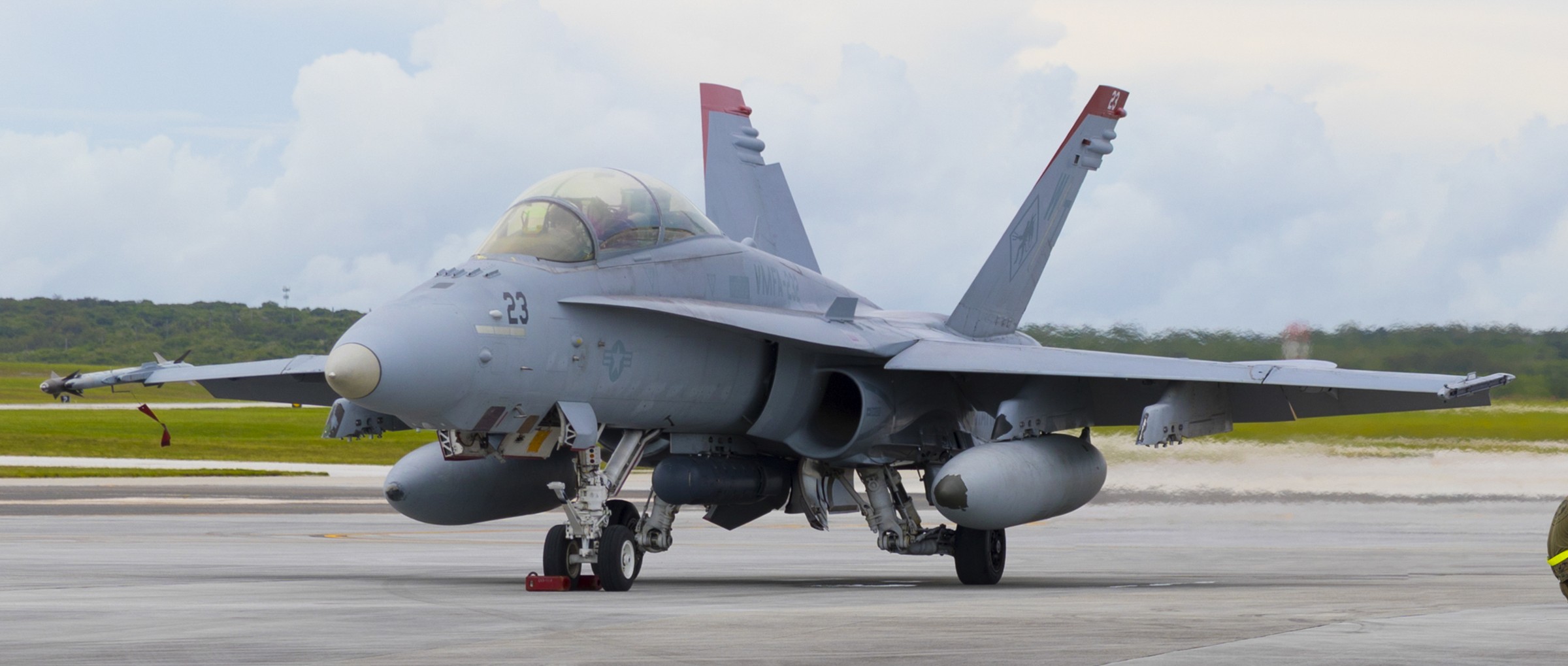 F/A-18D Hornet (VMFA-232) at Andersen Air Force Base (AFB), Guam - August 2021 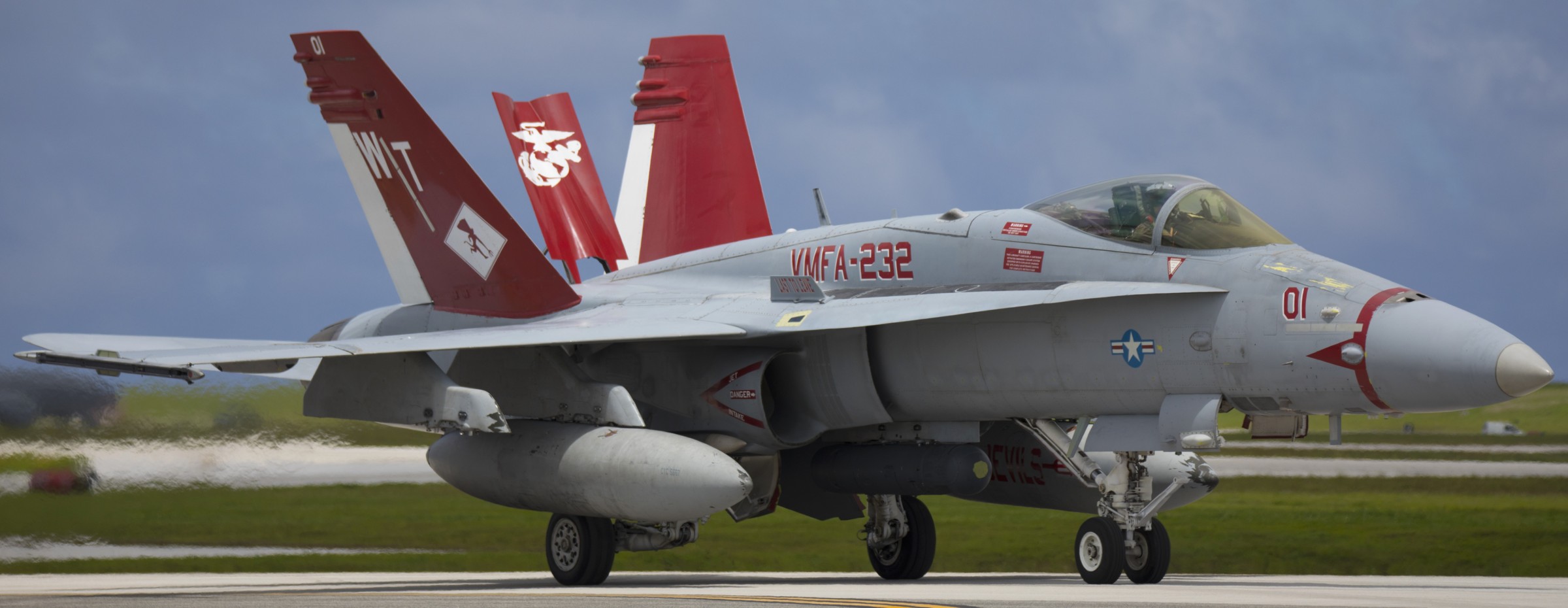 F/A-18C Hornet (VMFA-232) at Andersen Air Force Base (AFB), Guam - July 2021 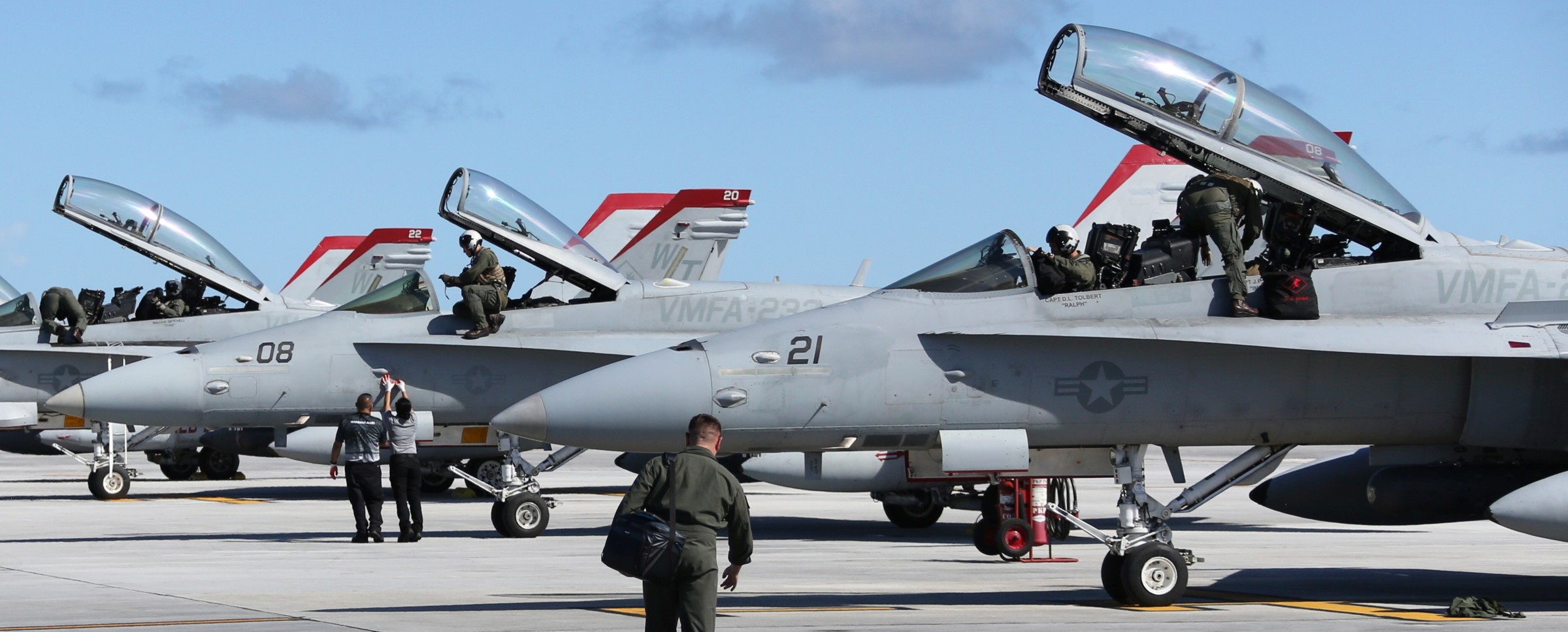 F/A-18C+D Hornet (VMFA-232) at Andersen Air Force Base (AFB), Guam - June 2021 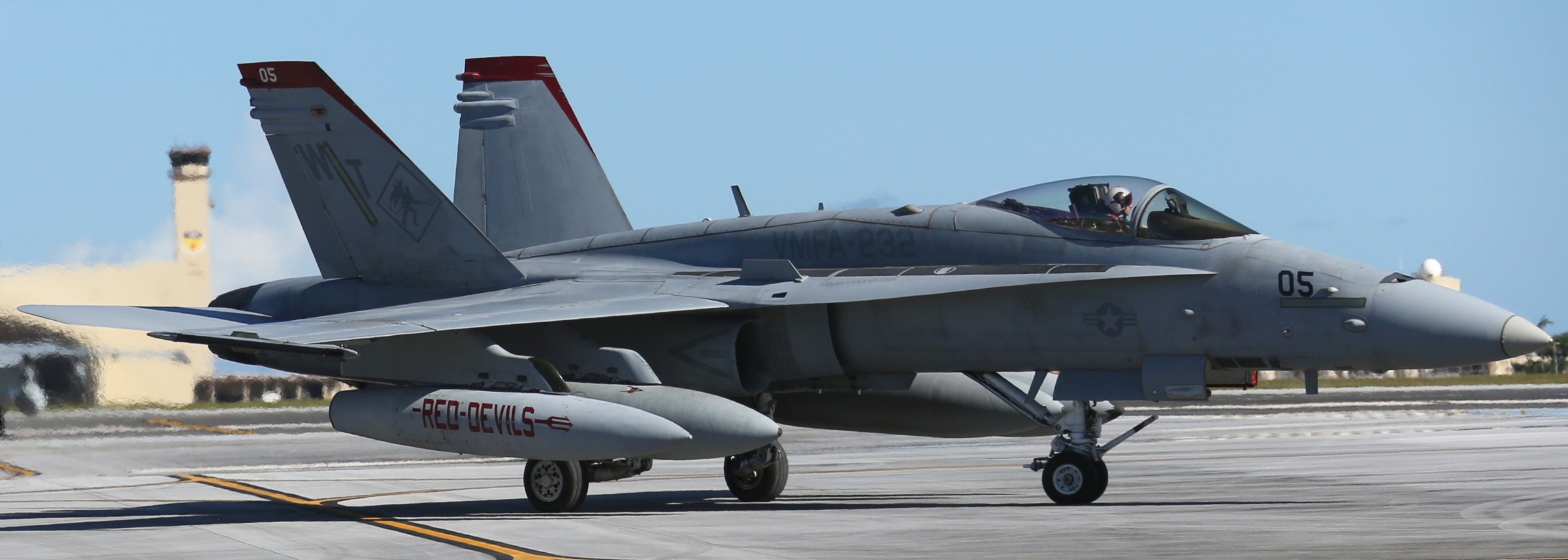 F/A-18C Hornet (VMFA-232) at Andersen Air Force Base (AFB), Guam - June 2021 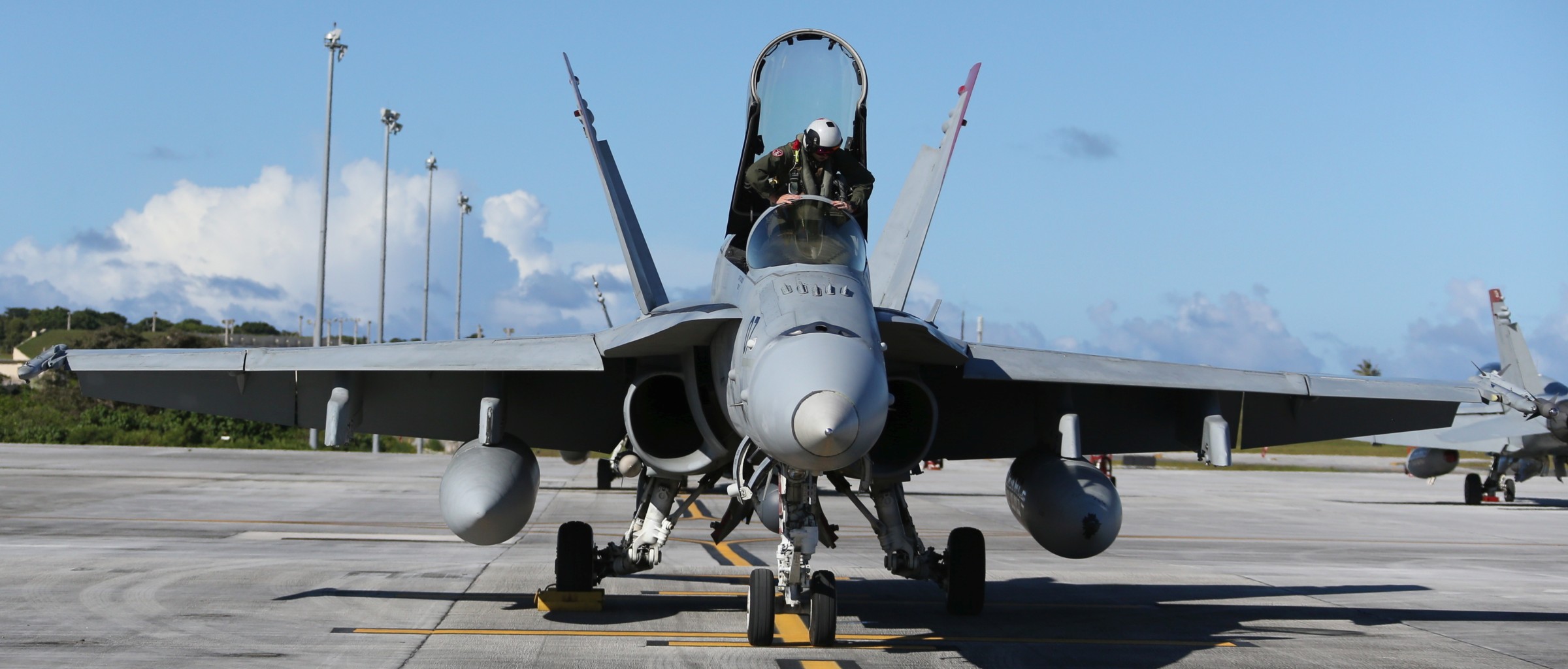 F/A-18C Hornet (VMFA-232) at Andersen Air Force Base (AFB), Guam - June 2021 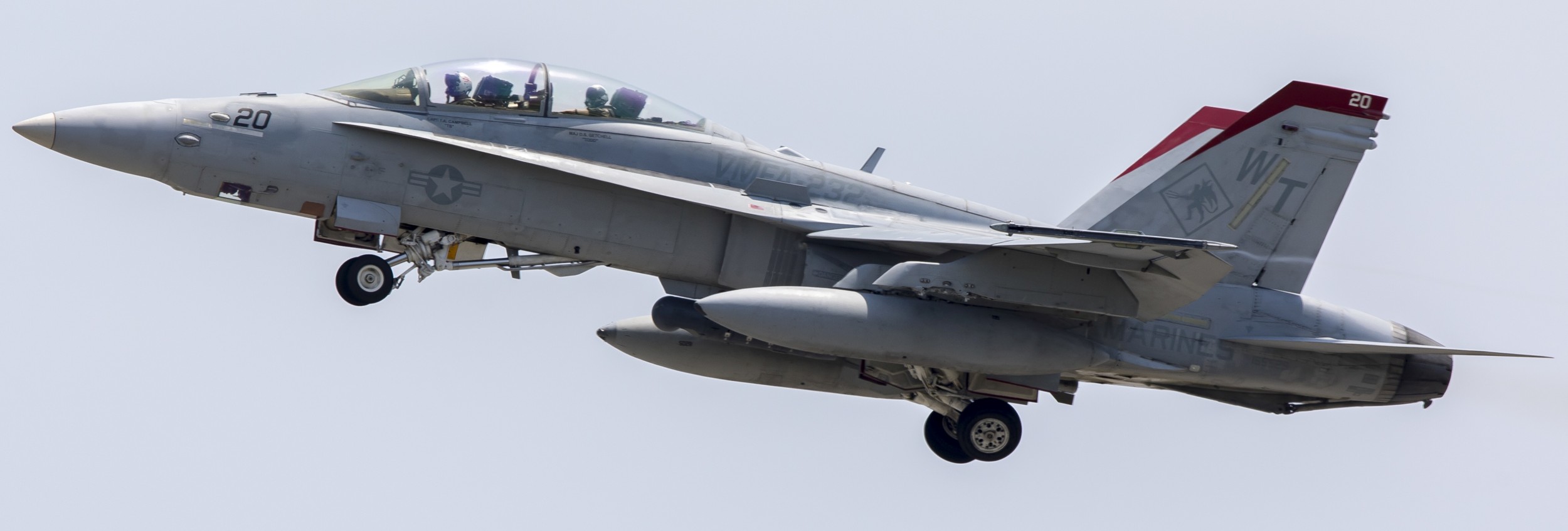 F/A-18D Hornet (VMFA-232) at MCAS Iwakuni, Japan - June 2021 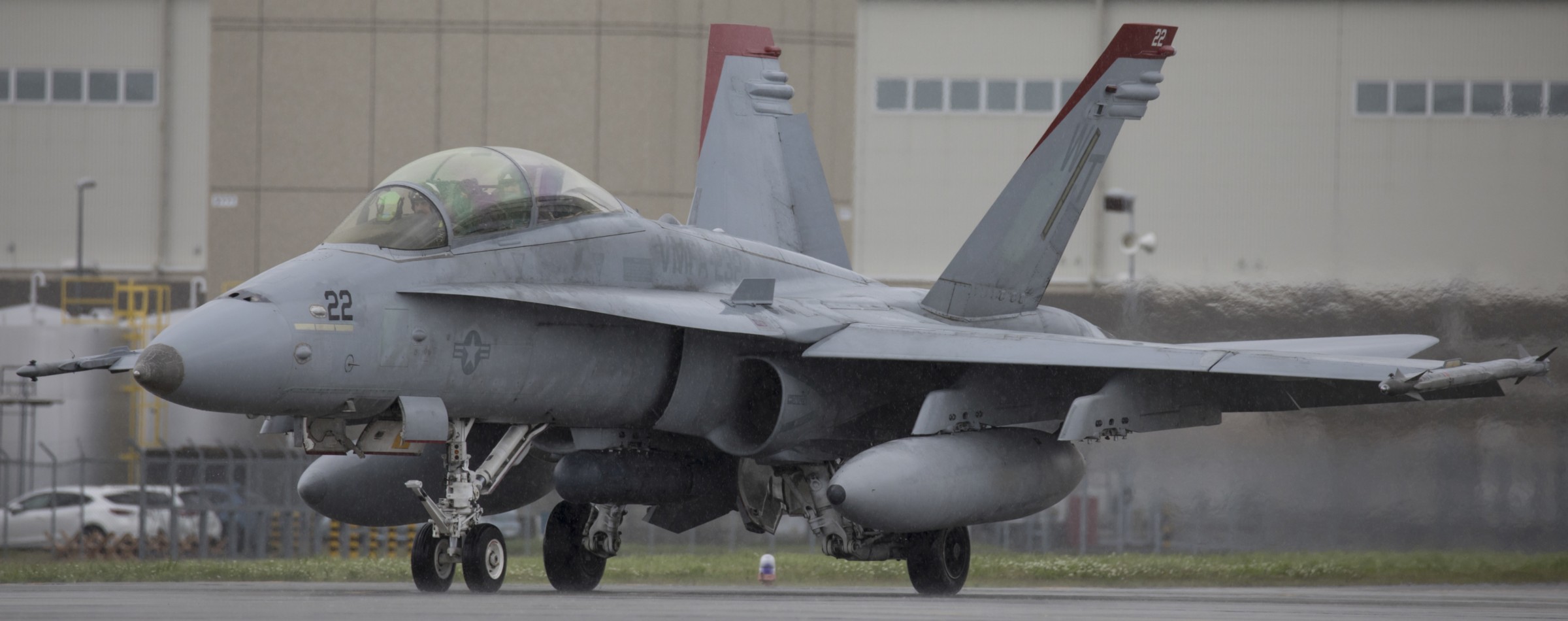 F/A-18D Hornet (VMFA-232) at MCAS Iwakuni, Japan - May 2021  F/A-18D Hornet (VMFA-232) at MCAS Iwakuni, Japan - May 2021 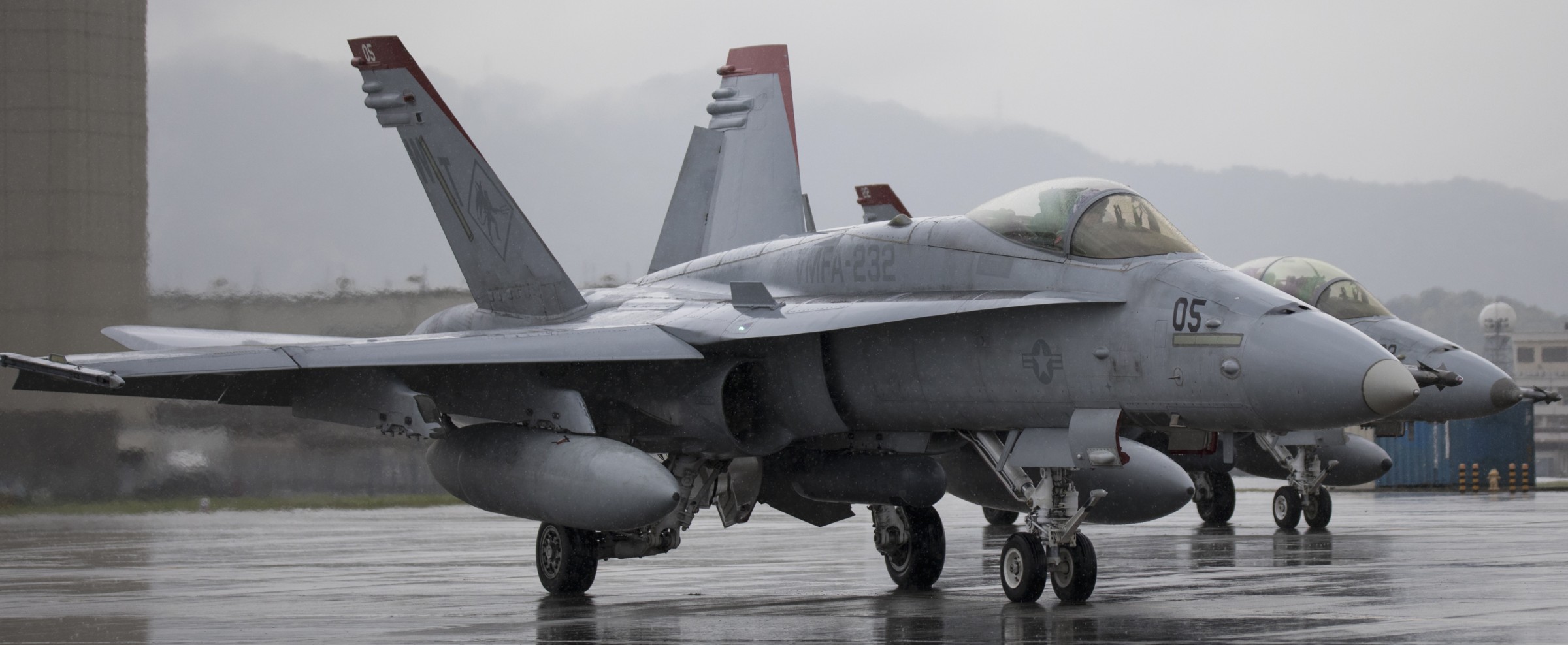 F/A-18C Hornet (VMFA-232) at MCAS Iwakuni, Japan - May 2021 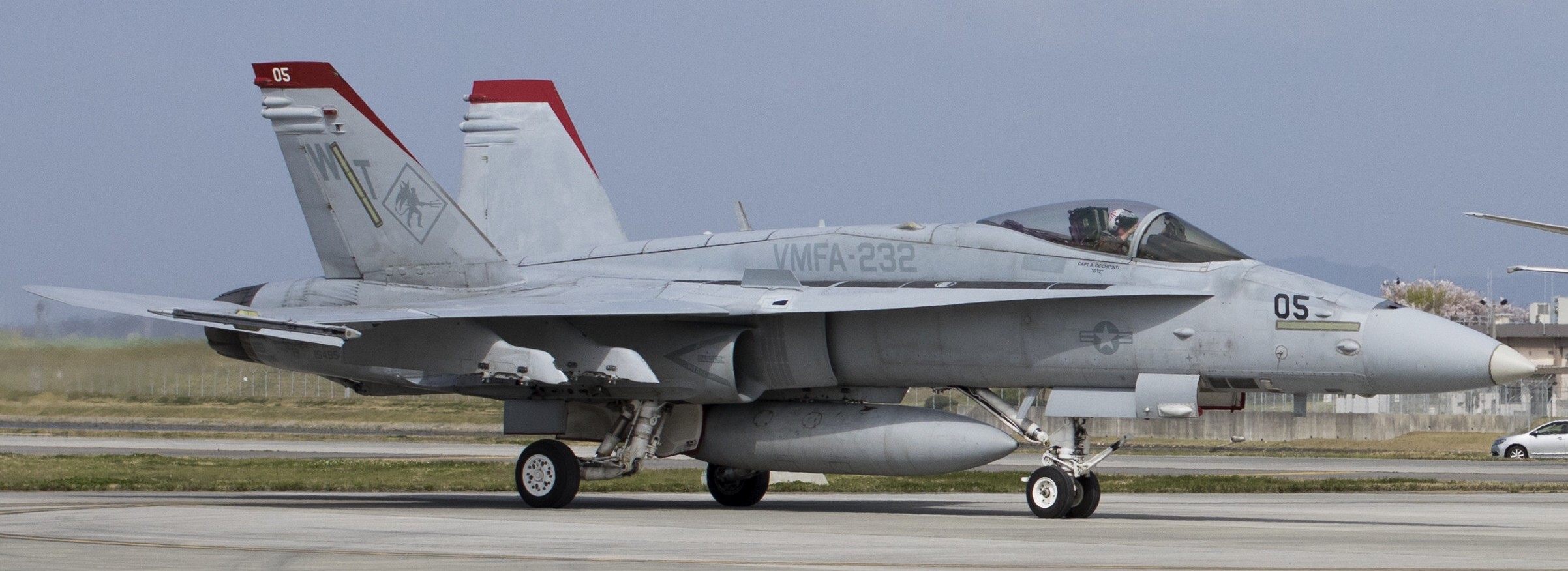 F/A-18C Hornet (VMFA-232) at MCAS Iwakuni, Japan - April 2021 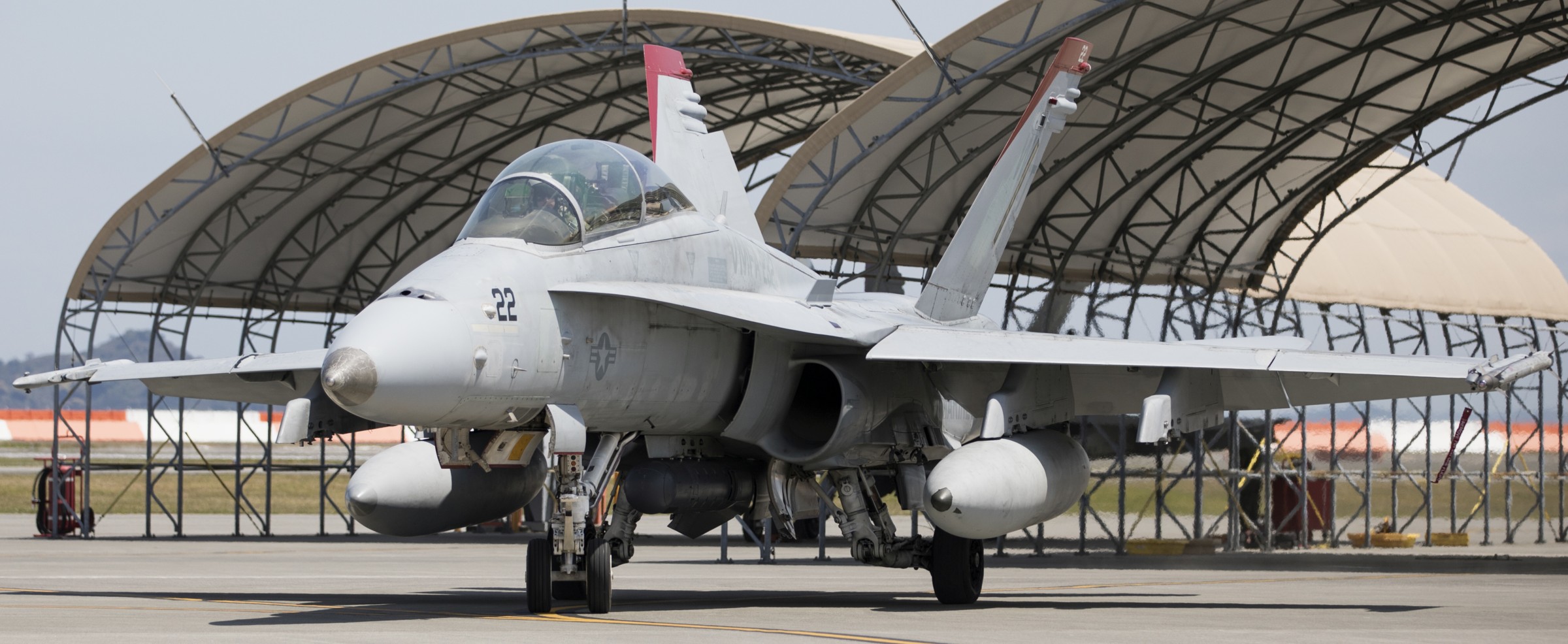 F/A-18D Hornet (VMFA-232) at MCAS Iwakuni, Japan - April 2021 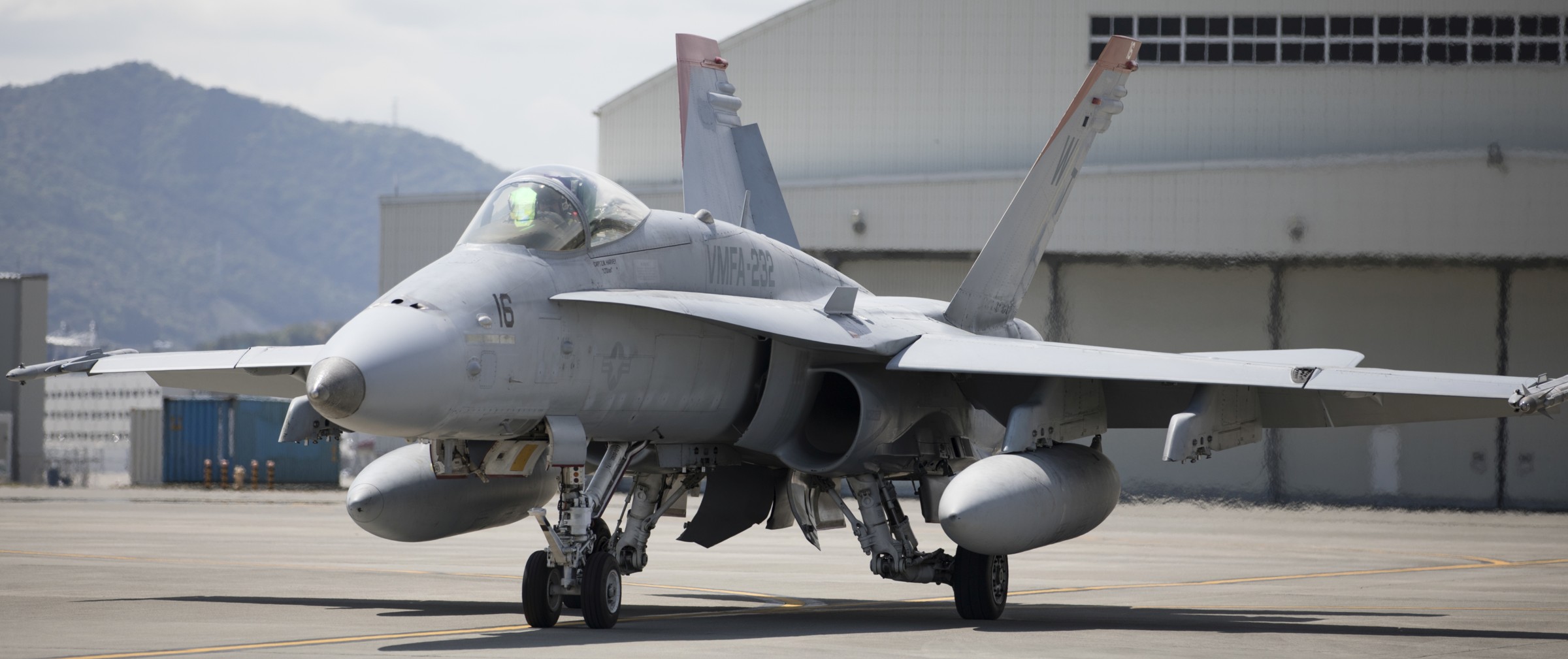 F/A-18C Hornet (VMFA-232) at MCAS Iwakuni, Japan - April 2021 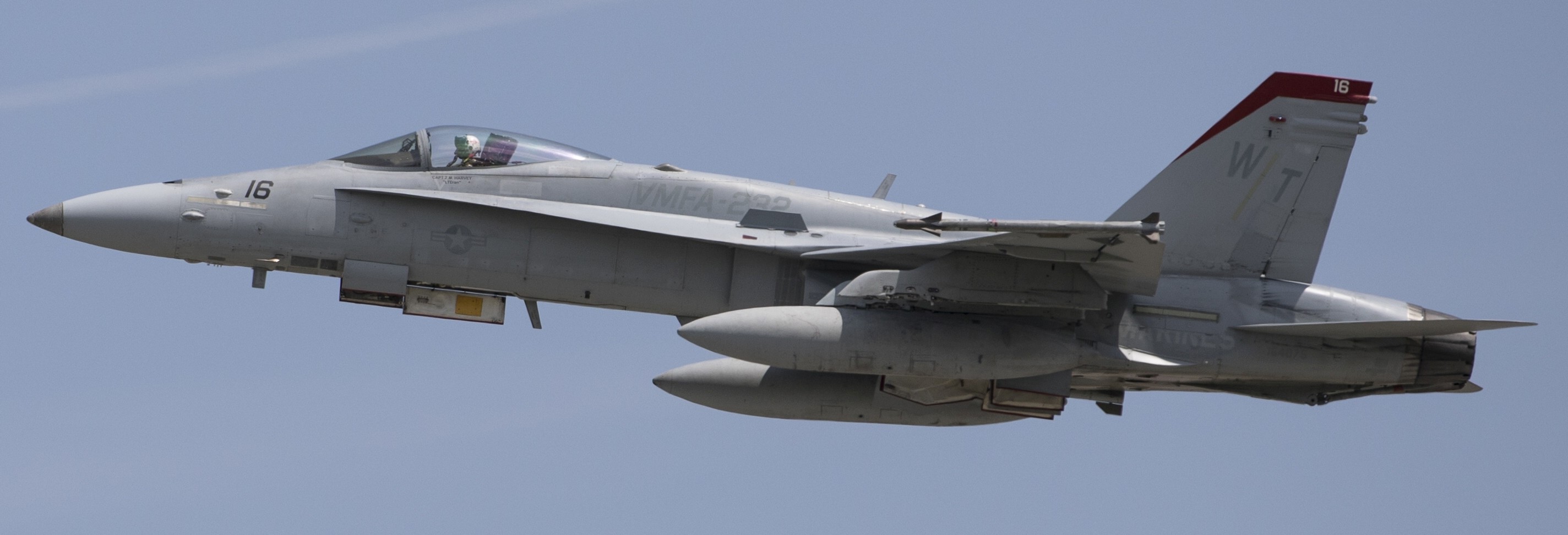 F/A-18C Hornet (VMFA-232) at MCAS Iwakuni, Japan - April 2021 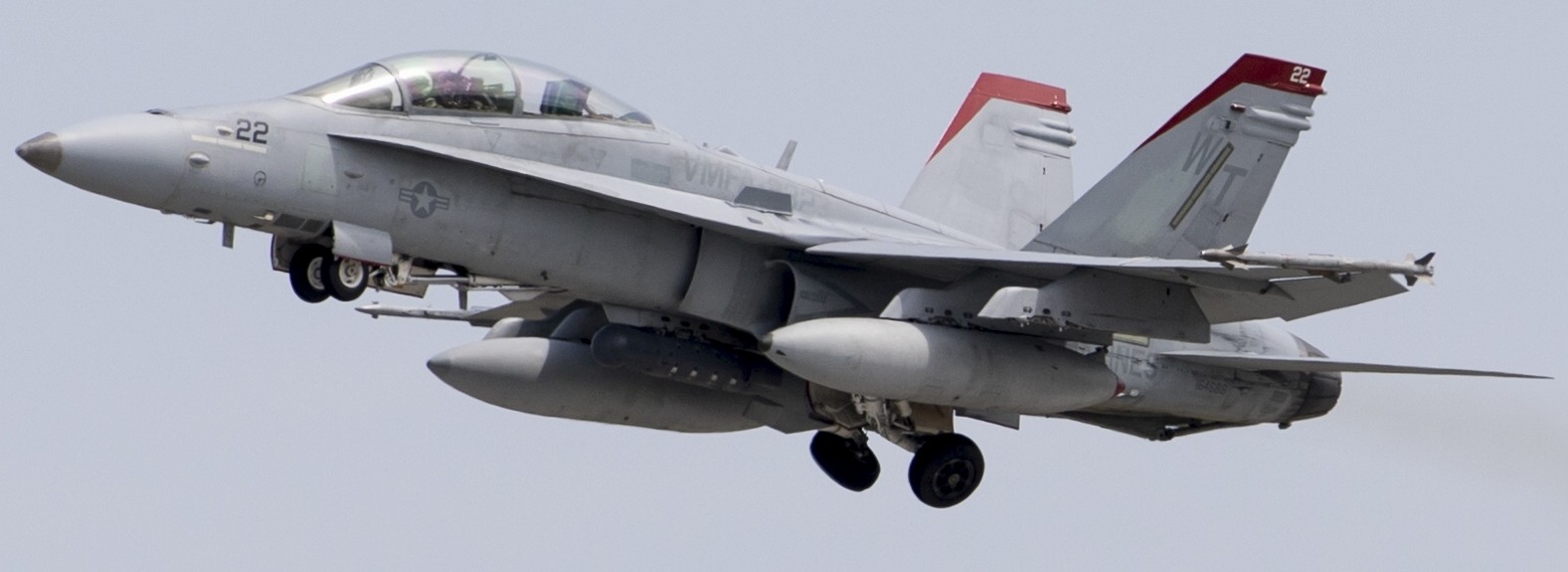 F/A-18D Hornet (VMFA-232) at MCAS Iwakuni, Japan - April 2021 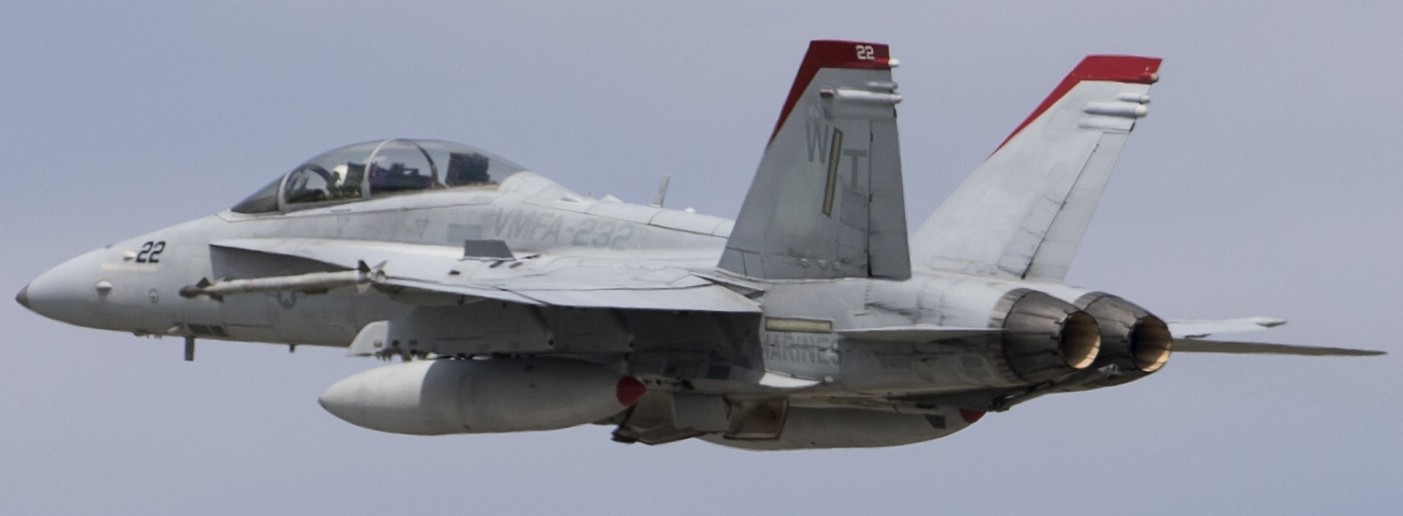 F/A-18D Hornet (VMFA-232) at MCAS Iwakuni, Japan - April 2021 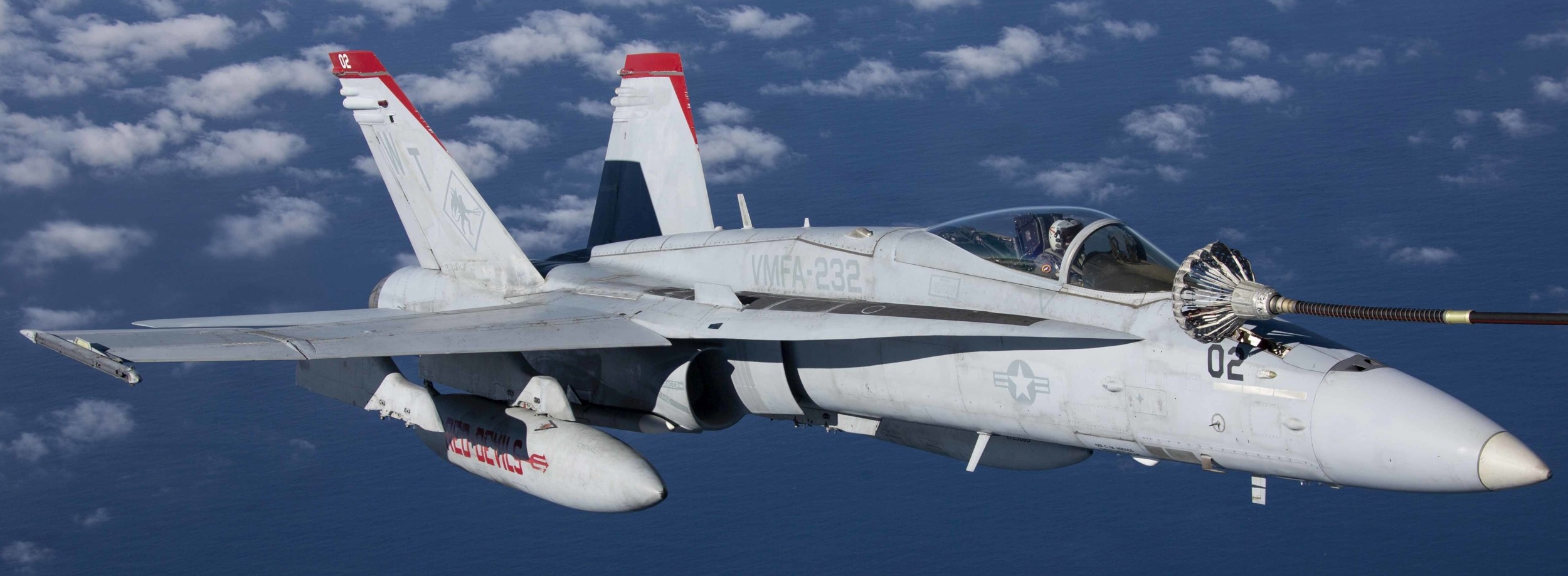 F/A-18C Hornet (VMFA-232) during Exercise Winter Fury - California - February 2021 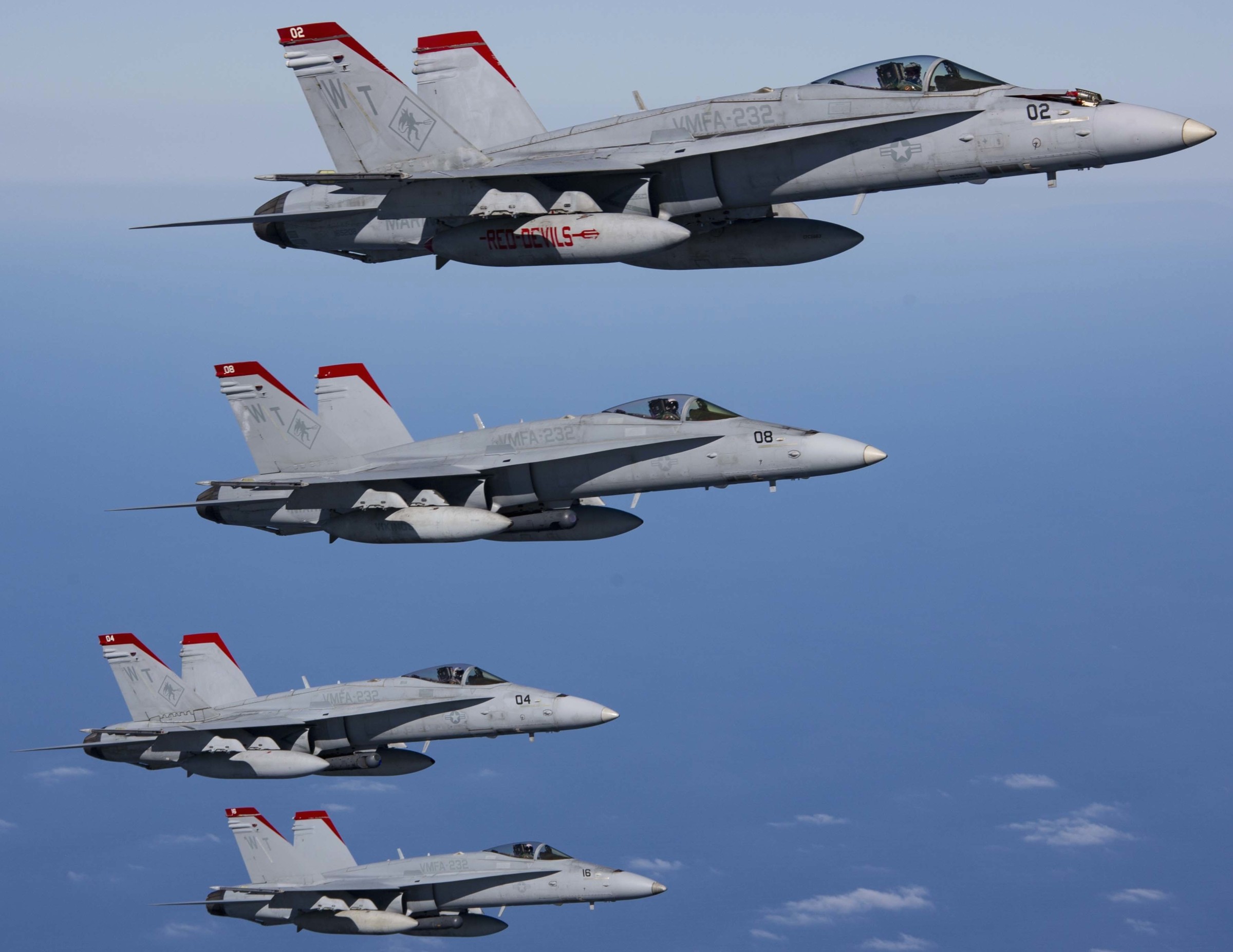 F/A-18C Hornet (VMFA-232) during Exercise Winter Fury - California - February 2021 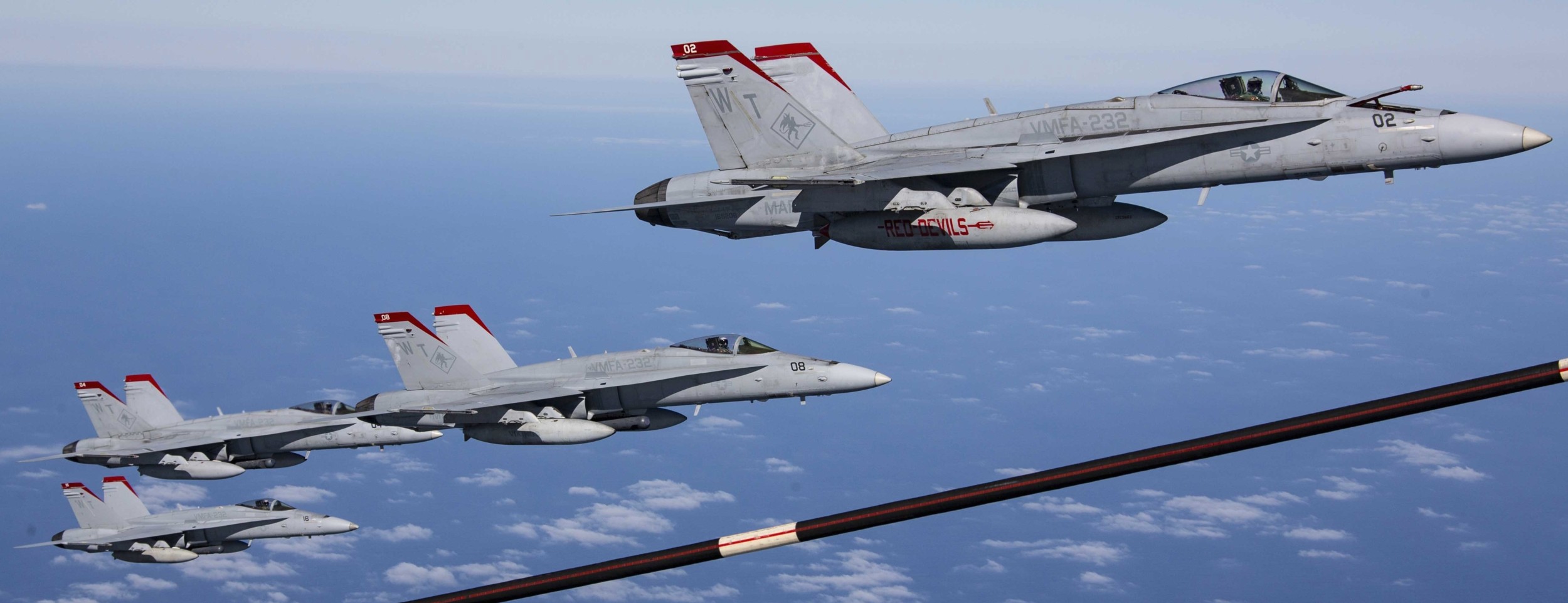 F/A-18C Hornet (VMFA-232) during Exercise Winter Fury - California - February 2021 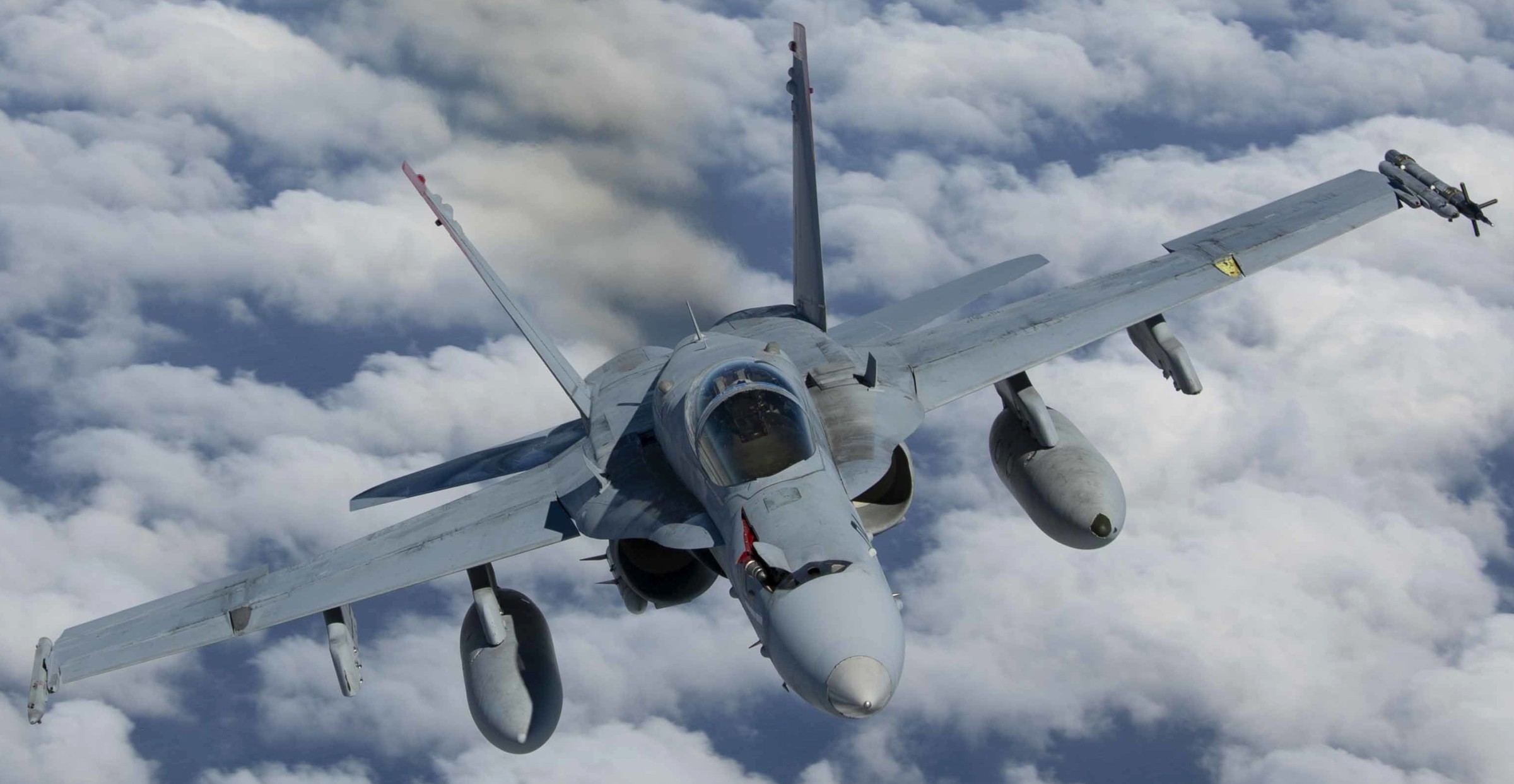 F/A-18C Hornet (VMFA-232) during Exercise Winter Fury - California - February 2021 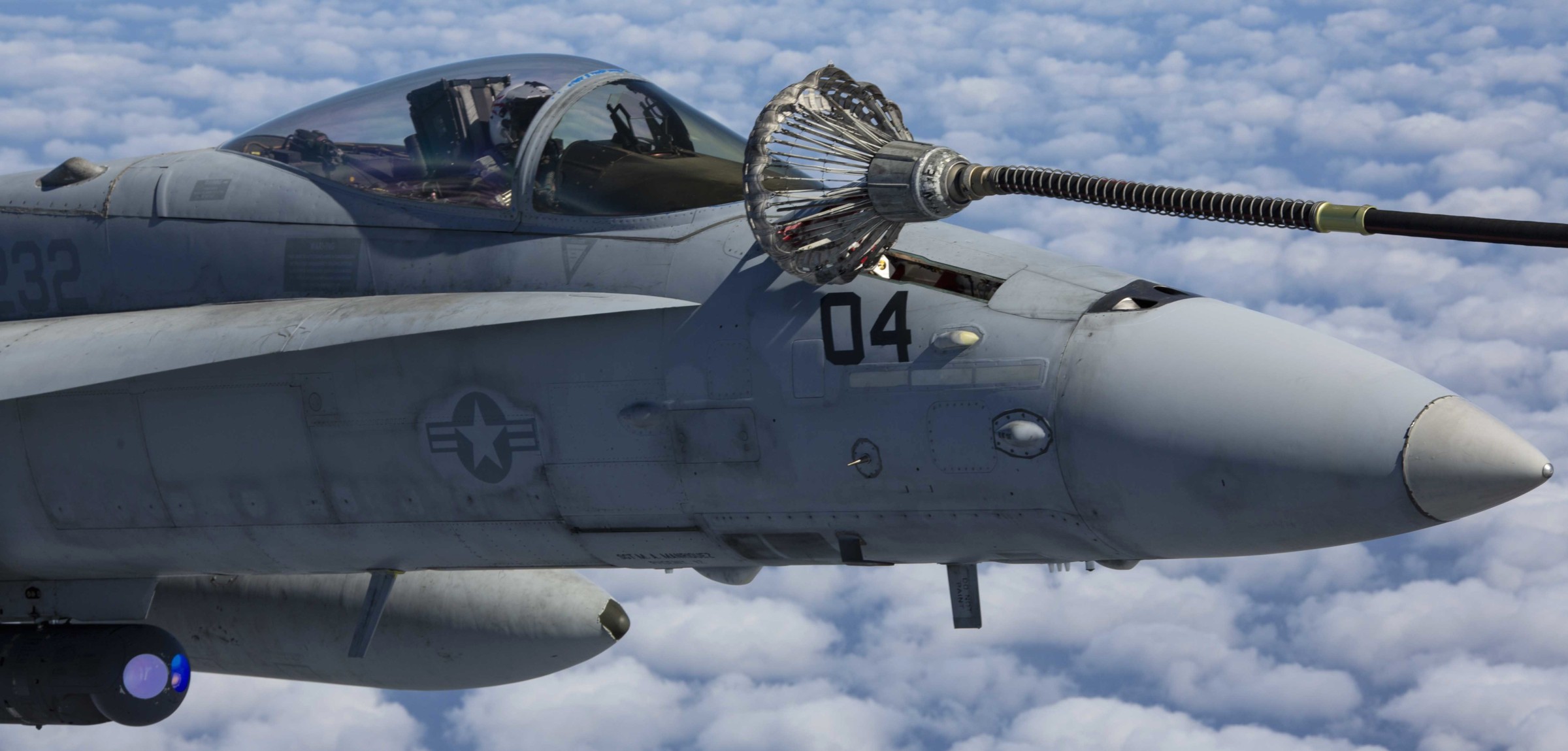 F/A-18C Hornet (VMFA-232) during Exercise Winter Fury - California - February 2021 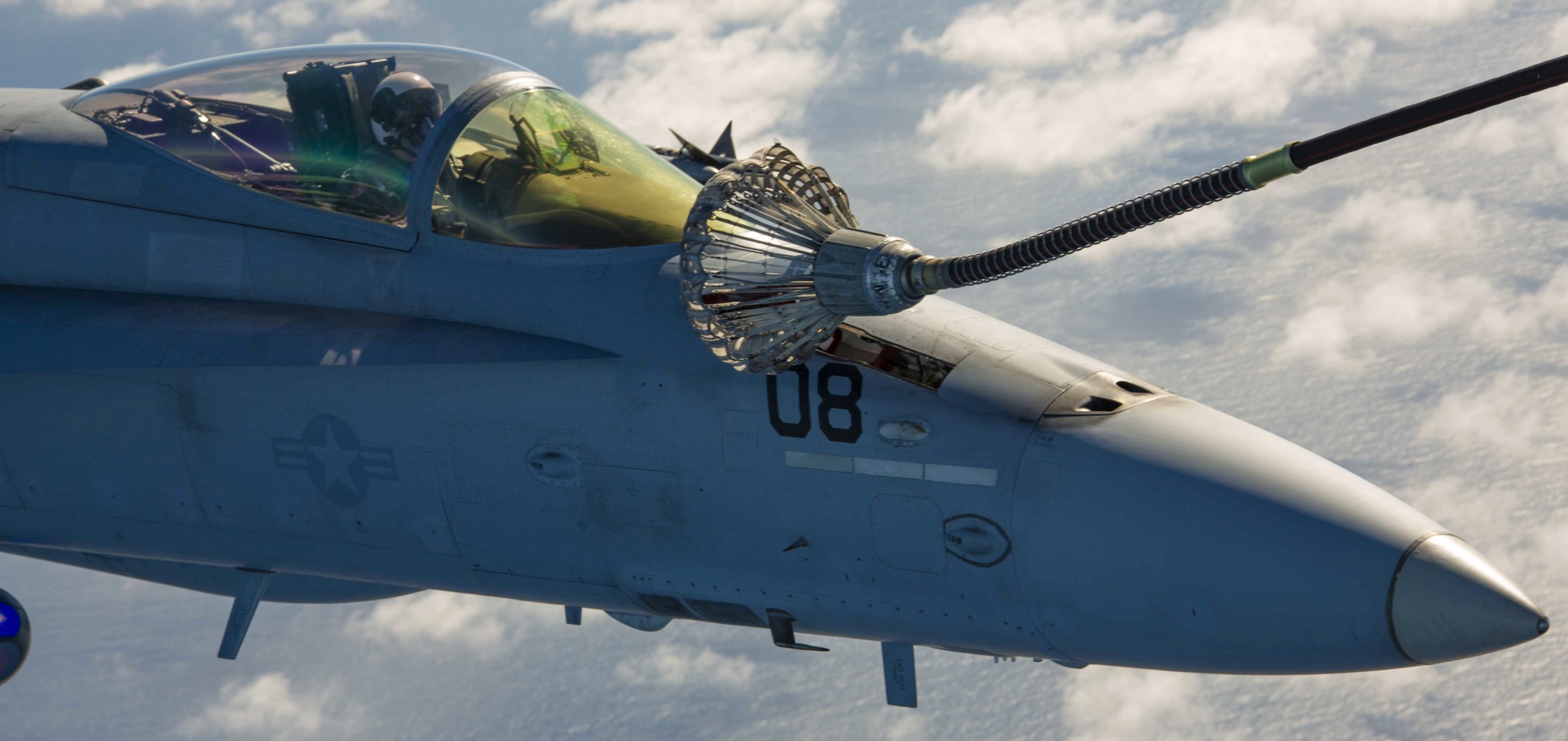 F/A-18C Hornet (VMFA-232) during Exercise Winter Fury - California - February 2021 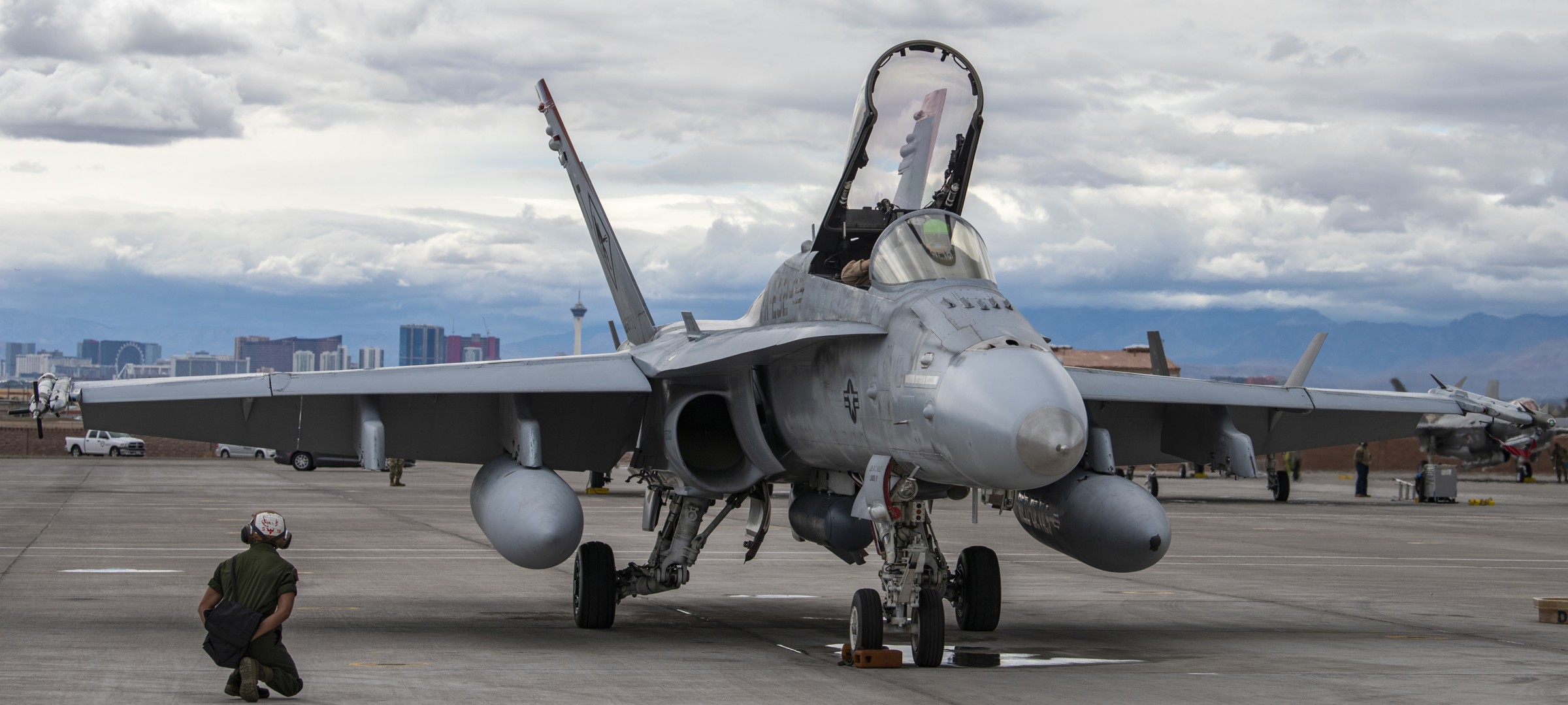 F/A-18C Hornet (VMFA-232) during Exercise Red Flag at Nellis AFB, Nevada - March 2020 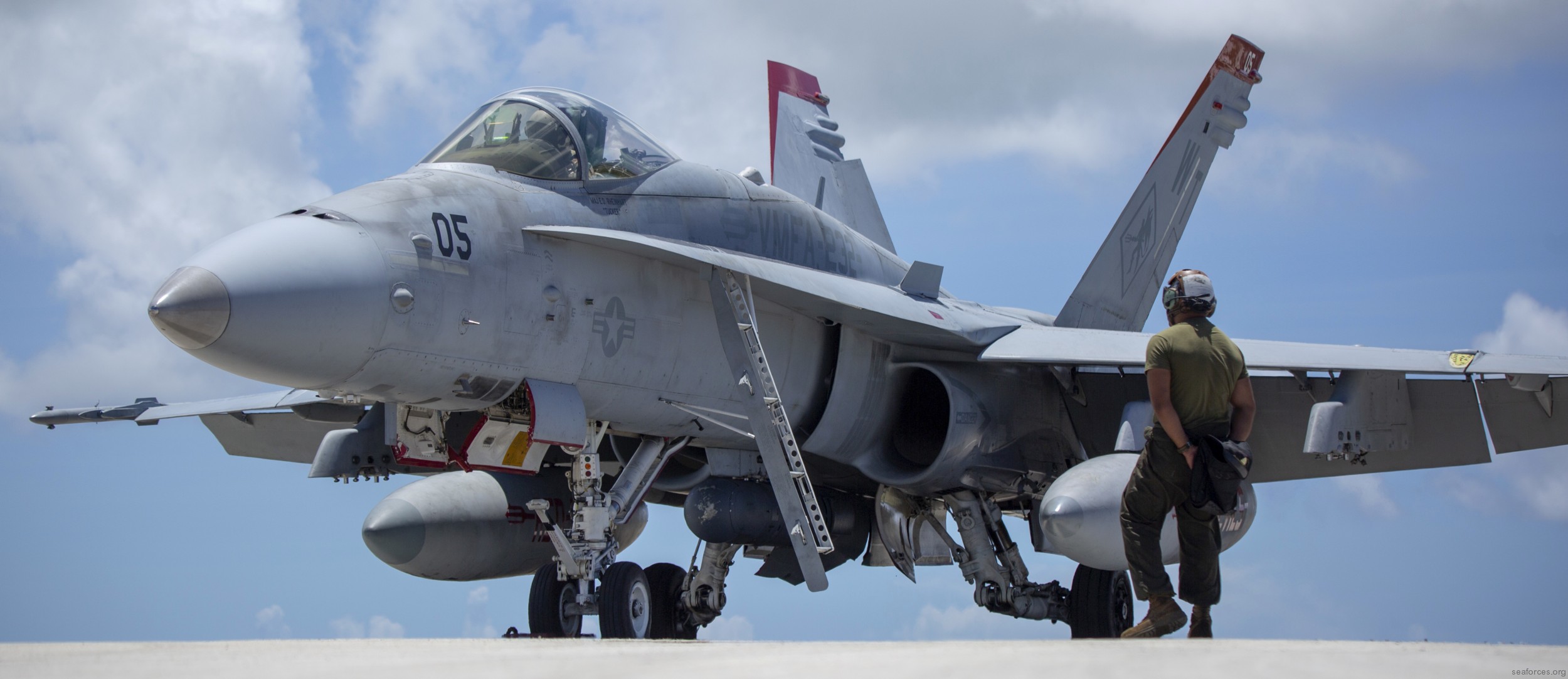 F/A-18C Hornet (VMFA-232) at Andersen Air Force Base (AFB), Guam - June 2019 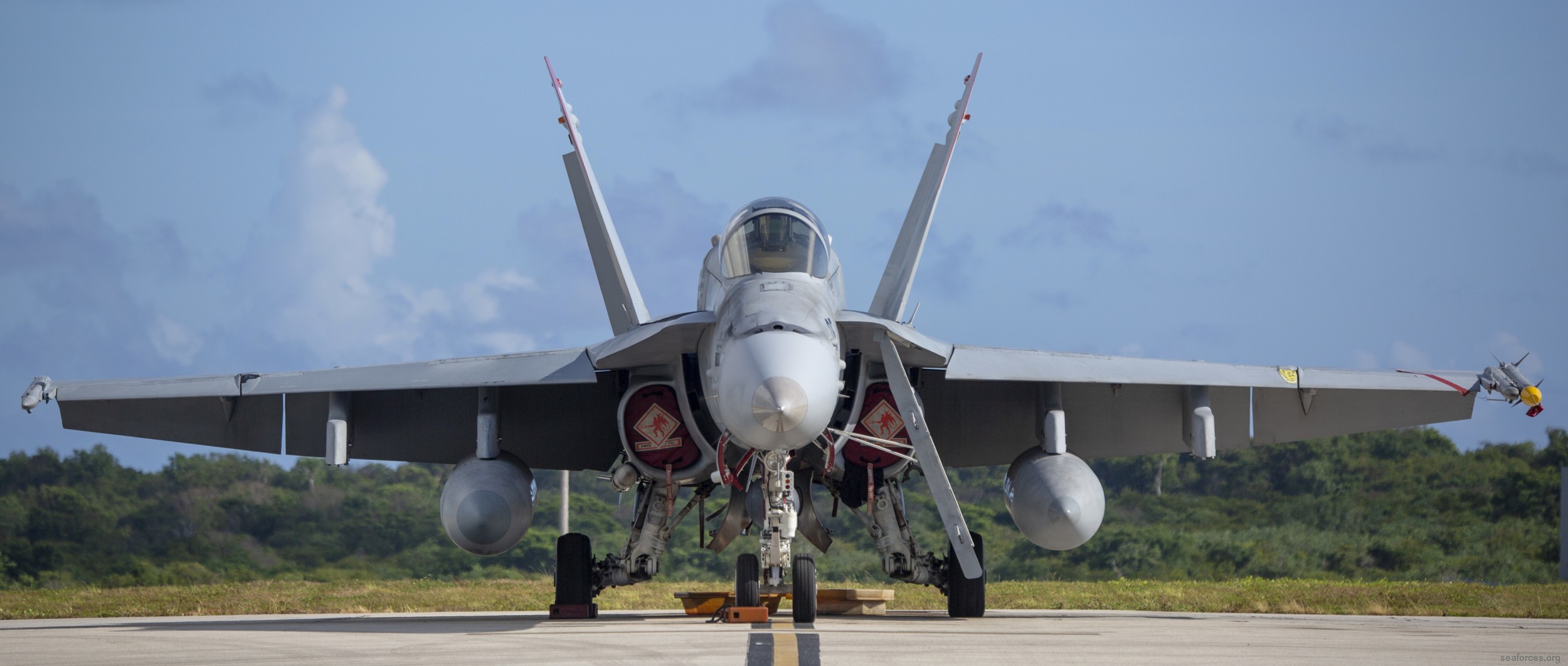 F/A-18C Hornet (VMFA-232) at Andersen Air Force Base (AFB), Guam - June 2019 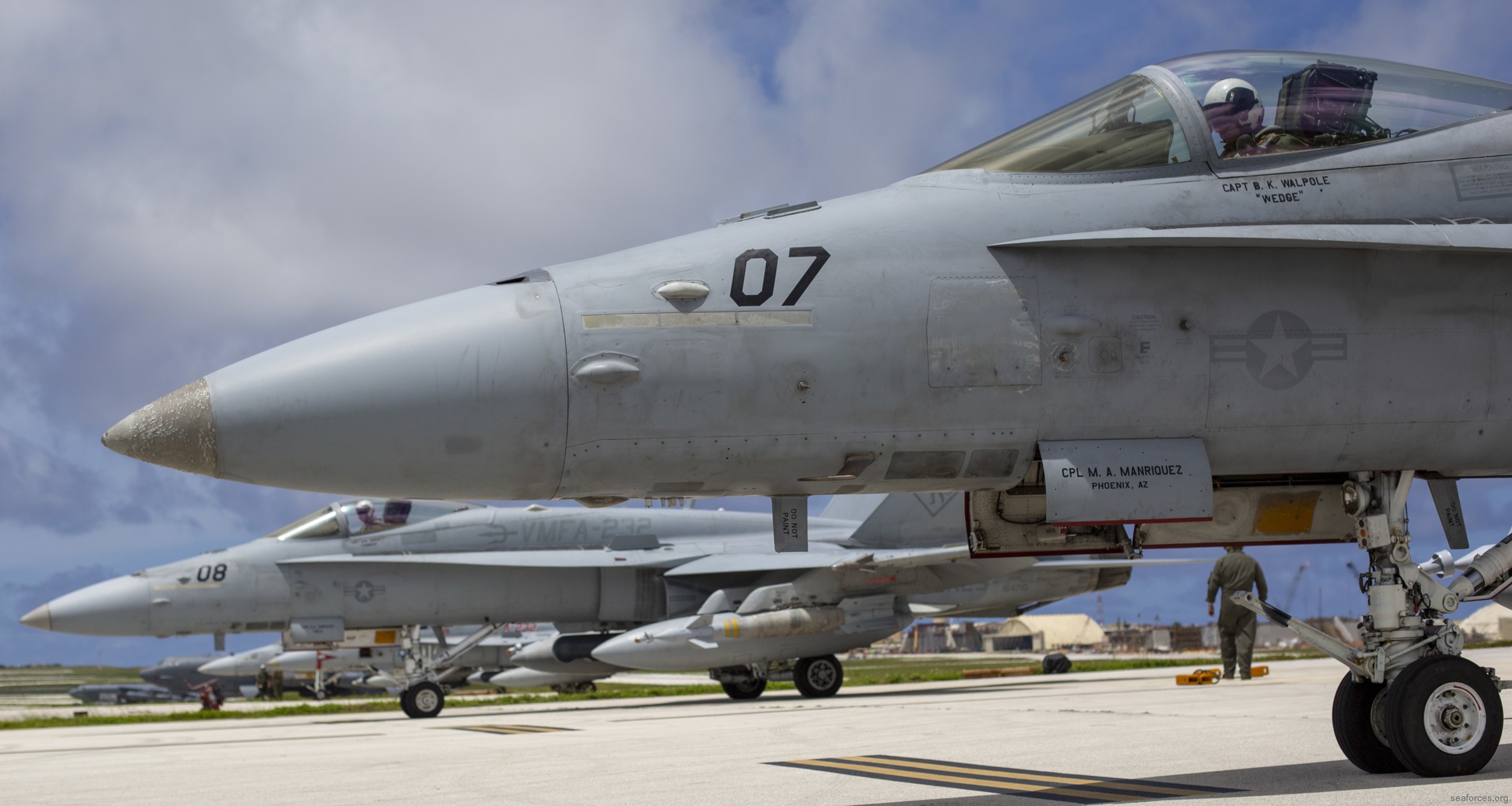 F/A-18C Hornet (VMFA-232) at Andersen Air Force Base (AFB), Guam - June 2019 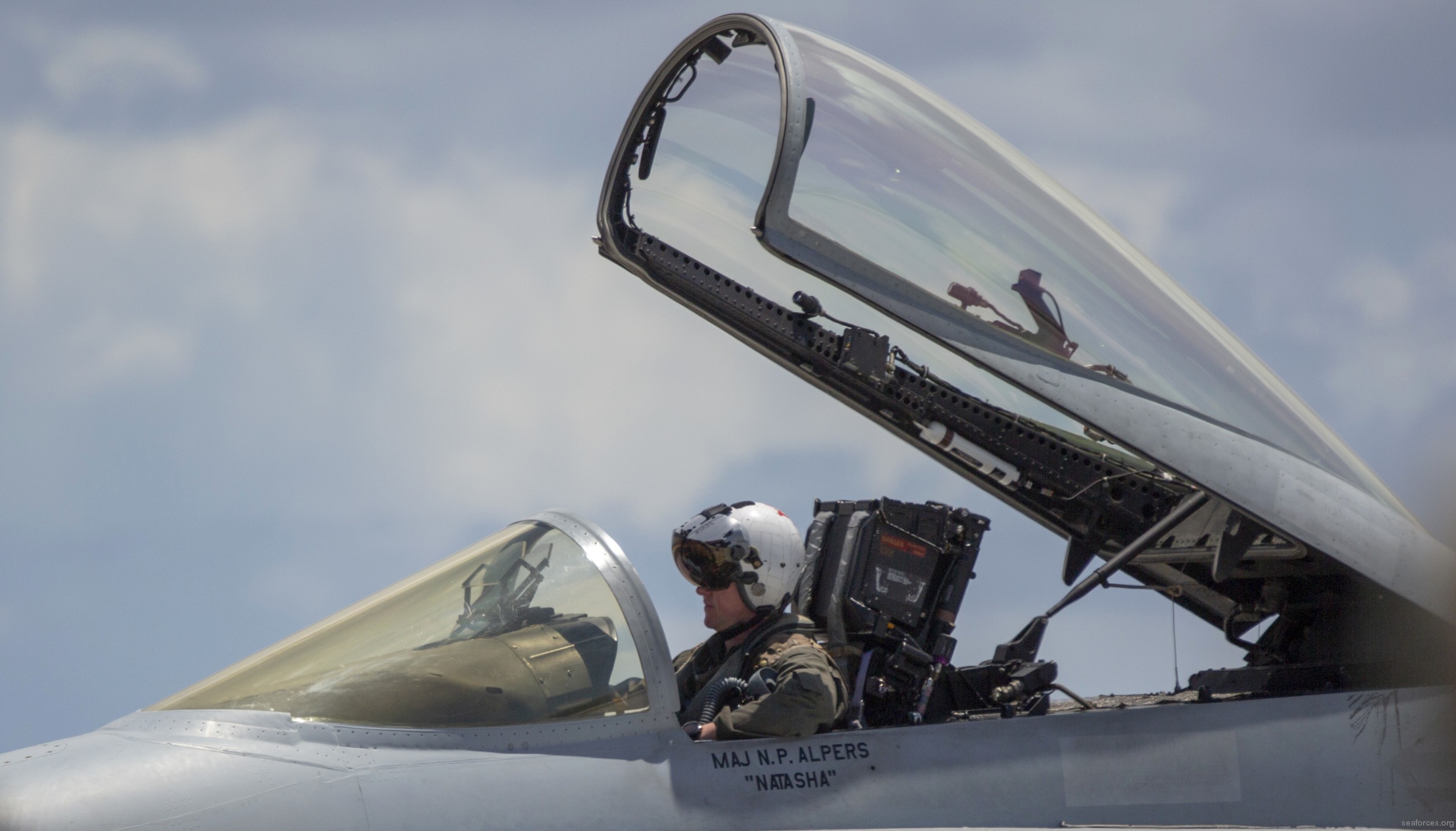 F/A-18C Hornet (VMFA-232) at Andersen Air Force Base (AFB), Guam - June 2019 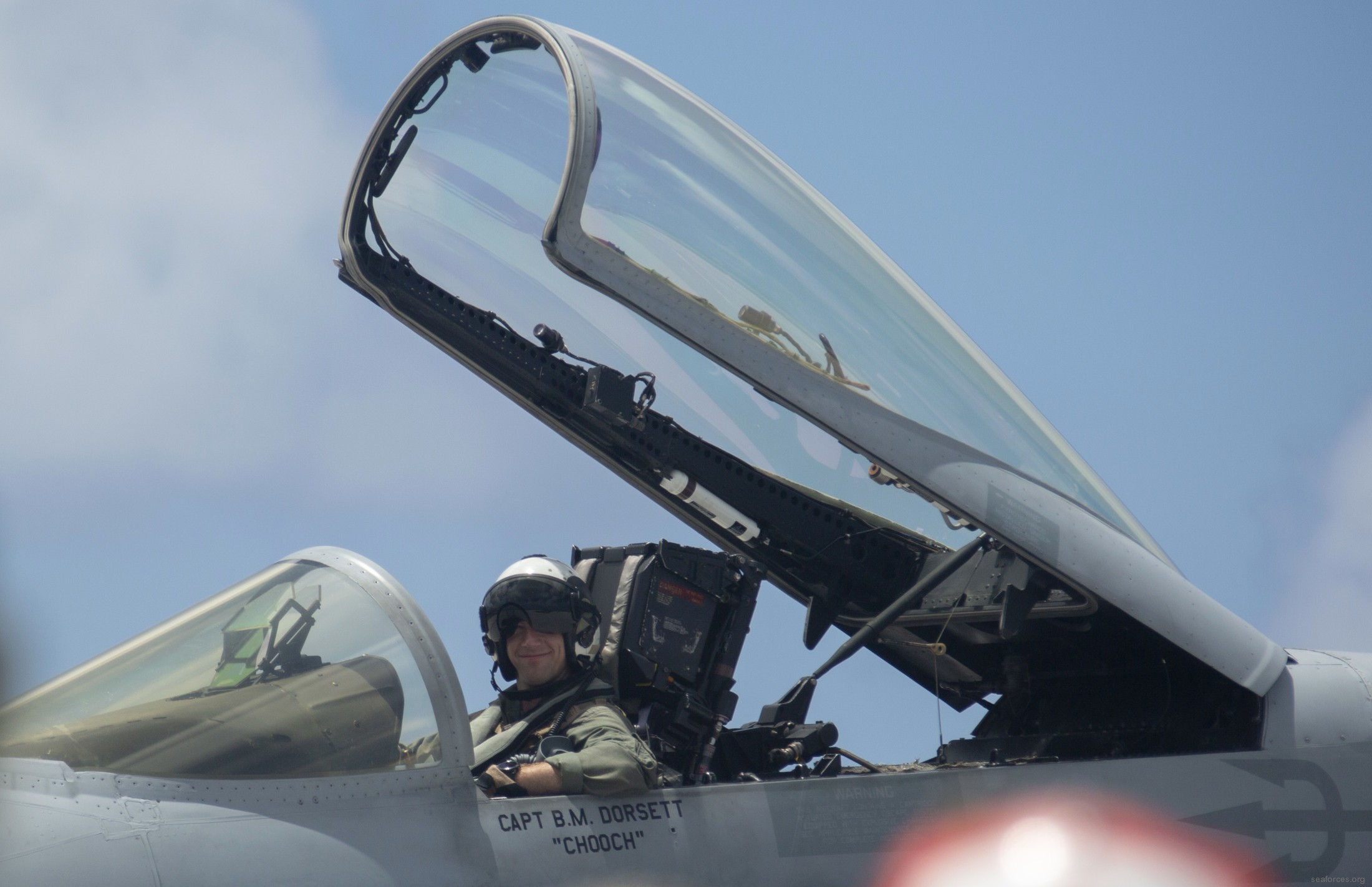 F/A-18C Hornet (VMFA-232) at Andersen Air Force Base (AFB), Guam - June 2019 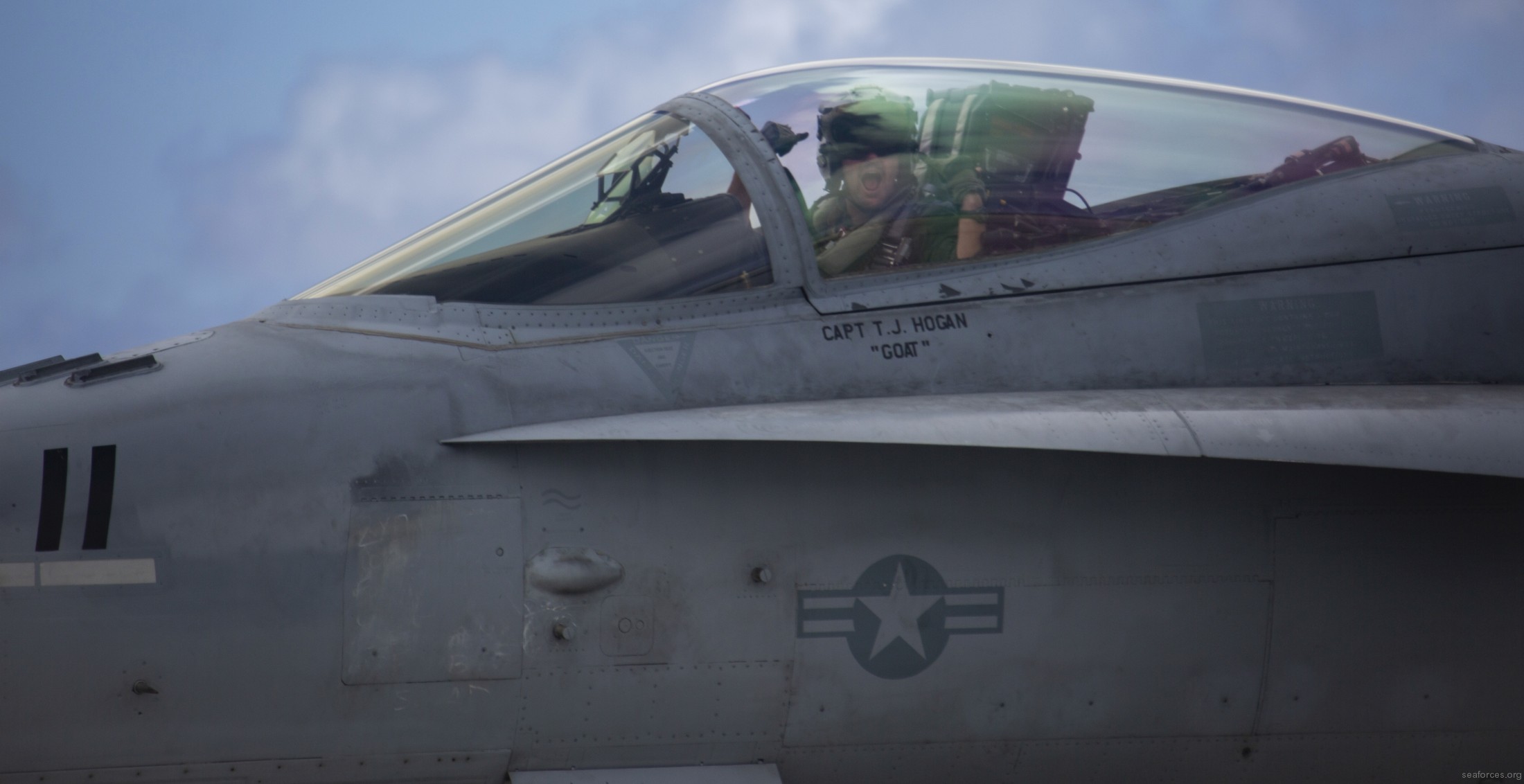 F/A-18C Hornet (VMFA-232) at Andersen Air Force Base (AFB), Guam - June 2019 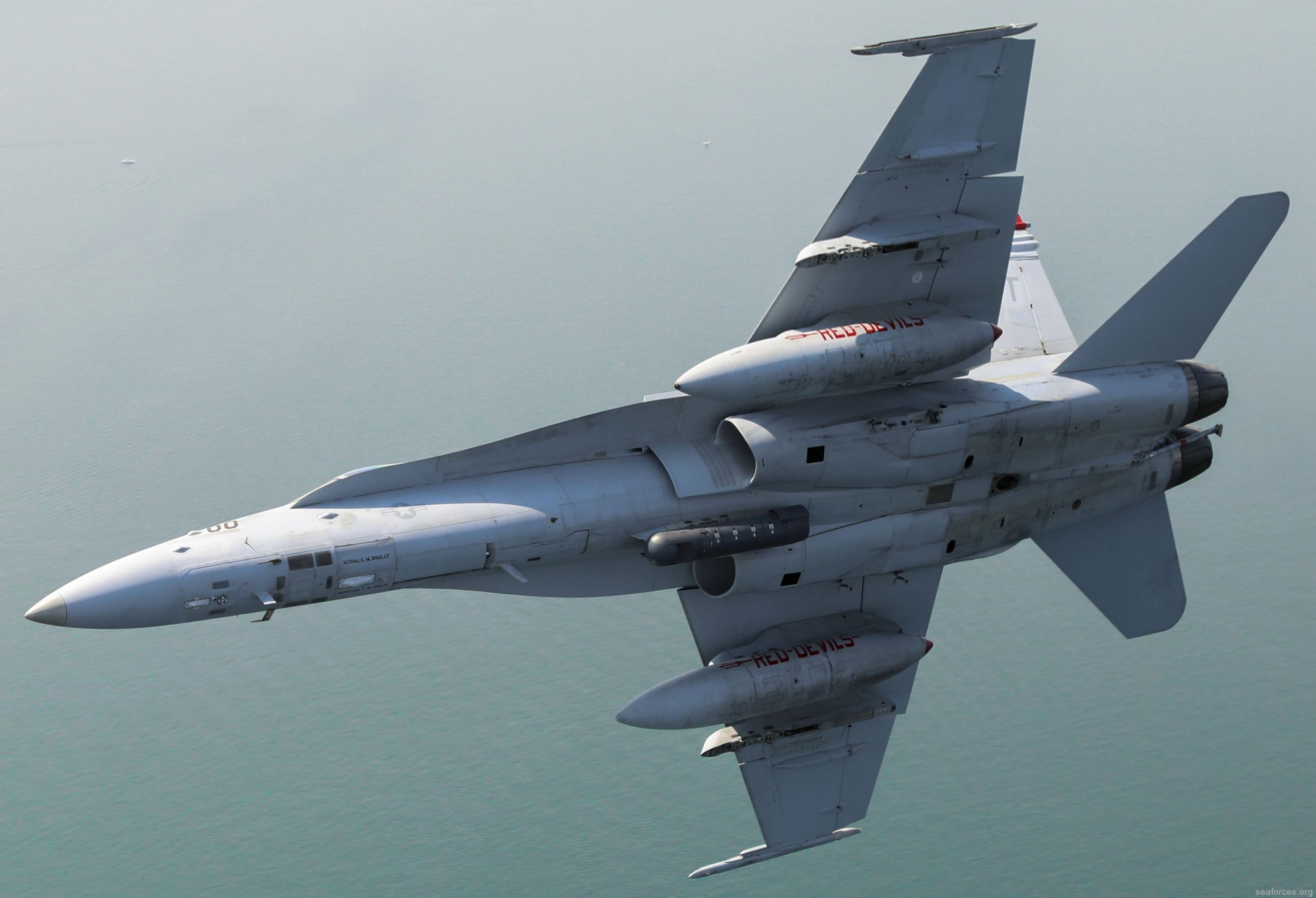 F/A-18C Hornet (VMFA-232) over Japanese waters - May 2019 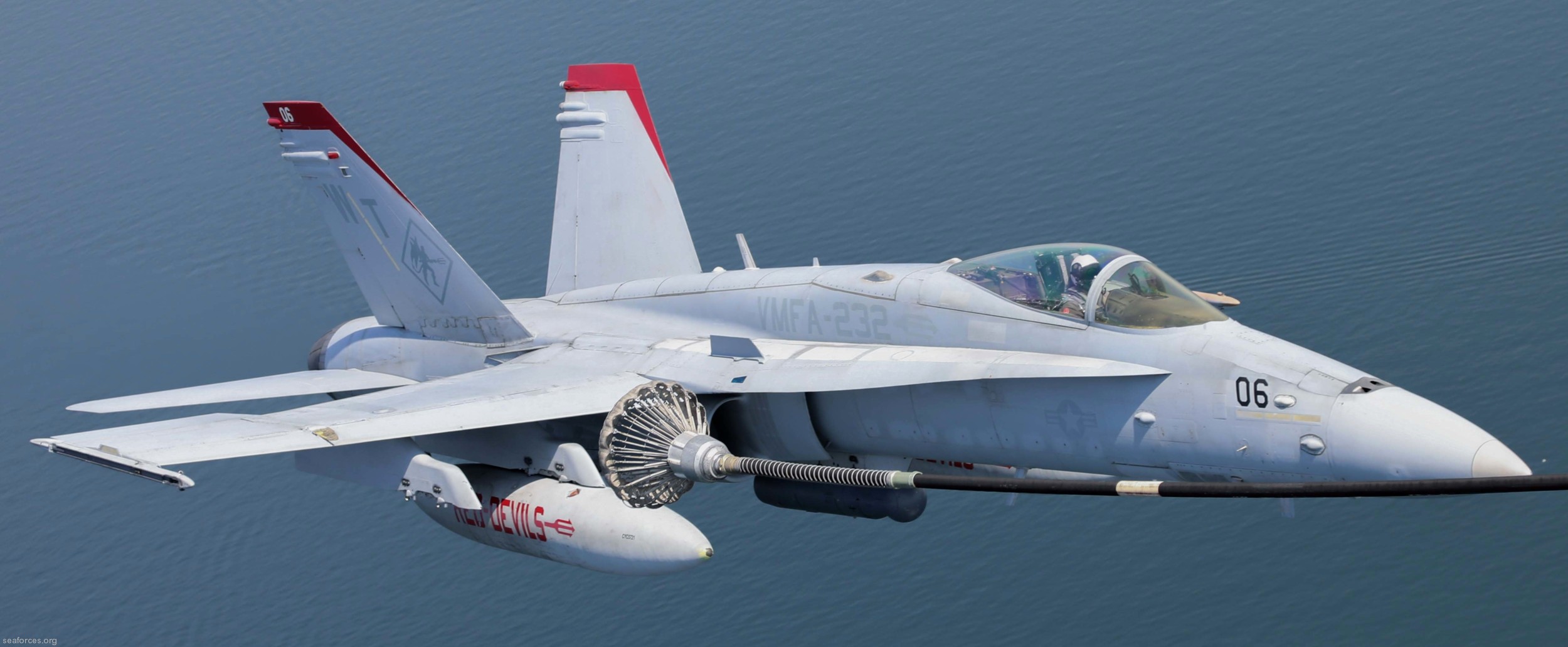 F/A-18C Hornet (VMFA-232) over Japanese waters - May 2019 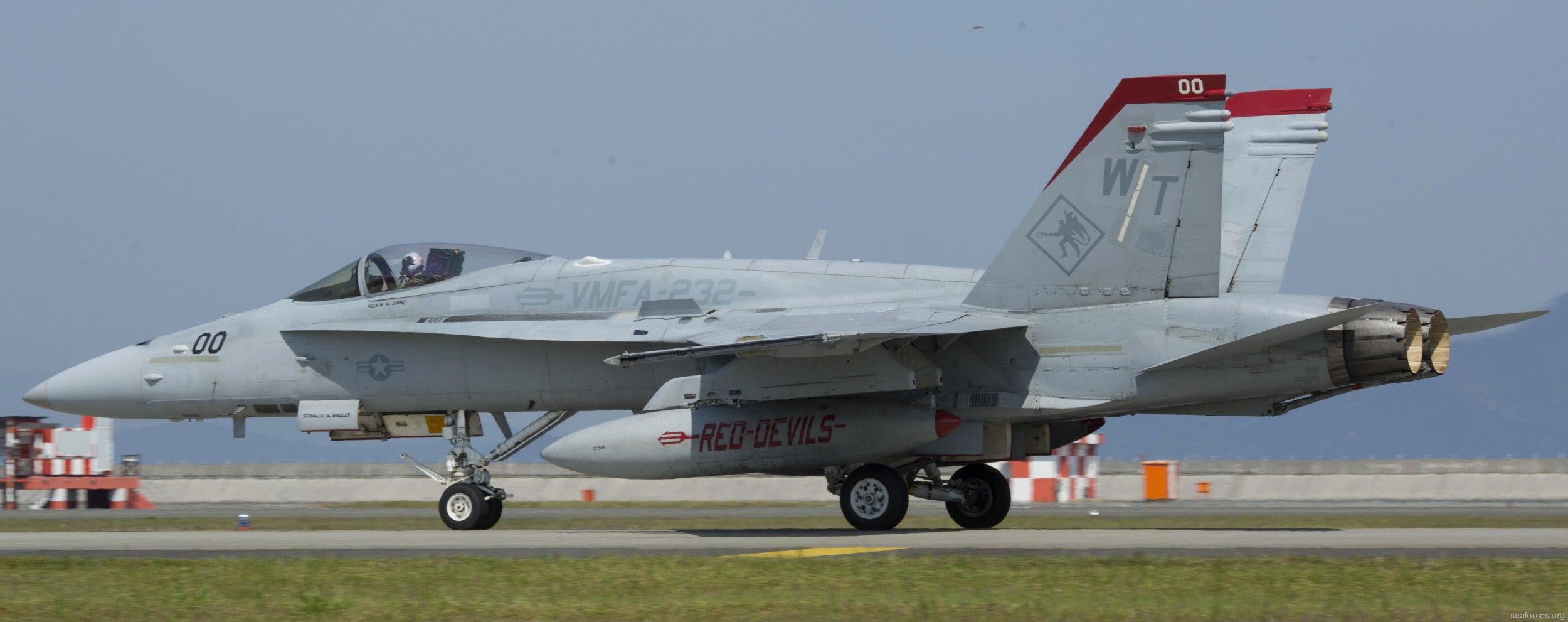 F/A-18C Hornet (VMFA-232) at MCAS Iwakuni, Japan - May 2019 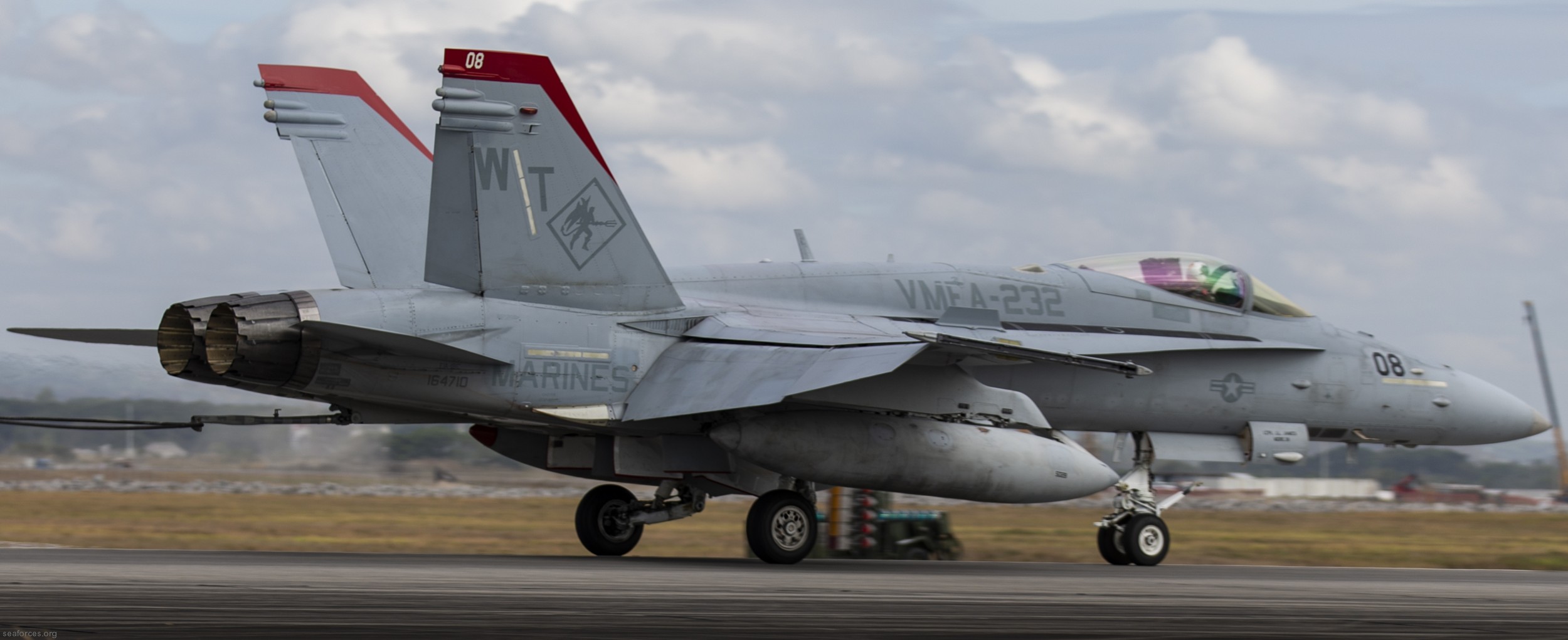 F/A-18C Hornet (VMFA-232) during exercise Balikatan - Clark Air Base, Philippines - April 2019 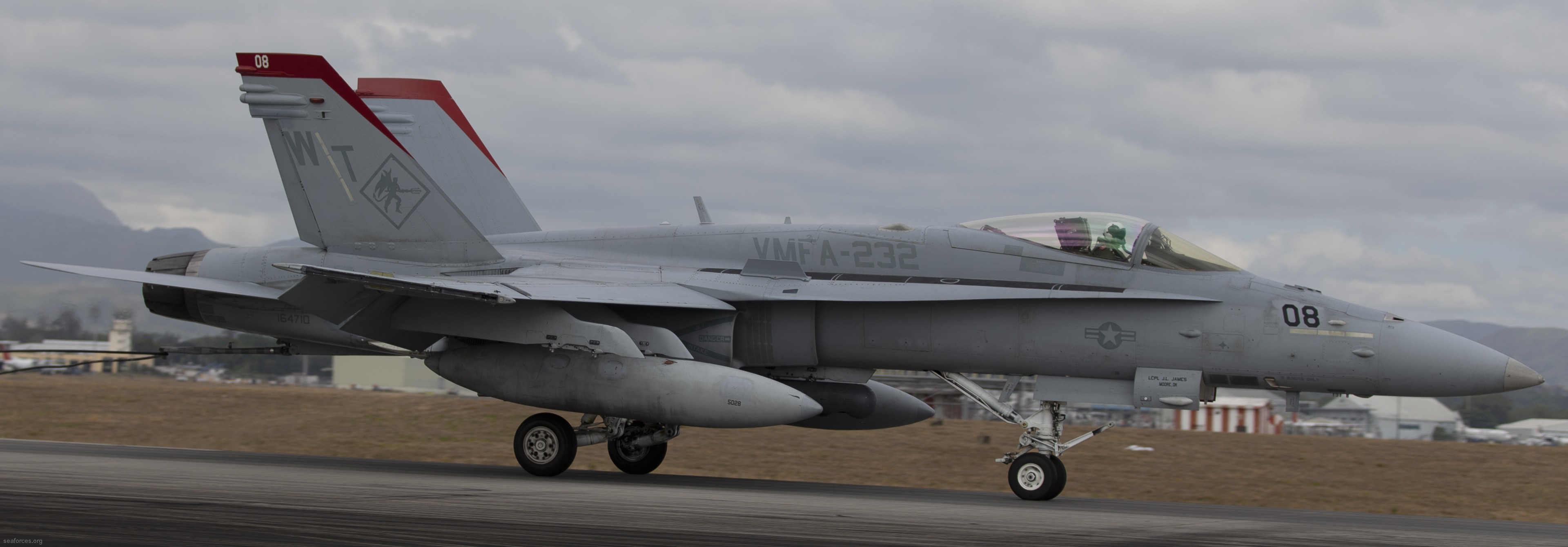 F/A-18C Hornet (VMFA-232) during exercise Balikatan - Clark Air Base, Philippines - April 2019 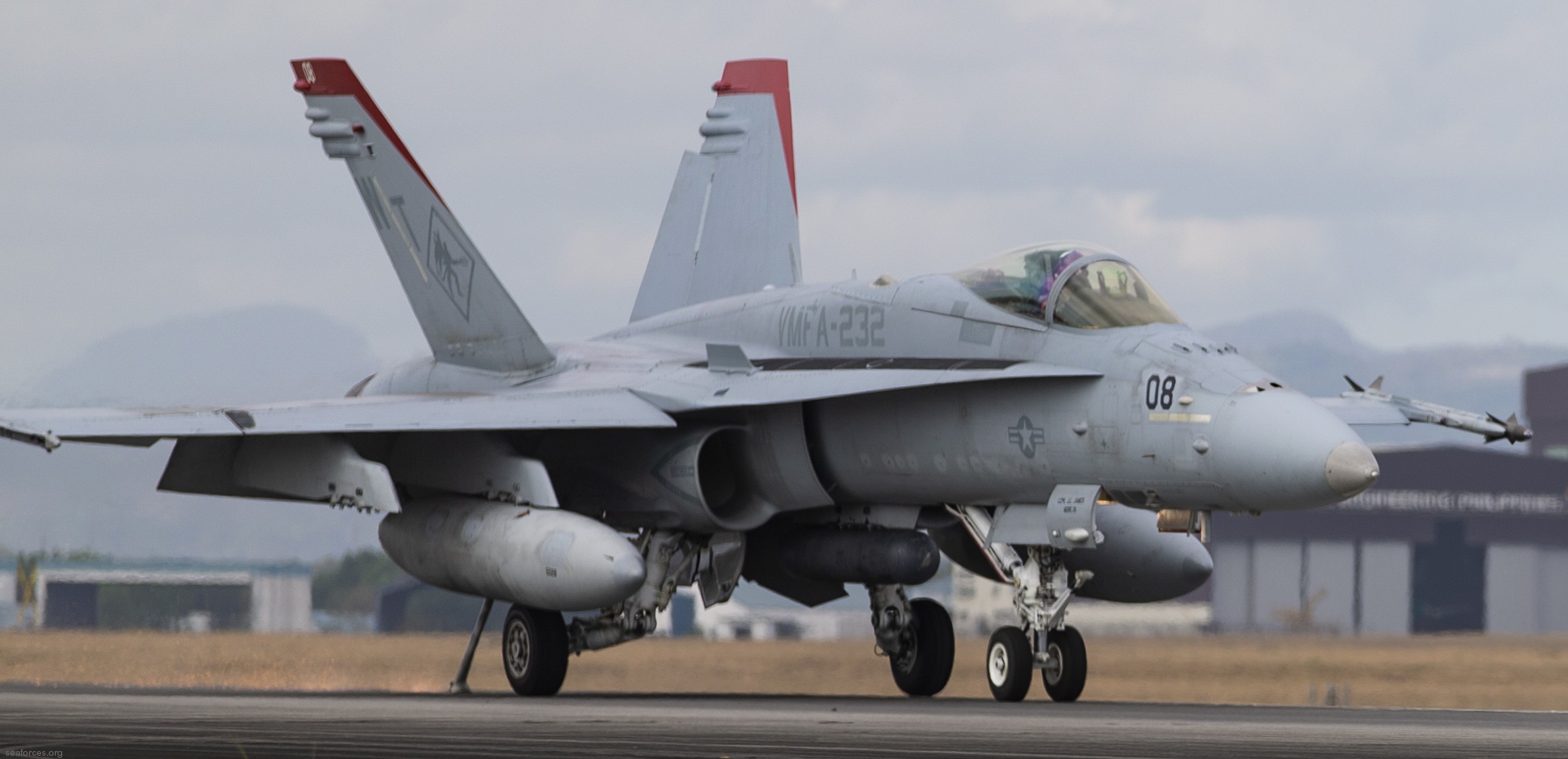 F/A-18C Hornet (VMFA-232) during exercise Balikatan - Clark Air Base, Philippines - April 2019 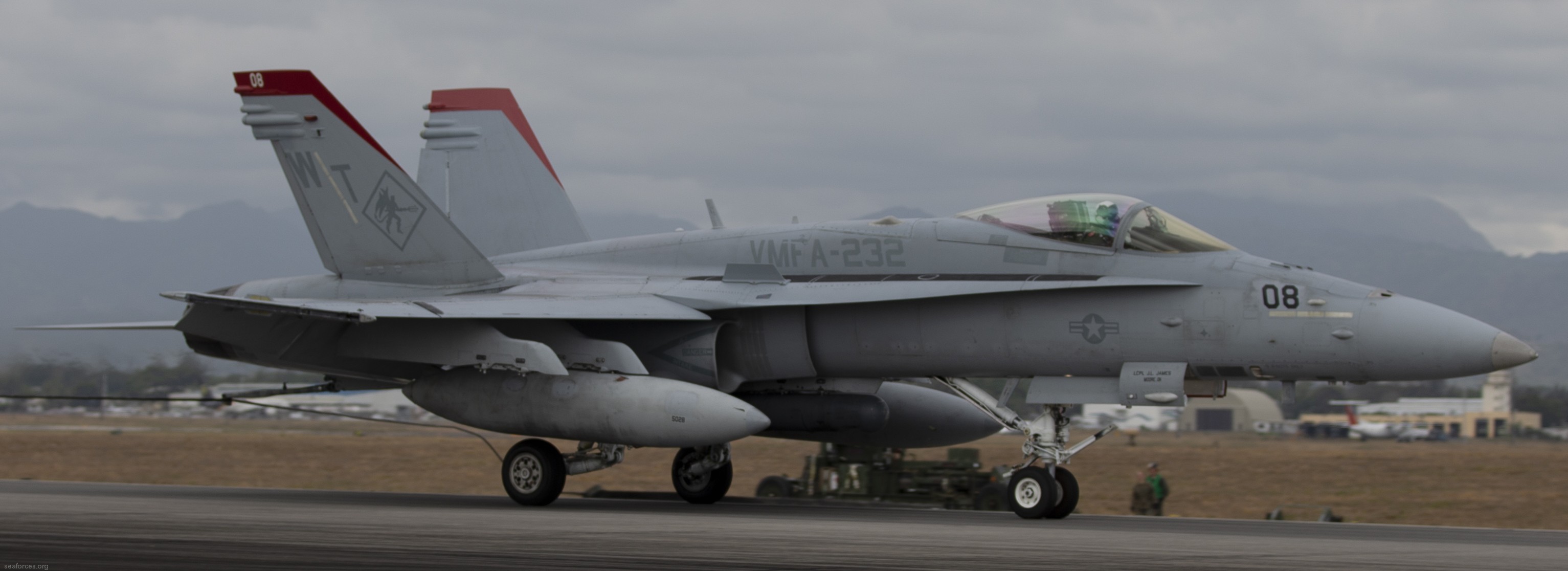 F/A-18C Hornet (VMFA-232) during exercise Balikatan - Clark Air Base, Philippines - April 2019 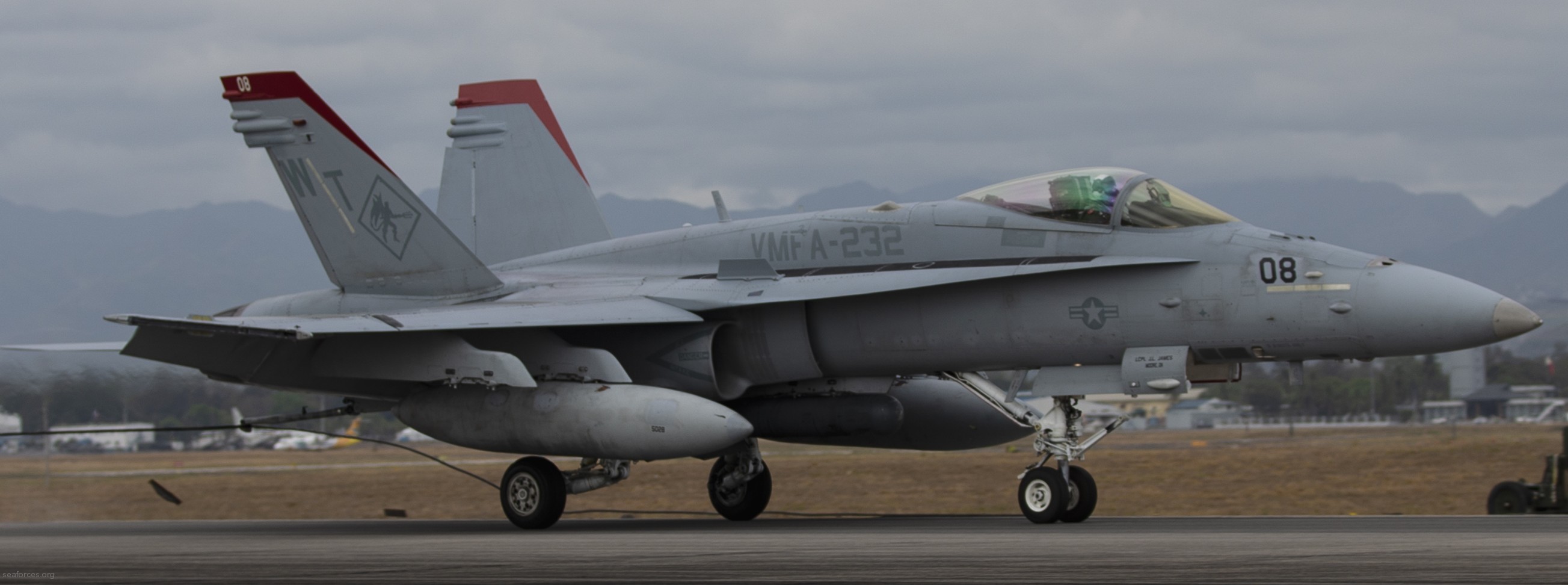 F/A-18C Hornet (VMFA-232) during exercise Balikatan - Clark Air Base, Philippines - April 2019 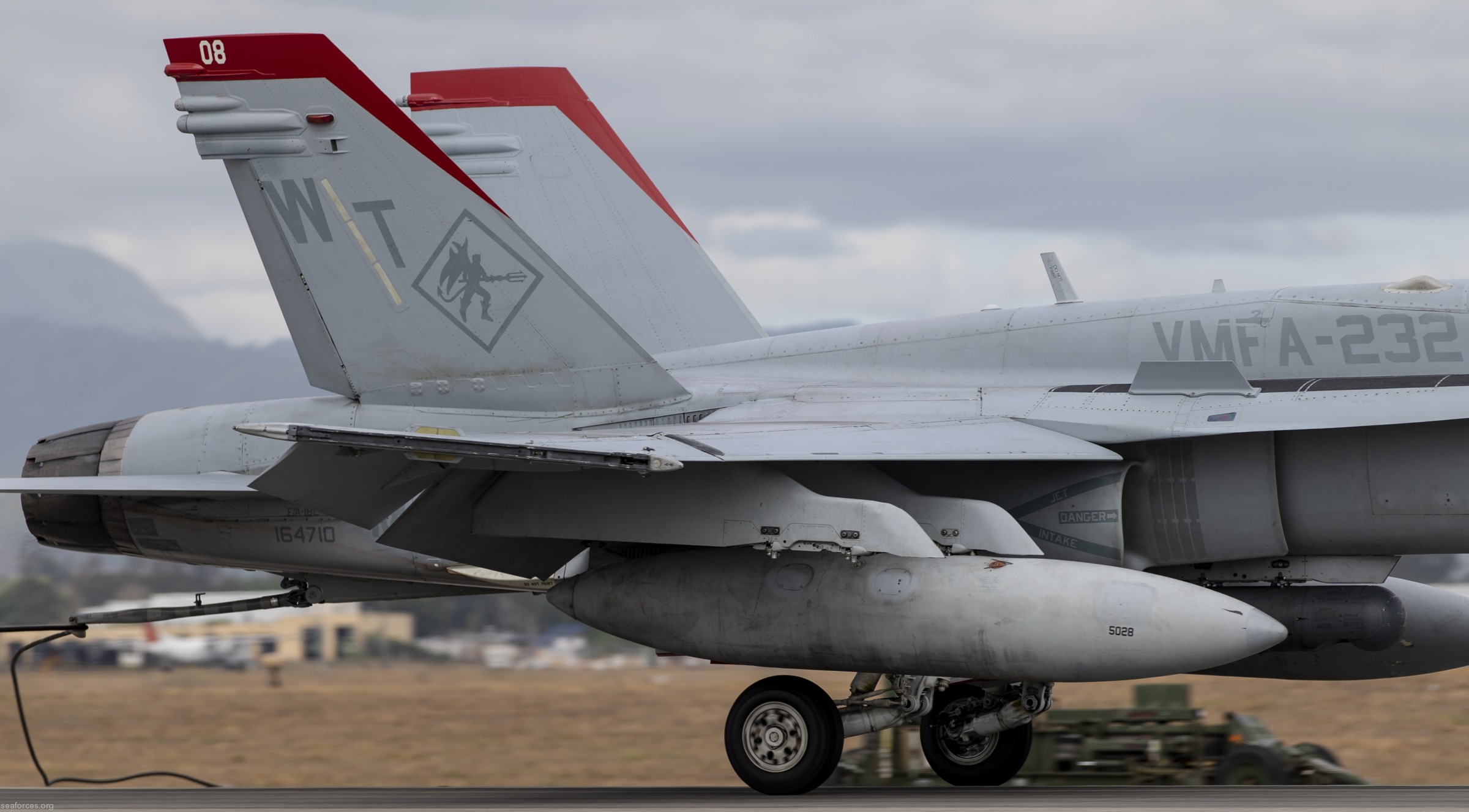 F/A-18C Hornet (VMFA-232) during exercise Balikatan - Clark Air Base, Philippines - April 2019 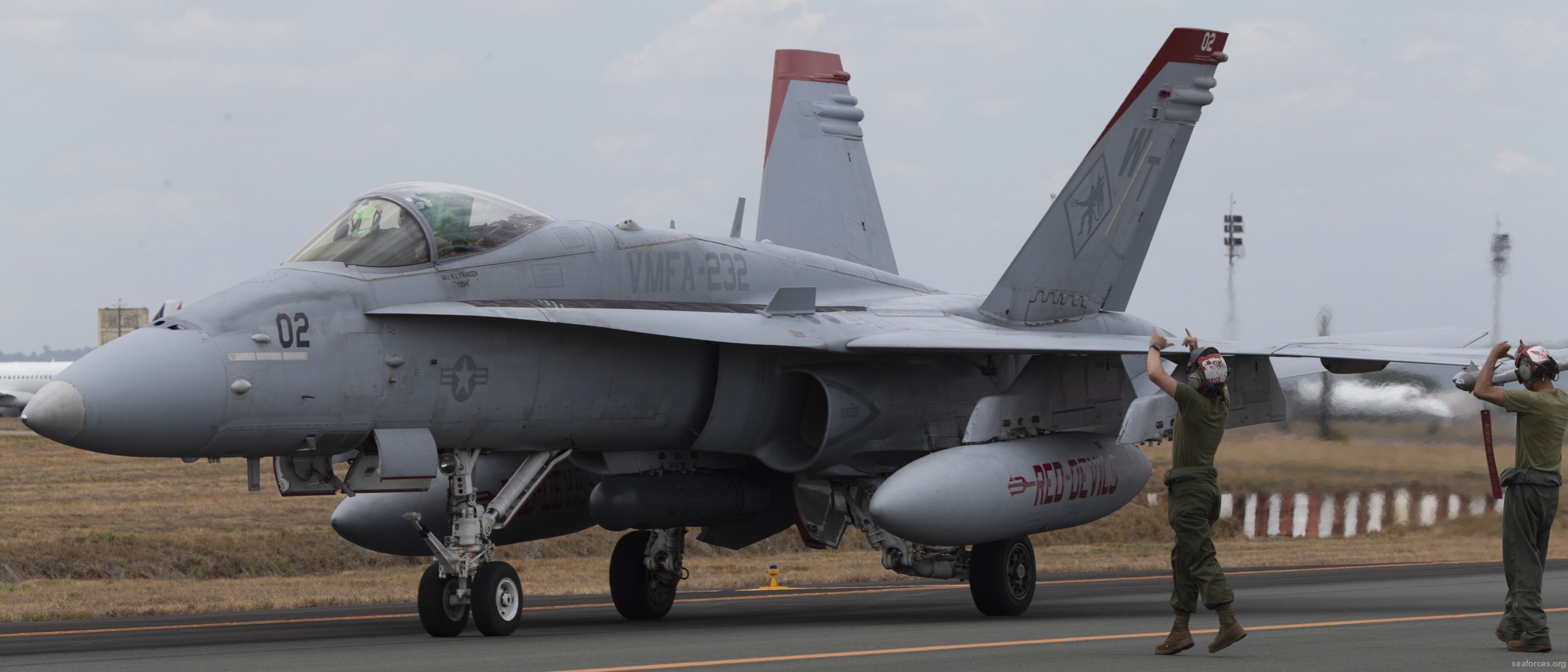 F/A-18C Hornet (VMFA-232) during exercise Balikatan - Clark Air Base, Philippines - April 2019 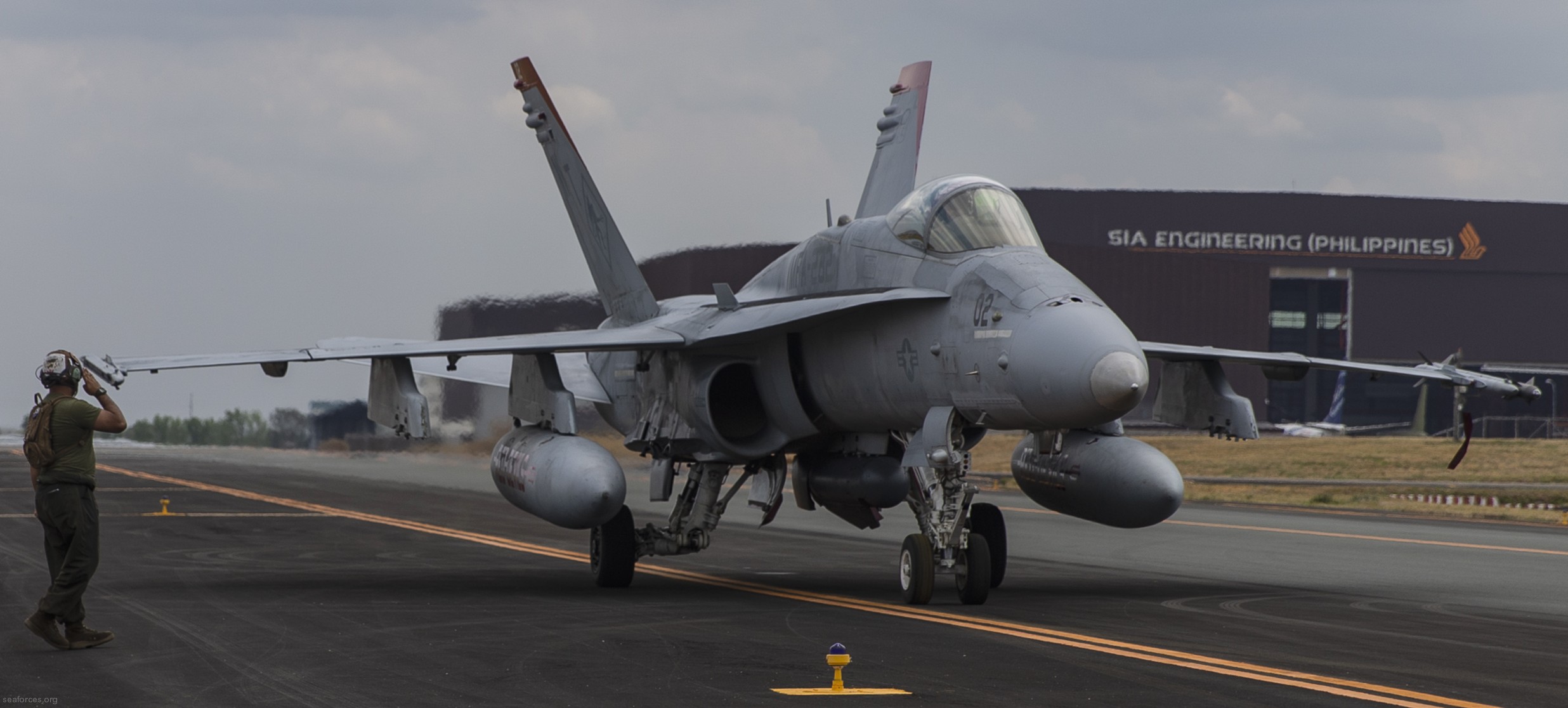 F/A-18C Hornet (VMFA-232) during exercise Balikatan - Clark Air Base, Philippines - April 2019 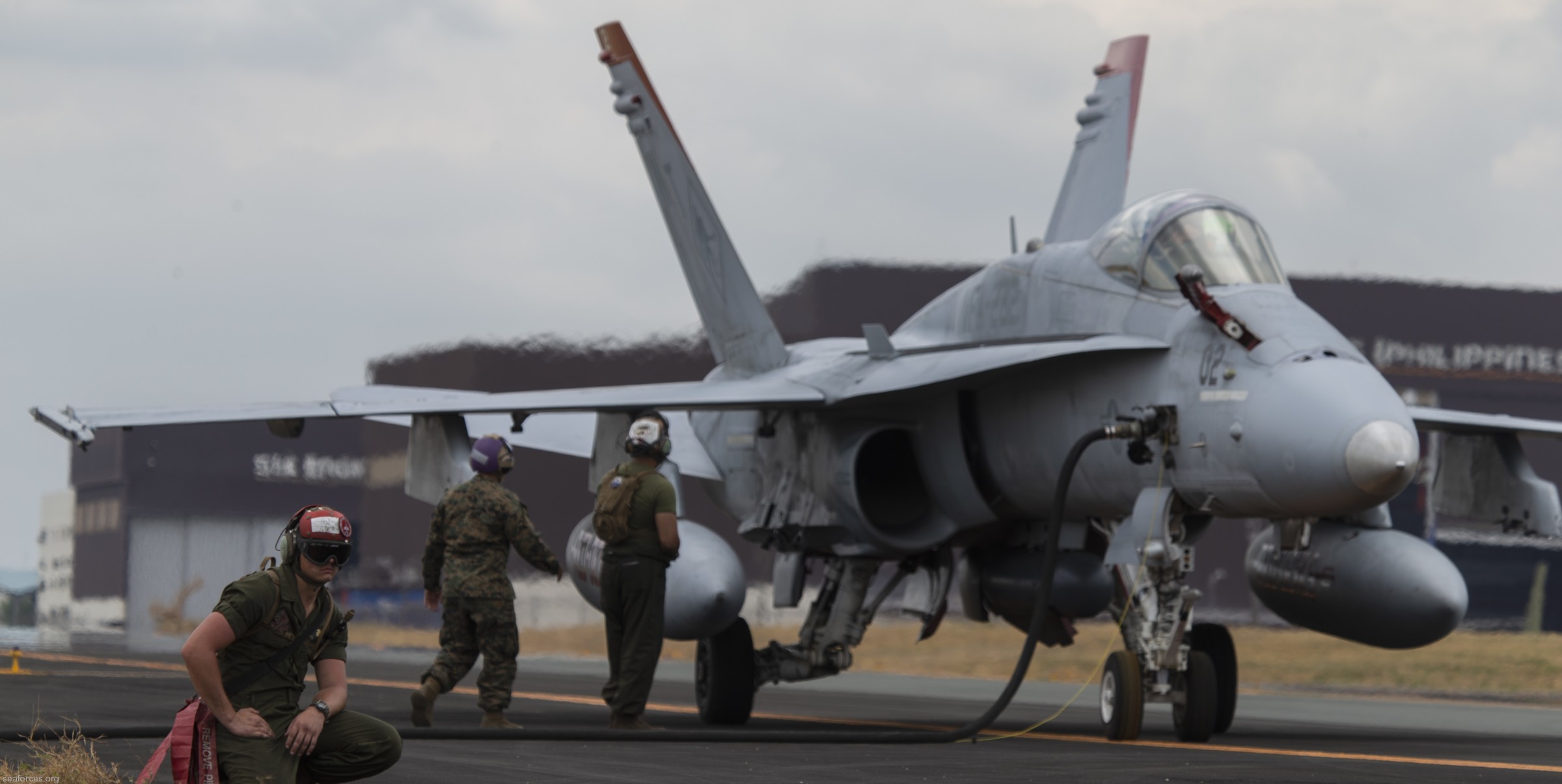 F/A-18C Hornet (VMFA-232) during exercise Balikatan - Clark Air Base, Philippines - April 2019  F/A-18C Hornet (VMFA-232) during exercise Balikatan - Clark Air Base, Philippines - March 2019 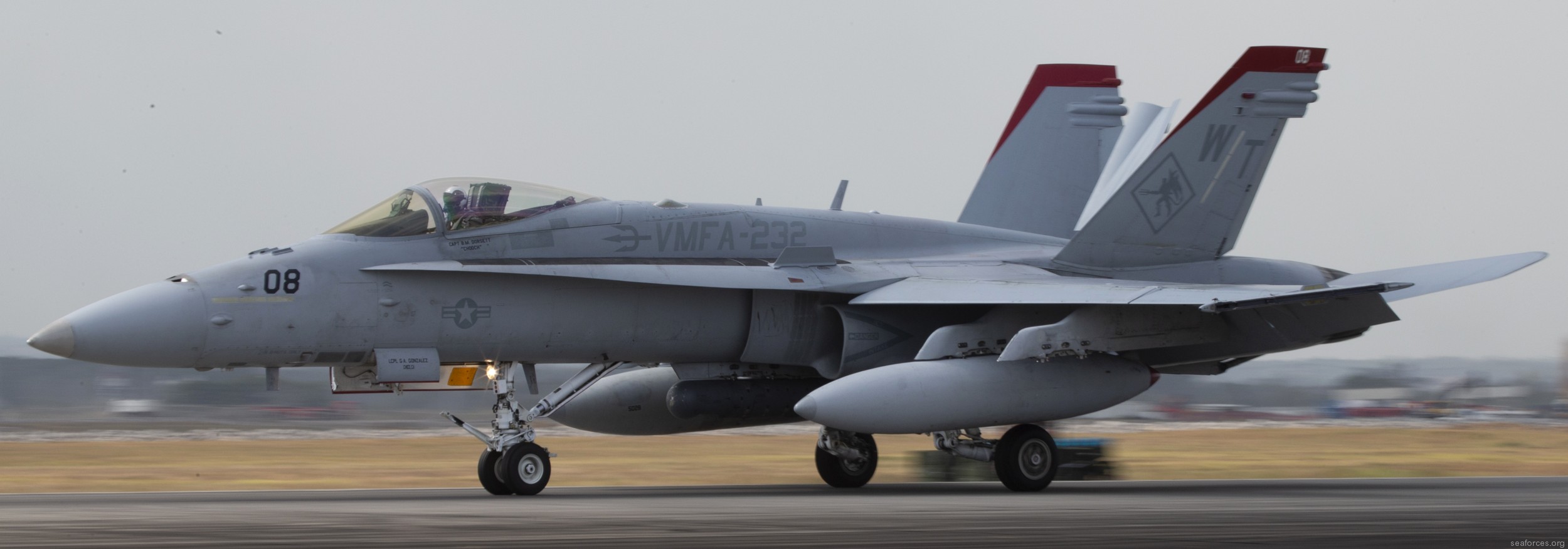 F/A-18C Hornet (VMFA-232) during exercise Balikatan - Clark Air Base, Philippines - March 2019 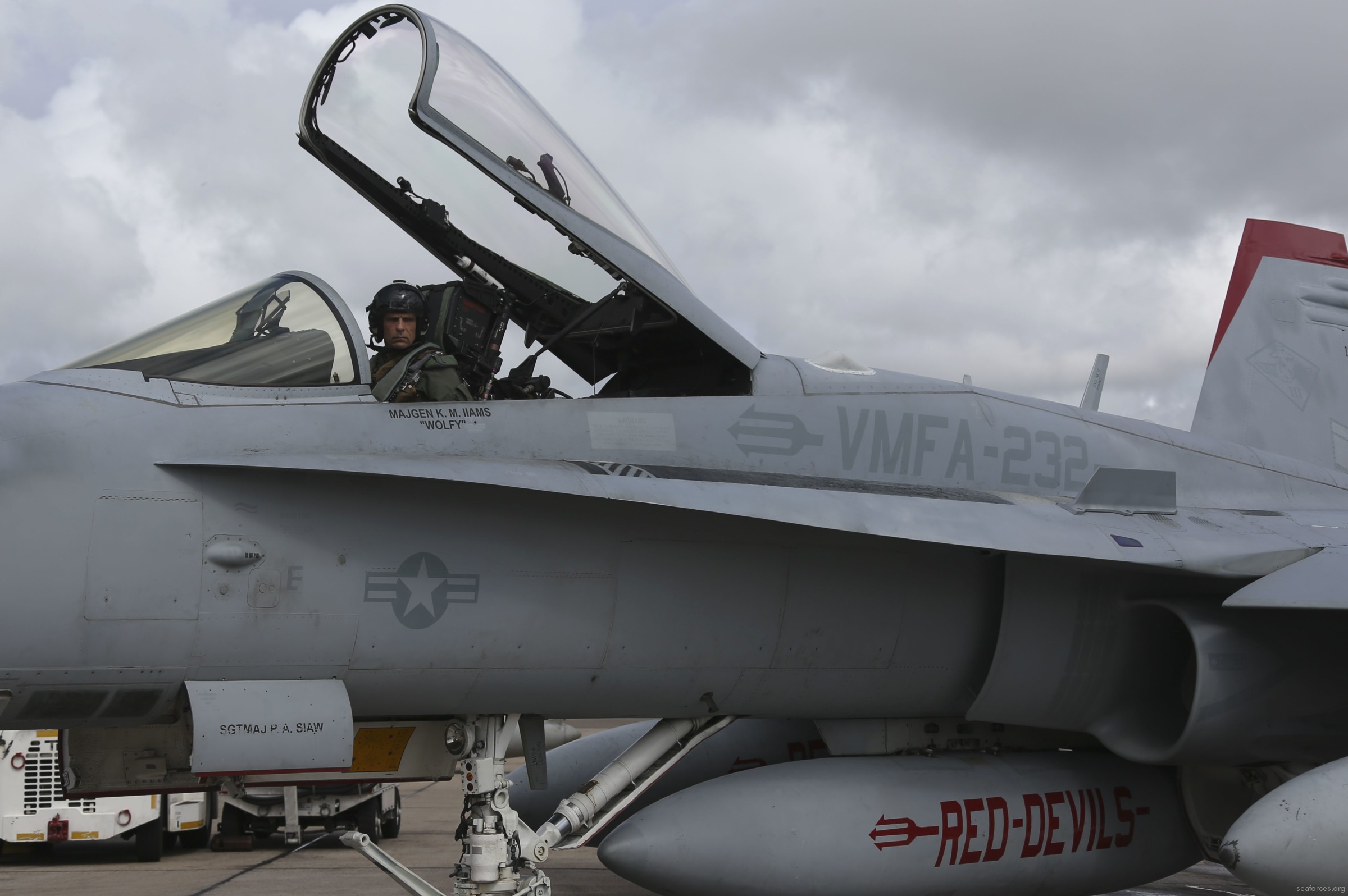 F/A-18C Hornet (VMFA-232) departing MCAS Miramar, California - March 2019 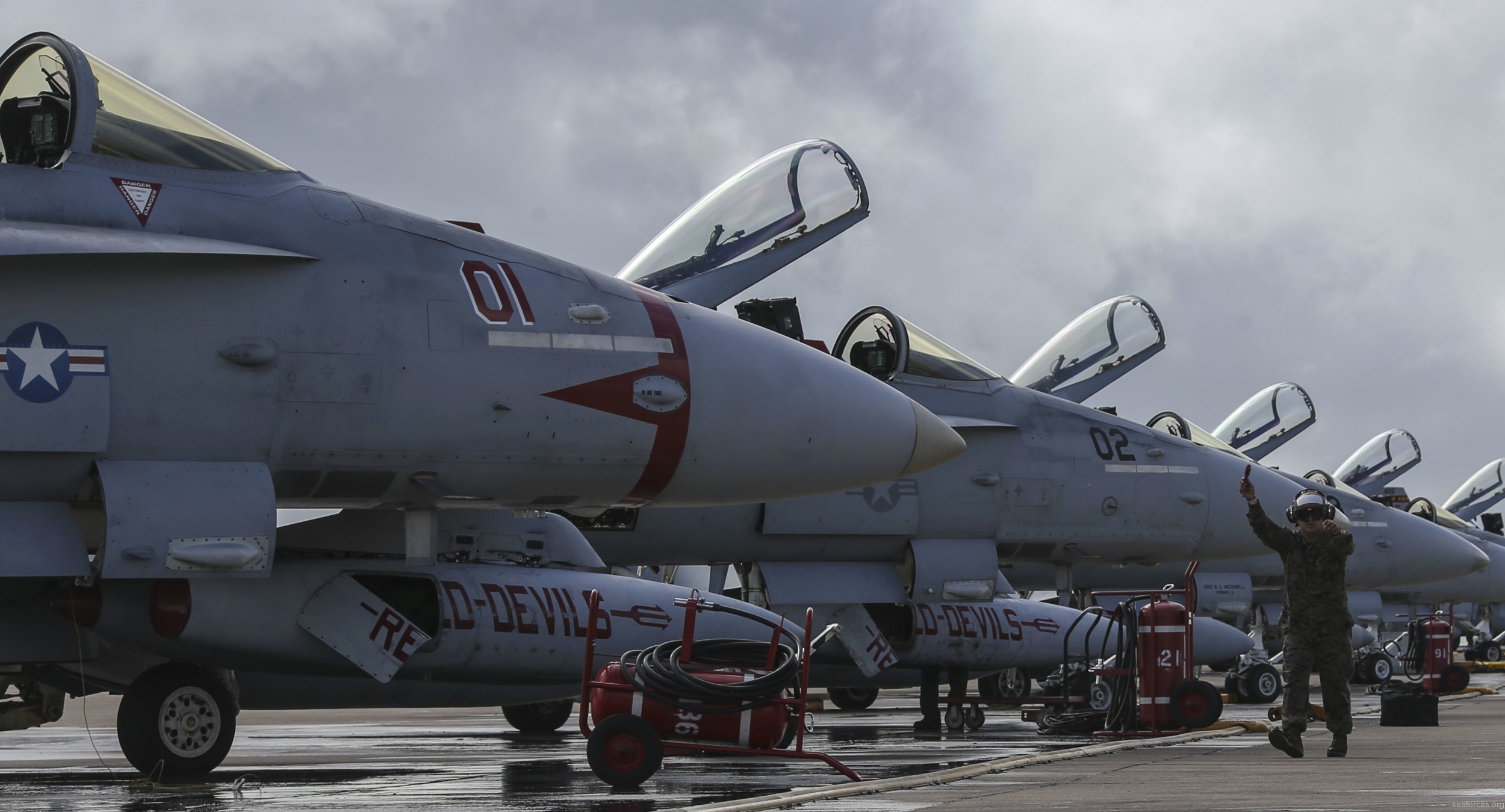 F/A-18C Hornet (VMFA-232) departing MCAS Miramar, California - March 2019 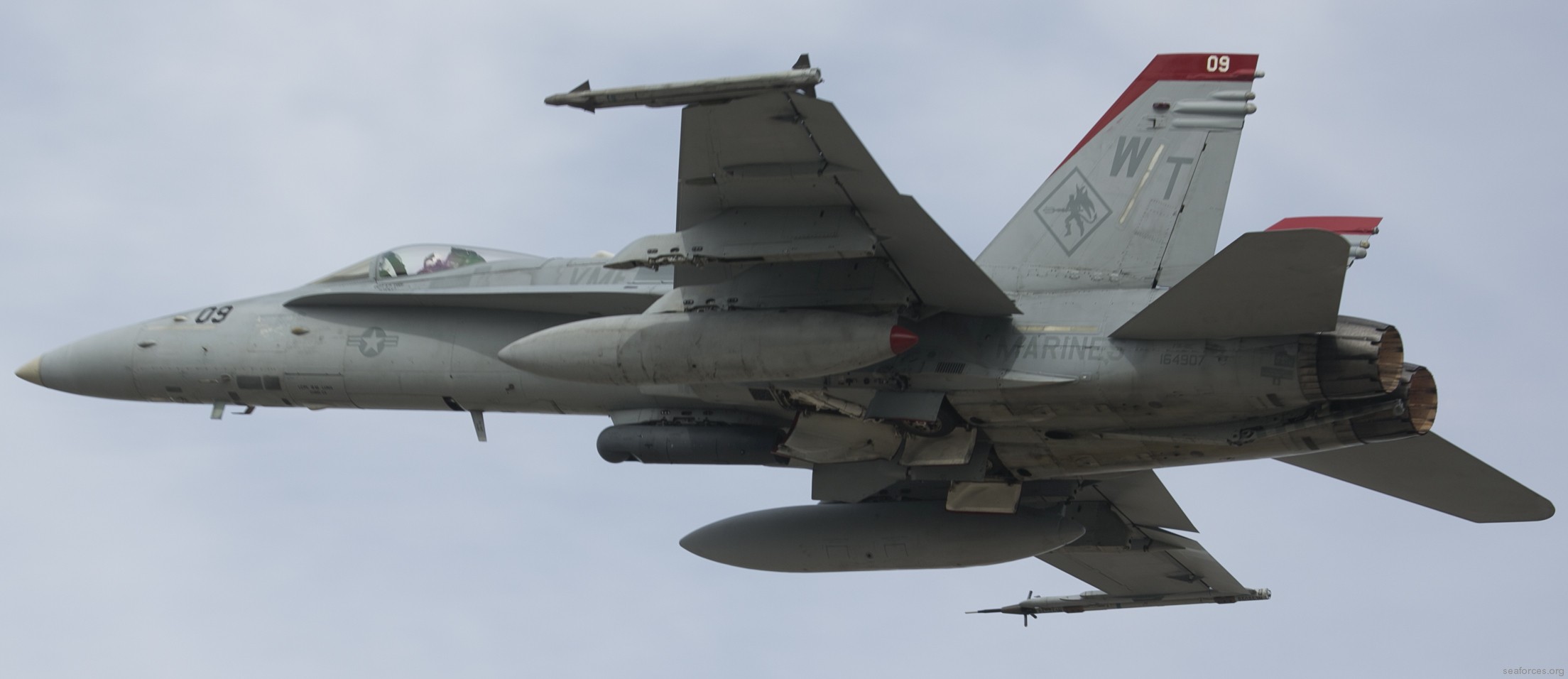 F/A-18C Hornet (VMFA-232) at MCAS Miramar, California - February 2019 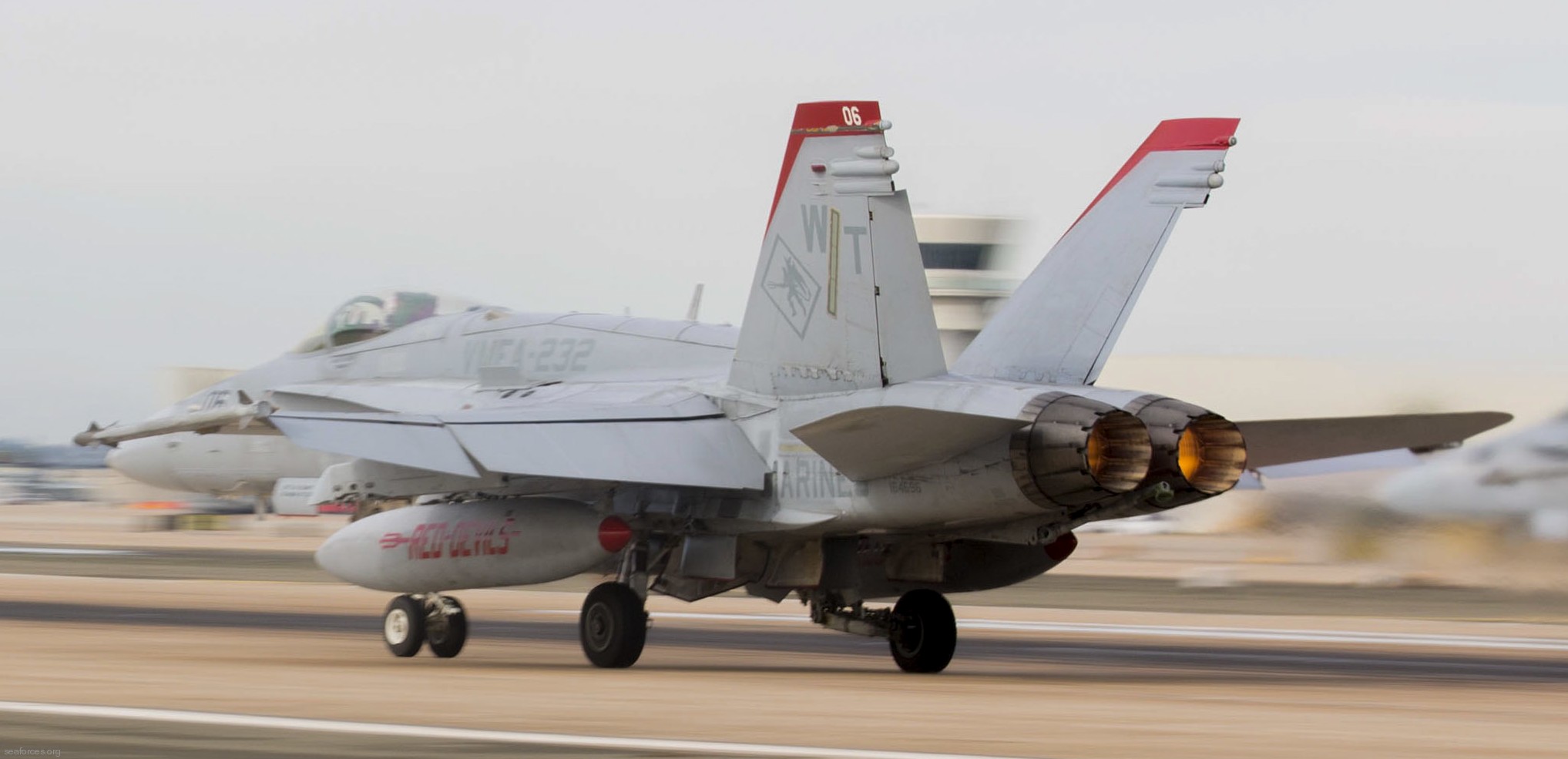 F/A-18C Hornet (VMFA-232) at MCAS Miramar, California - February 2019 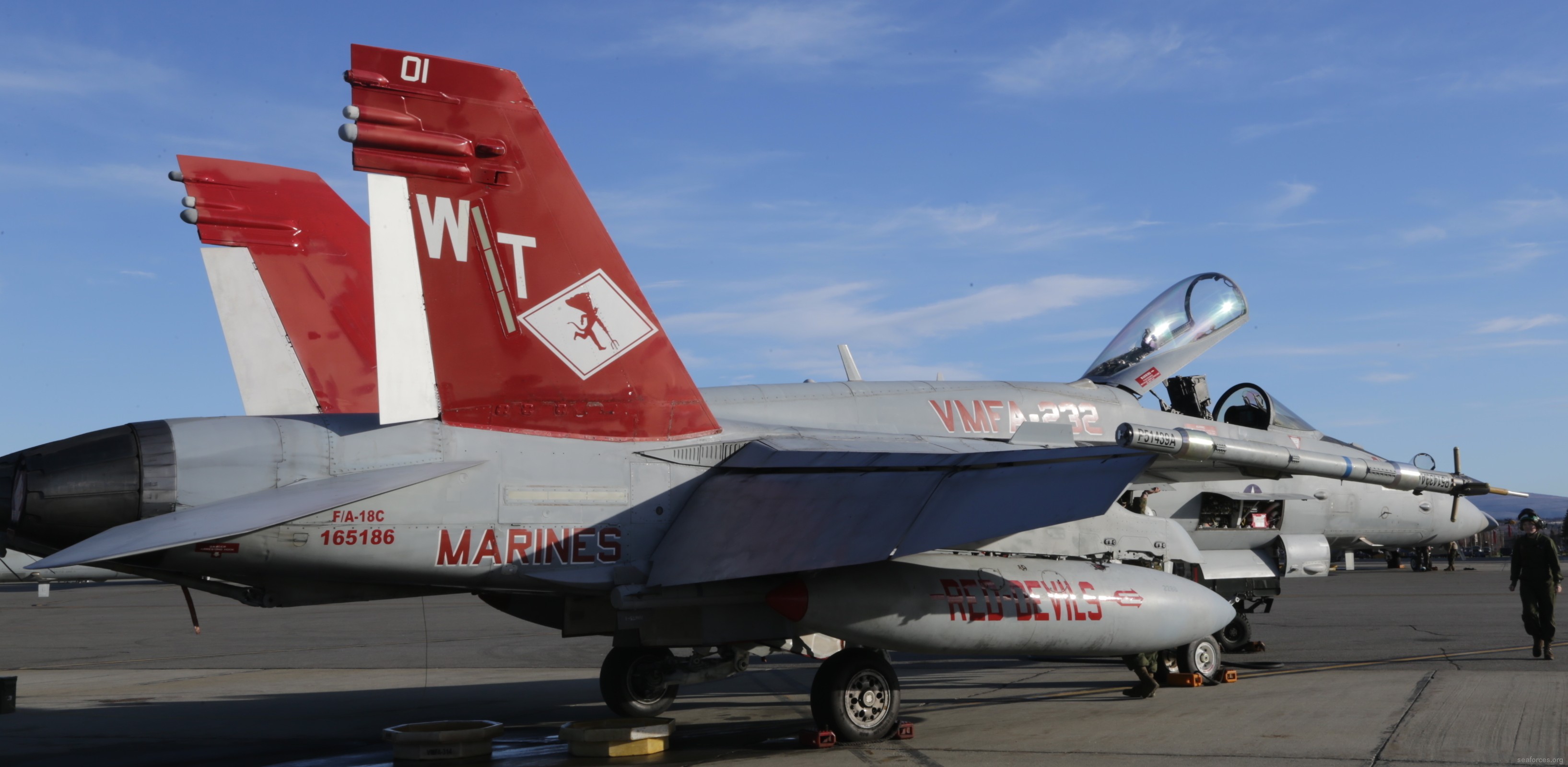 F/A-18C Hornet (VMFA-232) during exercise Red Flag at Eielson AFB, Alaska - October 2018 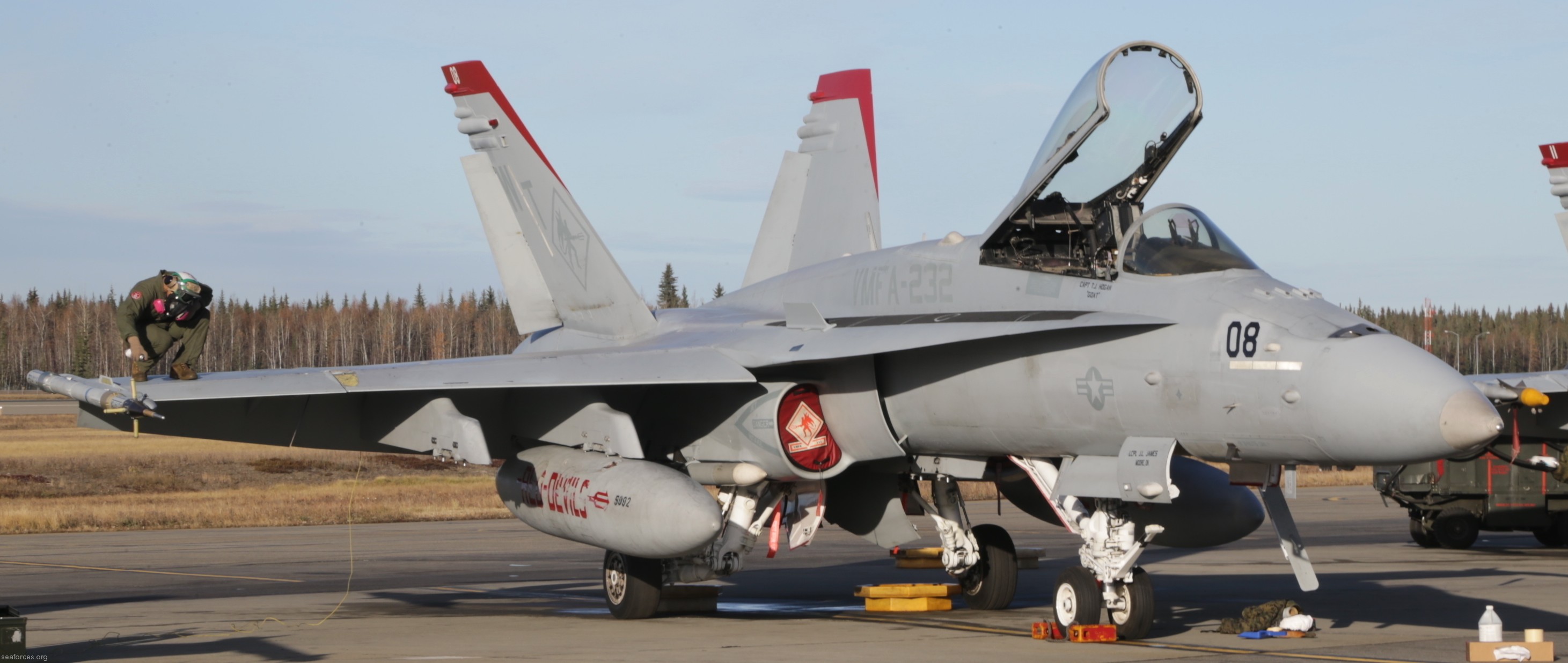 F/A-18C Hornet (VMFA-232) during exercise Red Flag at Eielson AFB, Alaska - October 2018 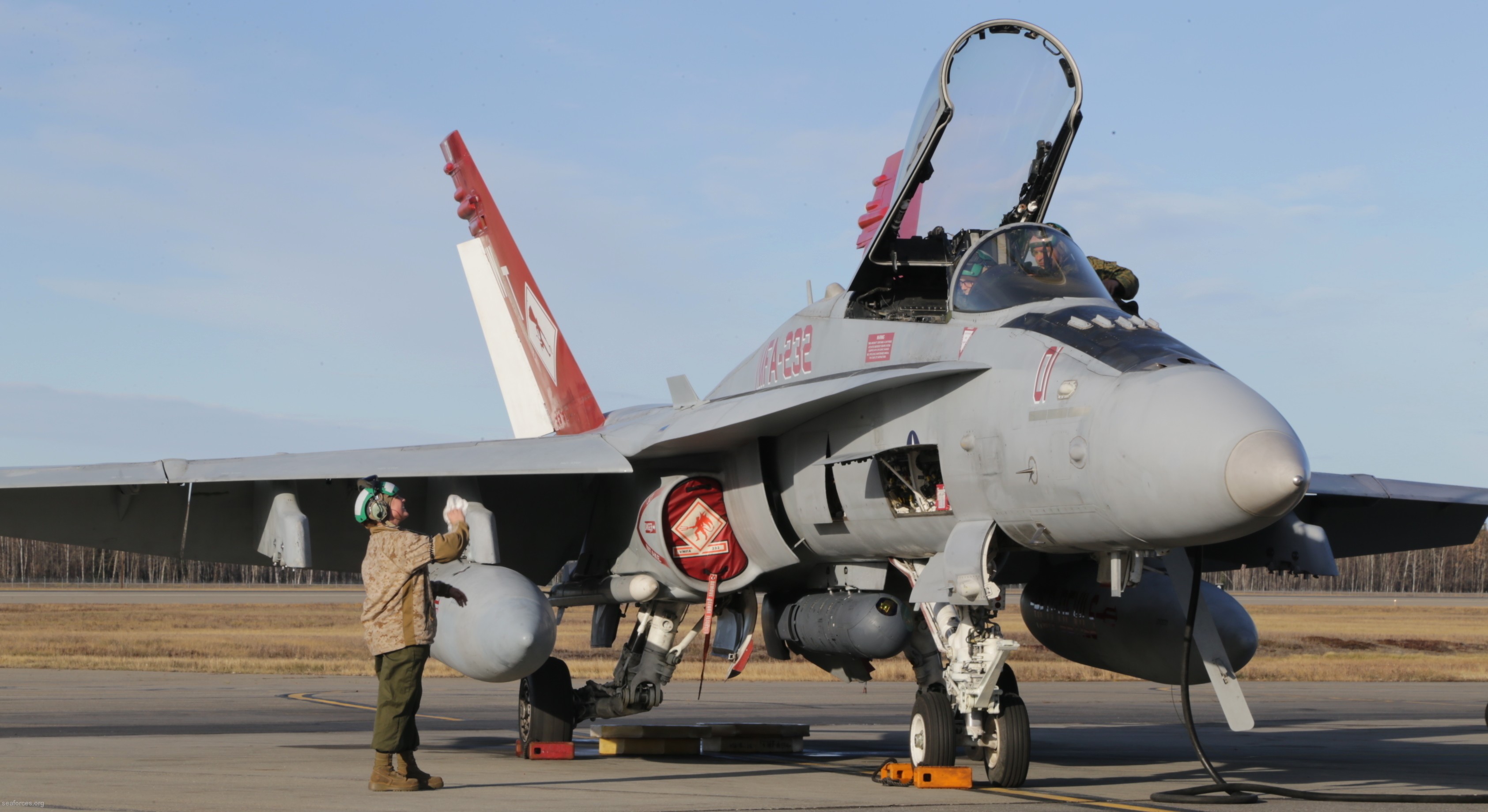 F/A-18C Hornet (VMFA-232) during exercise Red Flag at Eielson AFB, Alaska - October 2018 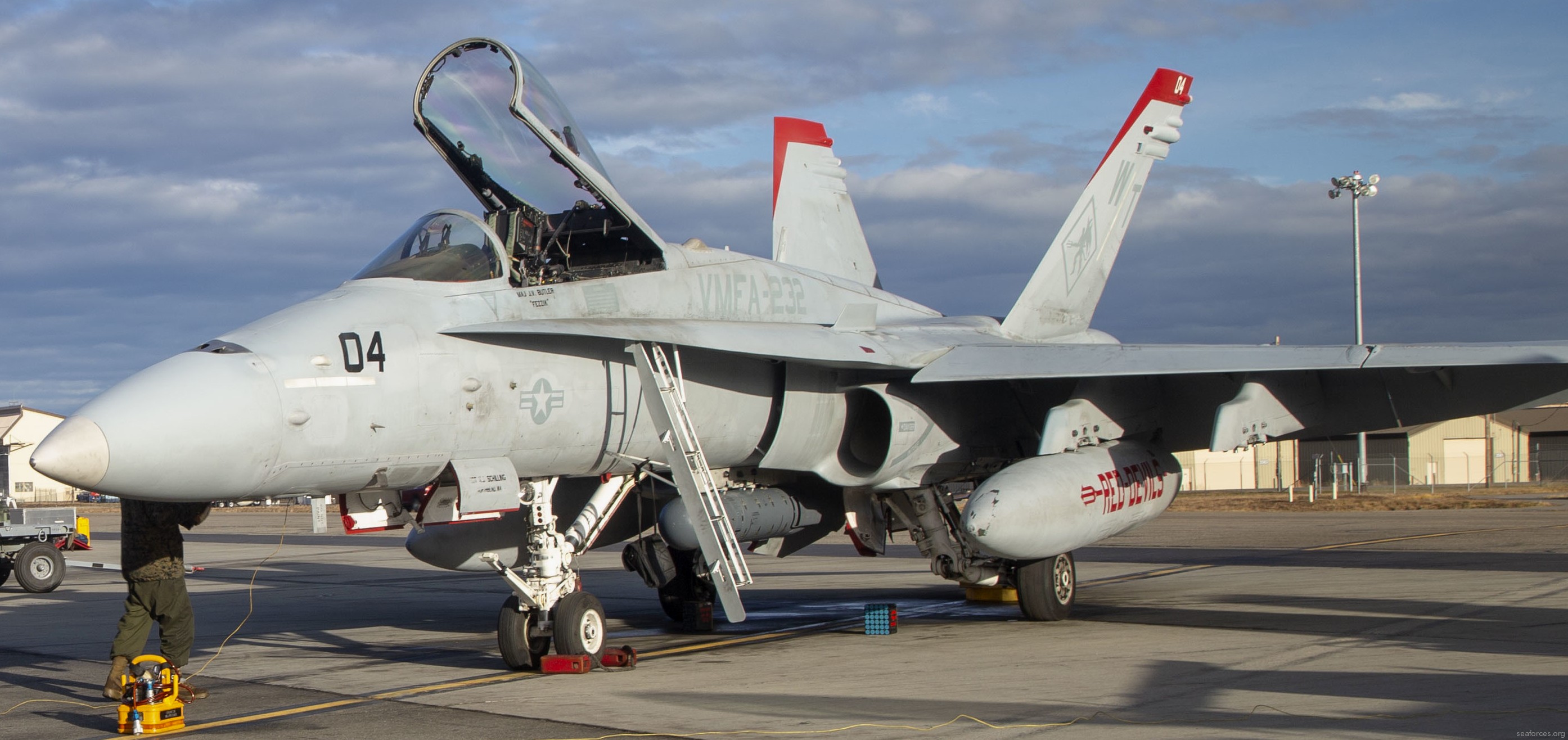 F/A-18C Hornet (VMFA-232) during exercise Red Flag at Eielson AFB, Alaska - October 2018 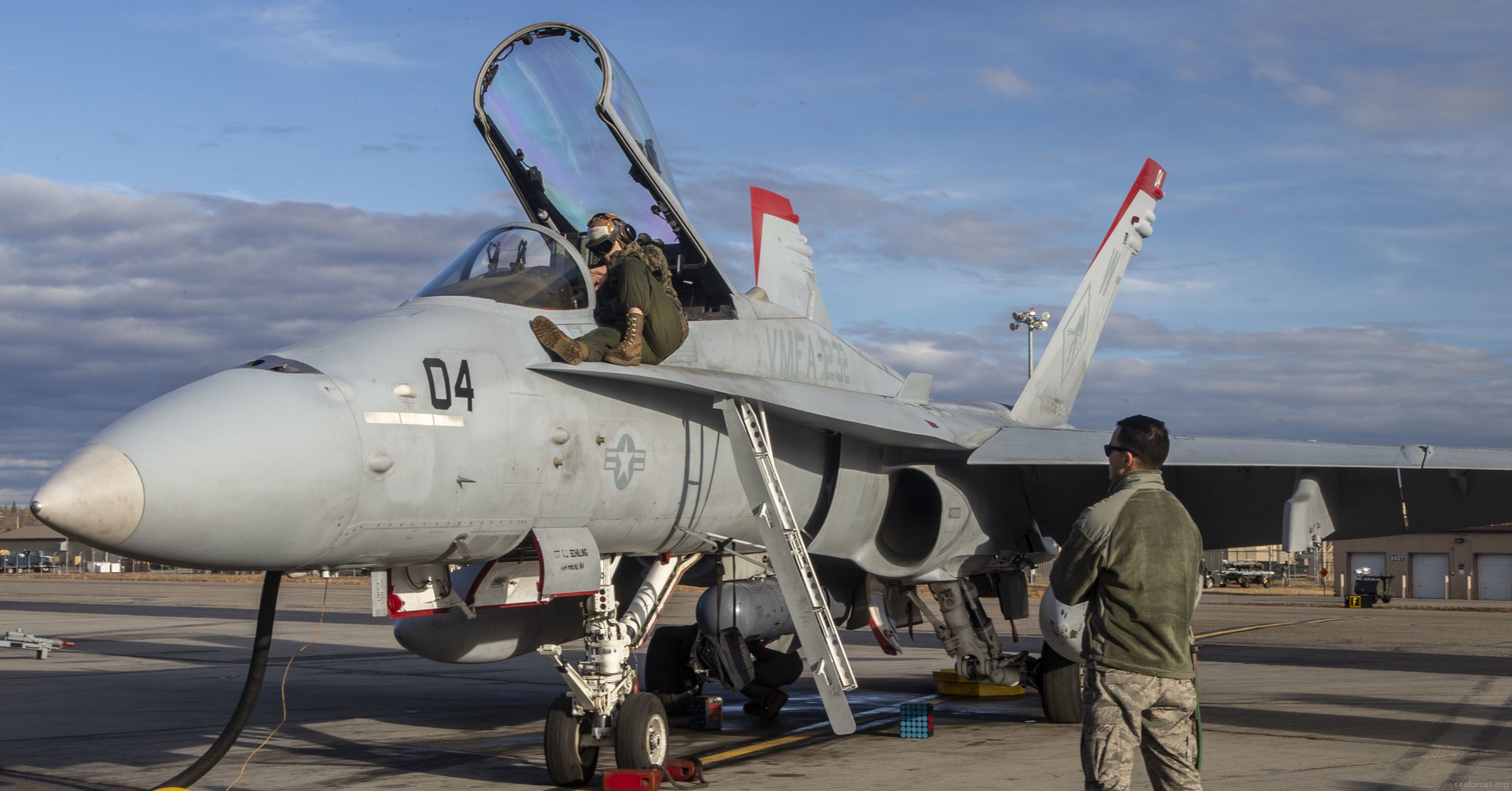 F/A-18C Hornet (VMFA-232) during exercise Red Flag at Eielson AFB, Alaska - October 2018 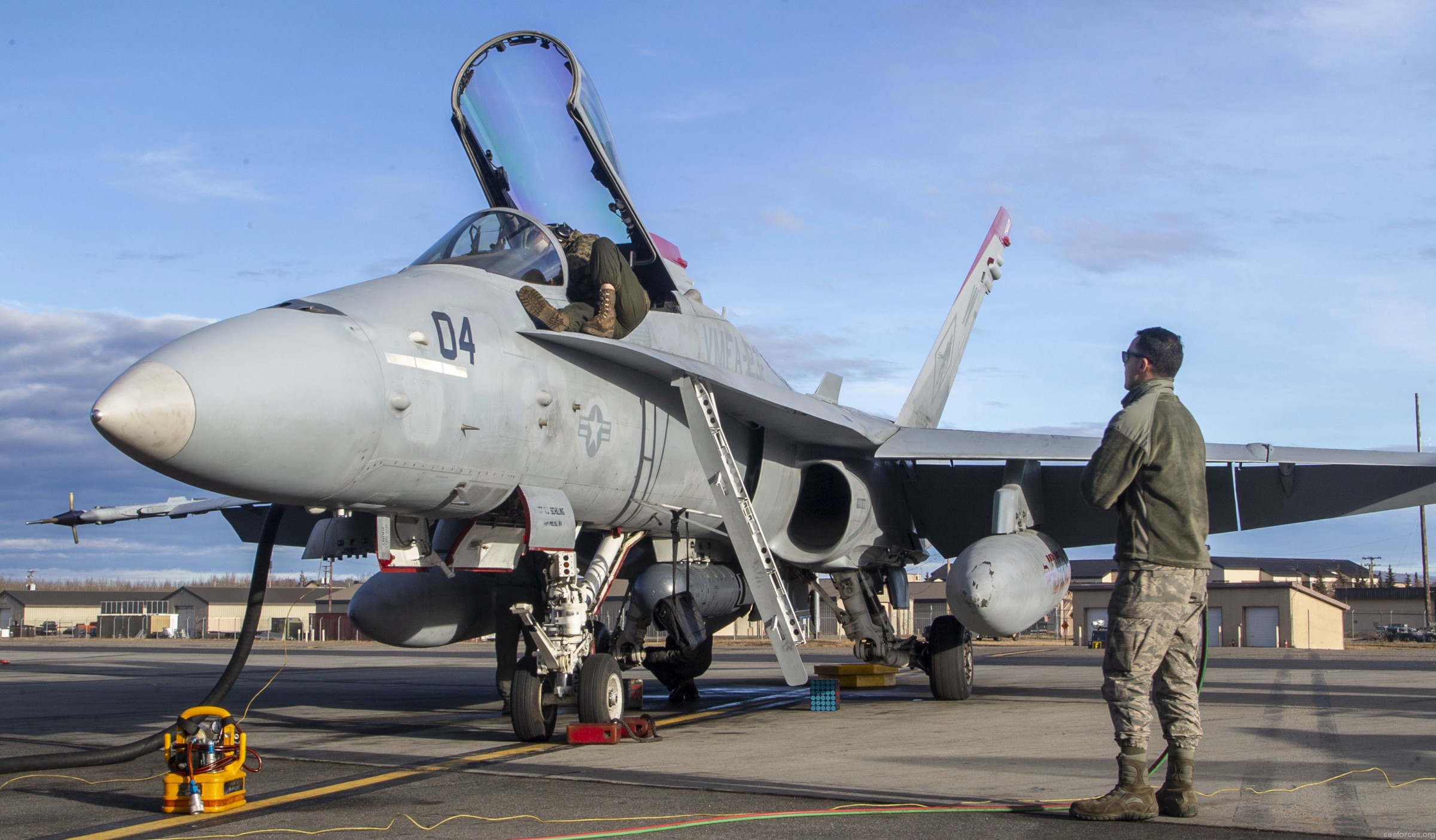 F/A-18C Hornet (VMFA-232) during exercise Red Flag at Eielson AFB, Alaska - October 2018 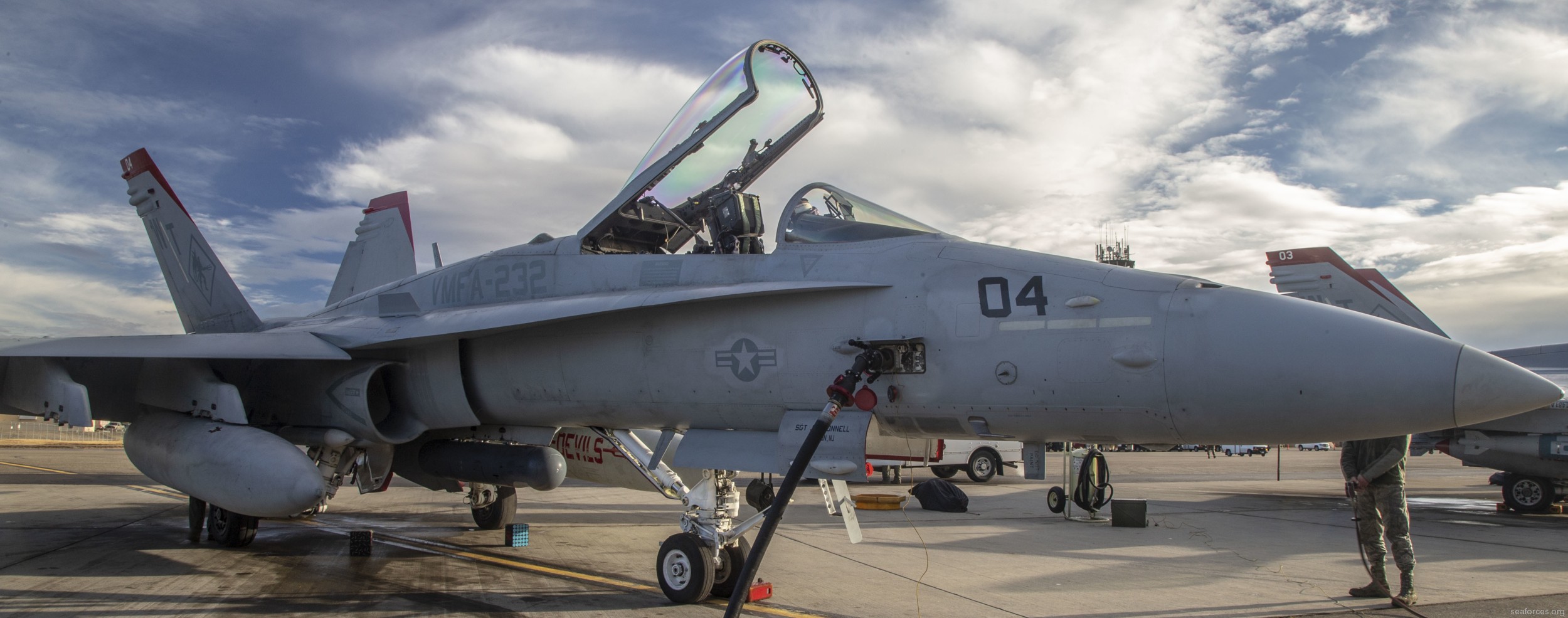 F/A-18C Hornet (VMFA-232) during exercise Red Flag at Eielson AFB, Alaska - October 2018 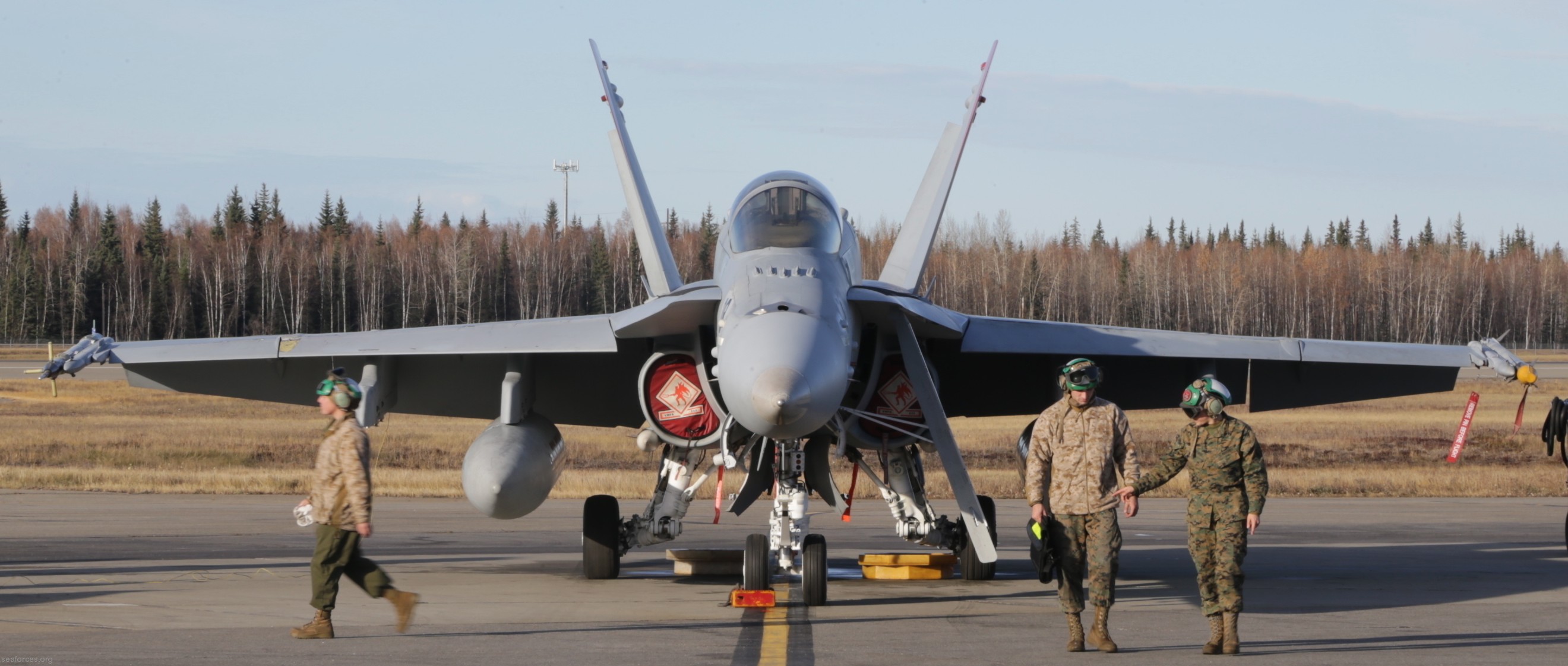 F/A-18C Hornet (VMFA-232) during exercise Red Flag at Eielson AFB, Alaska - October 2018 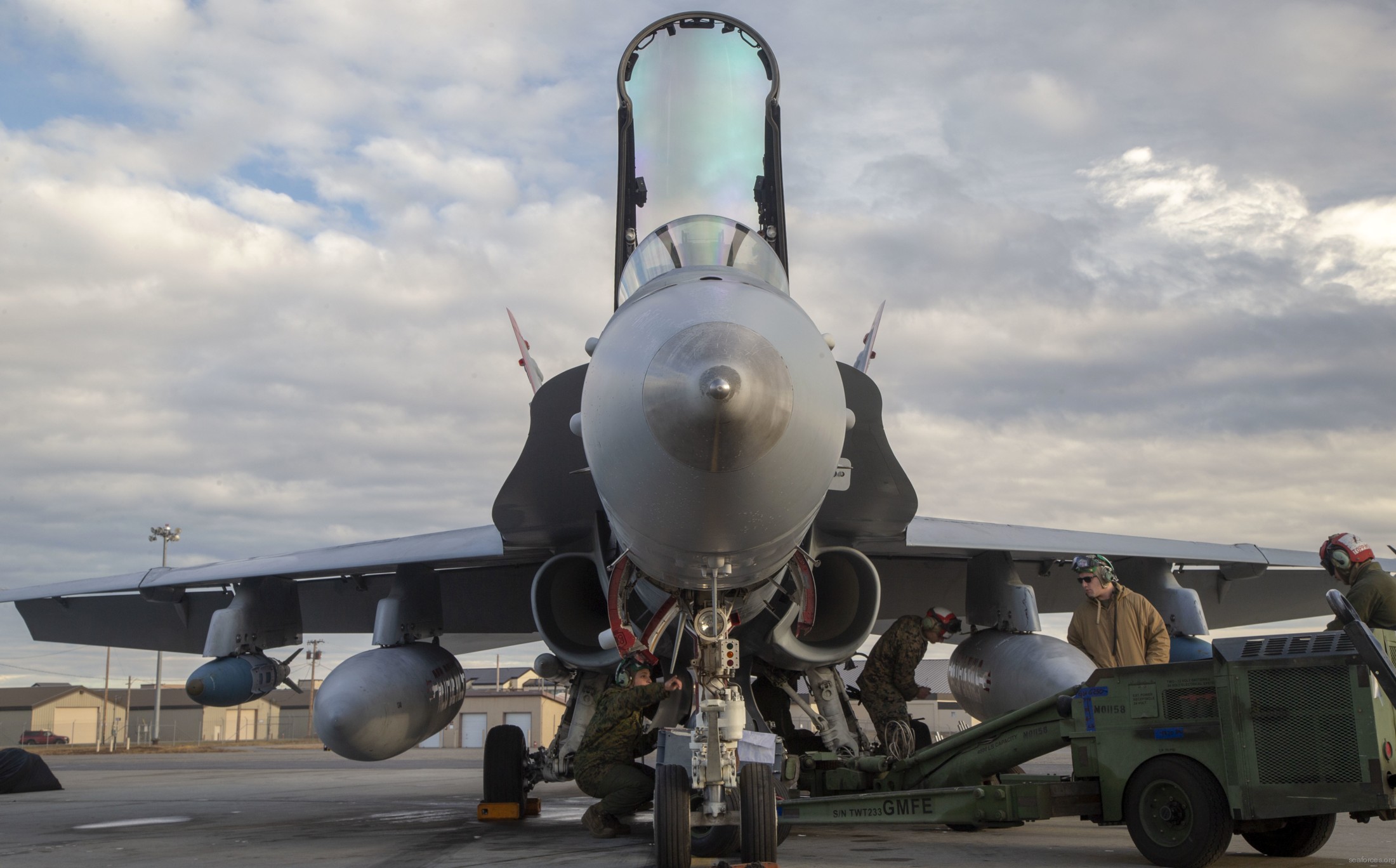 F/A-18C Hornet (VMFA-232) during exercise Red Flag at Eielson AFB, Alaska - October 2018 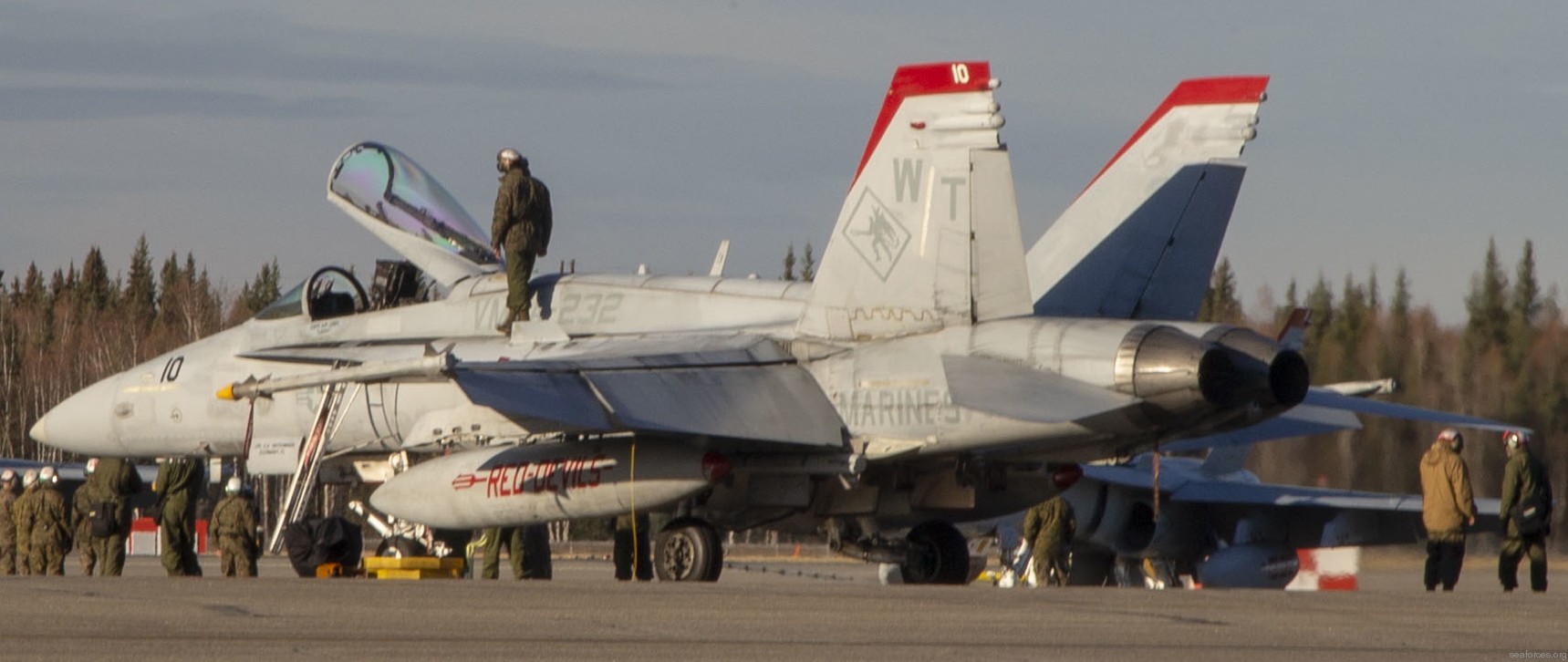 F/A-18C Hornet (VMFA-232) during exercise Red Flag at Eielson AFB, Alaska - October 2018 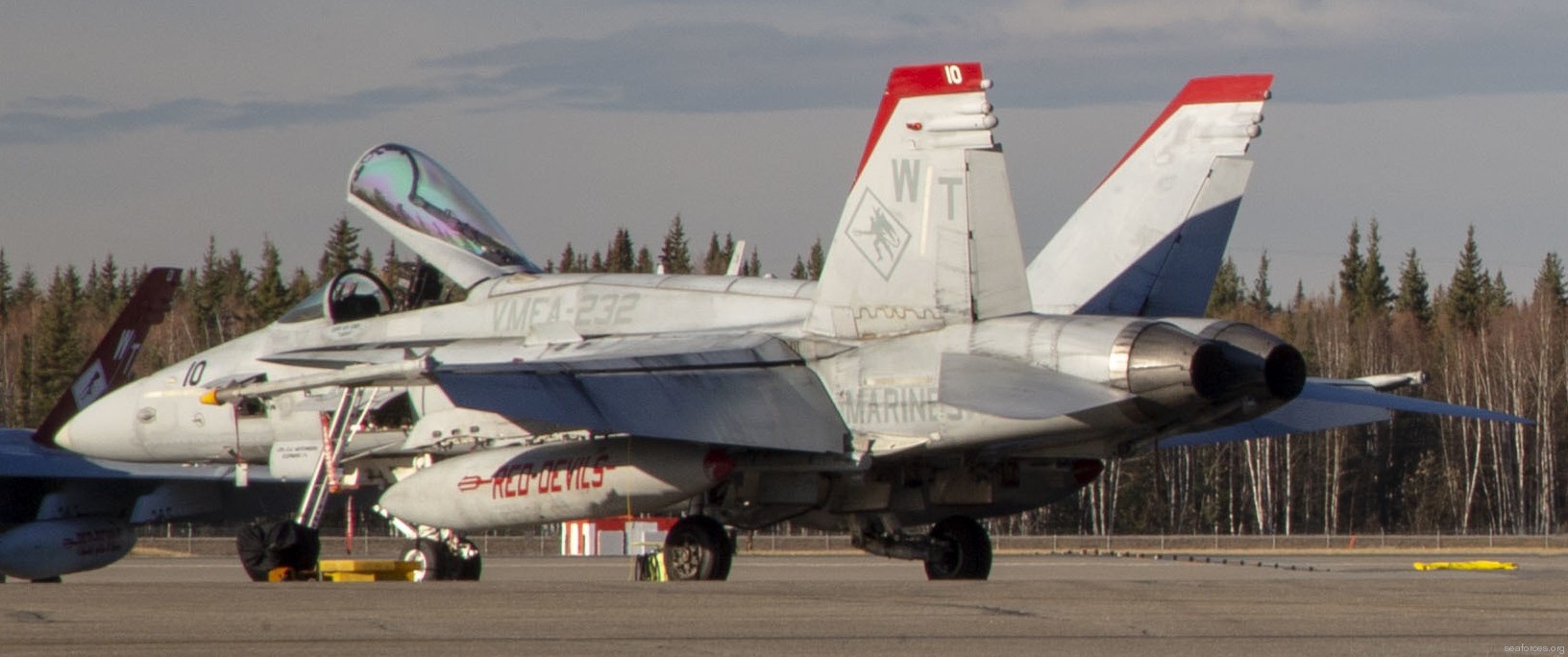 F/A-18C Hornet (VMFA-232) during exercise Red Flag at Eielson AFB, Alaska - October 2018 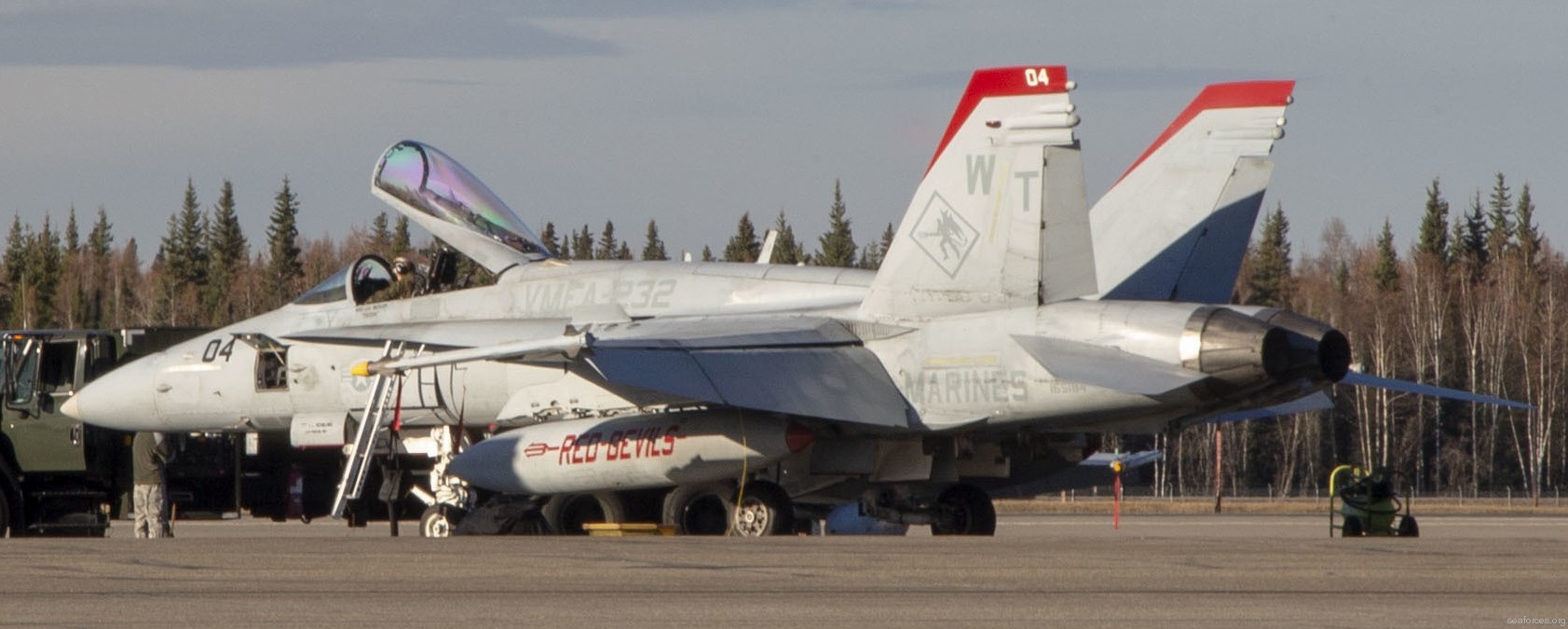 F/A-18C Hornet (VMFA-232) during exercise Red Flag at Eielson AFB, Alaska - October 2018 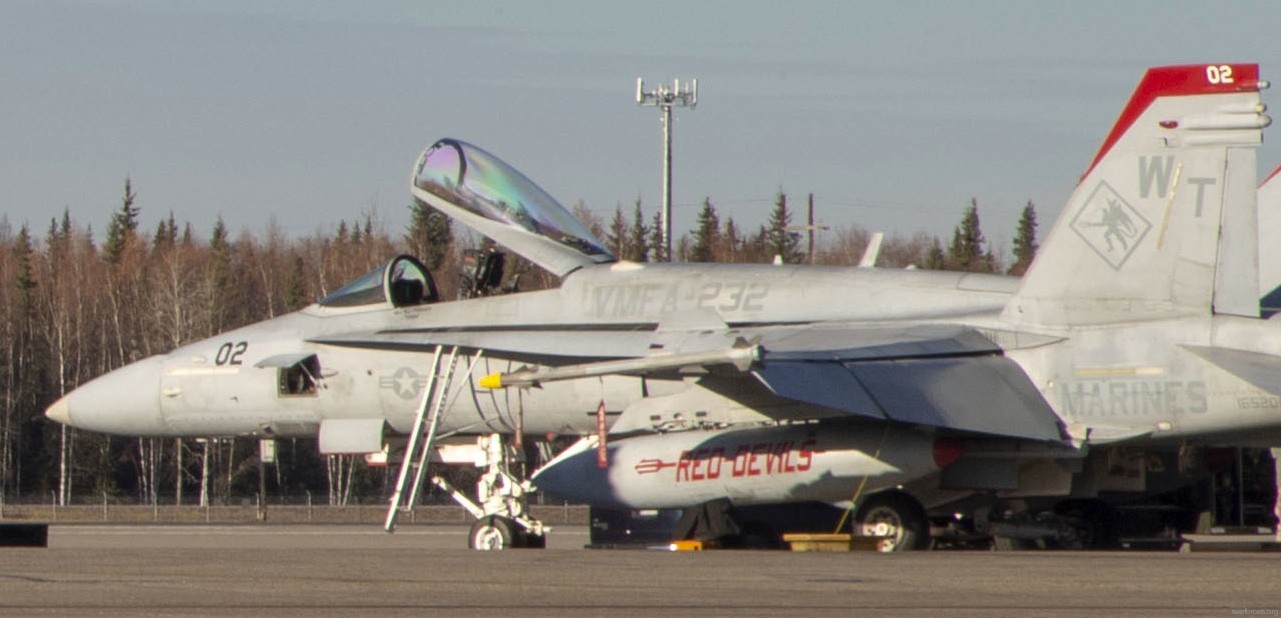 F/A-18C Hornet (VMFA-232) during exercise Red Flag at Eielson AFB, Alaska - October 2018 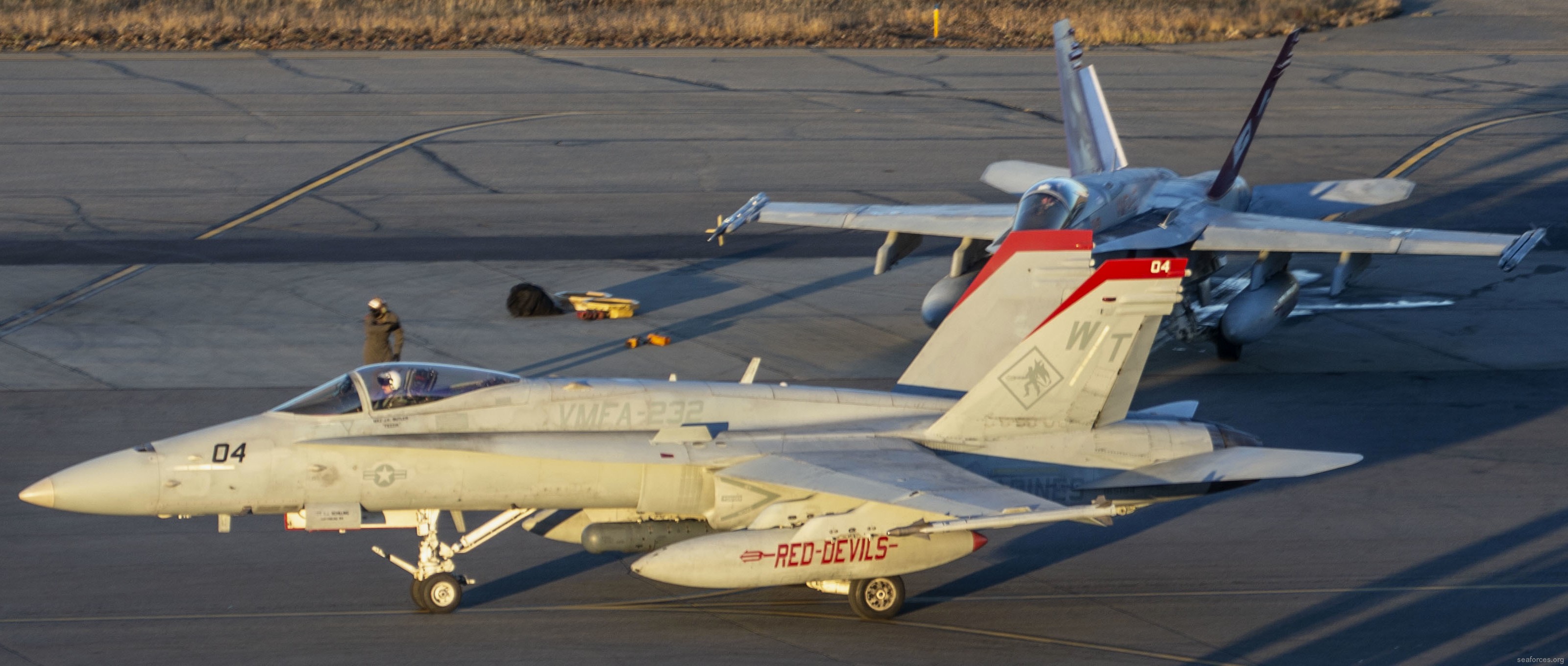 F/A-18C Hornet (VMFA-232) during exercise Red Flag at Eielson AFB, Alaska - October 2018 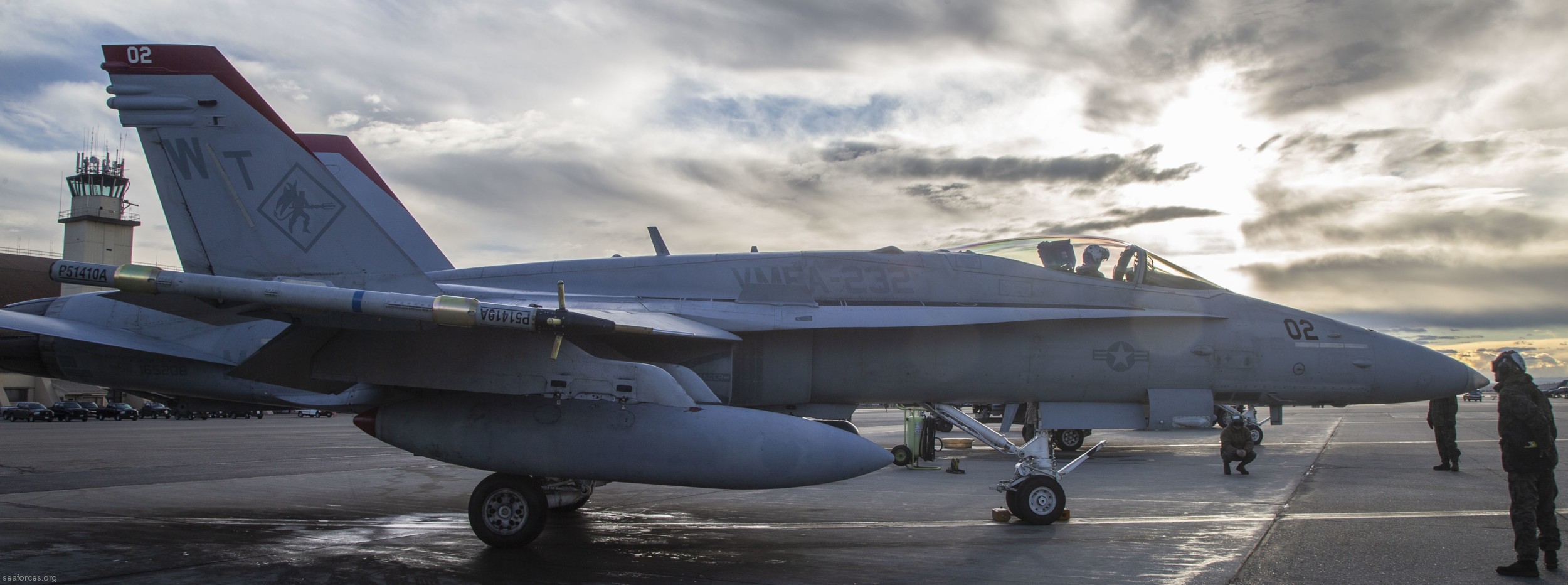 F/A-18C Hornet (VMFA-232) during exercise Red Flag at Eielson AFB, Alaska - October 2018 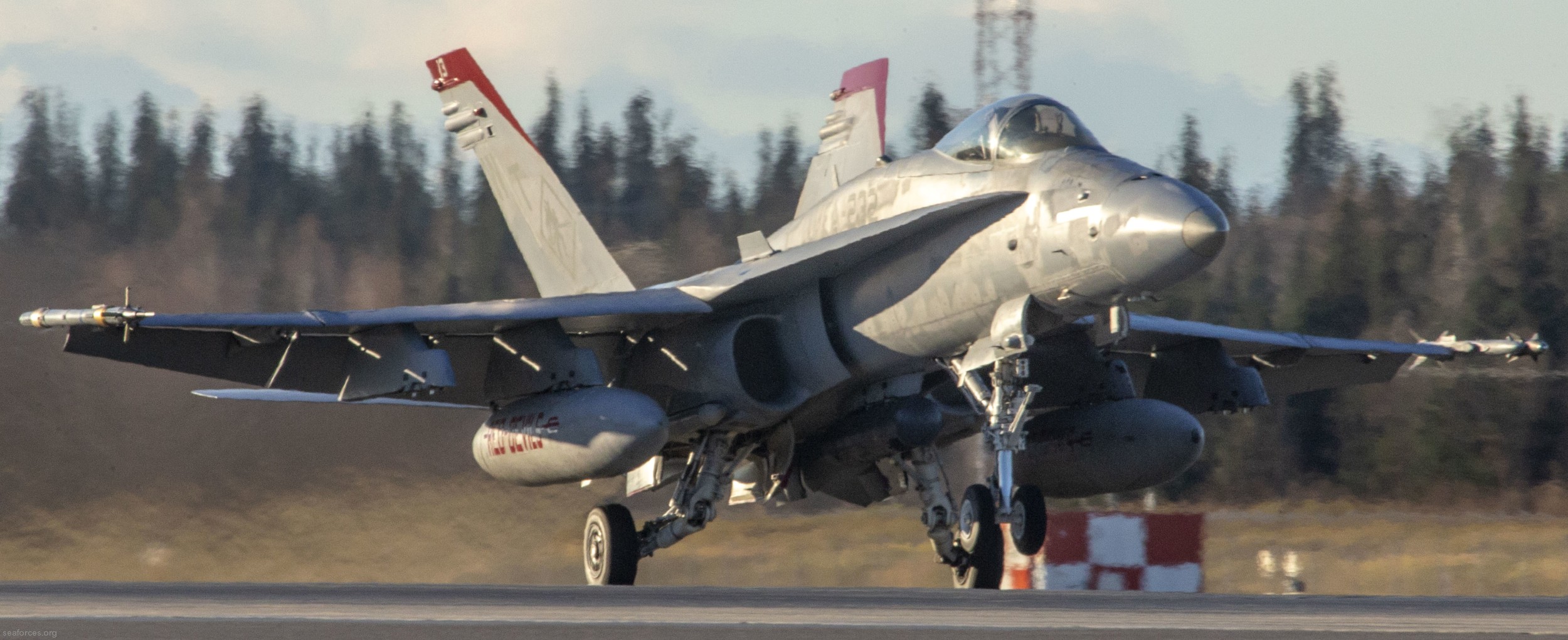 F/A-18C Hornet (VMFA-232) during exercise Red Flag at Eielson AFB, Alaska - October 2018 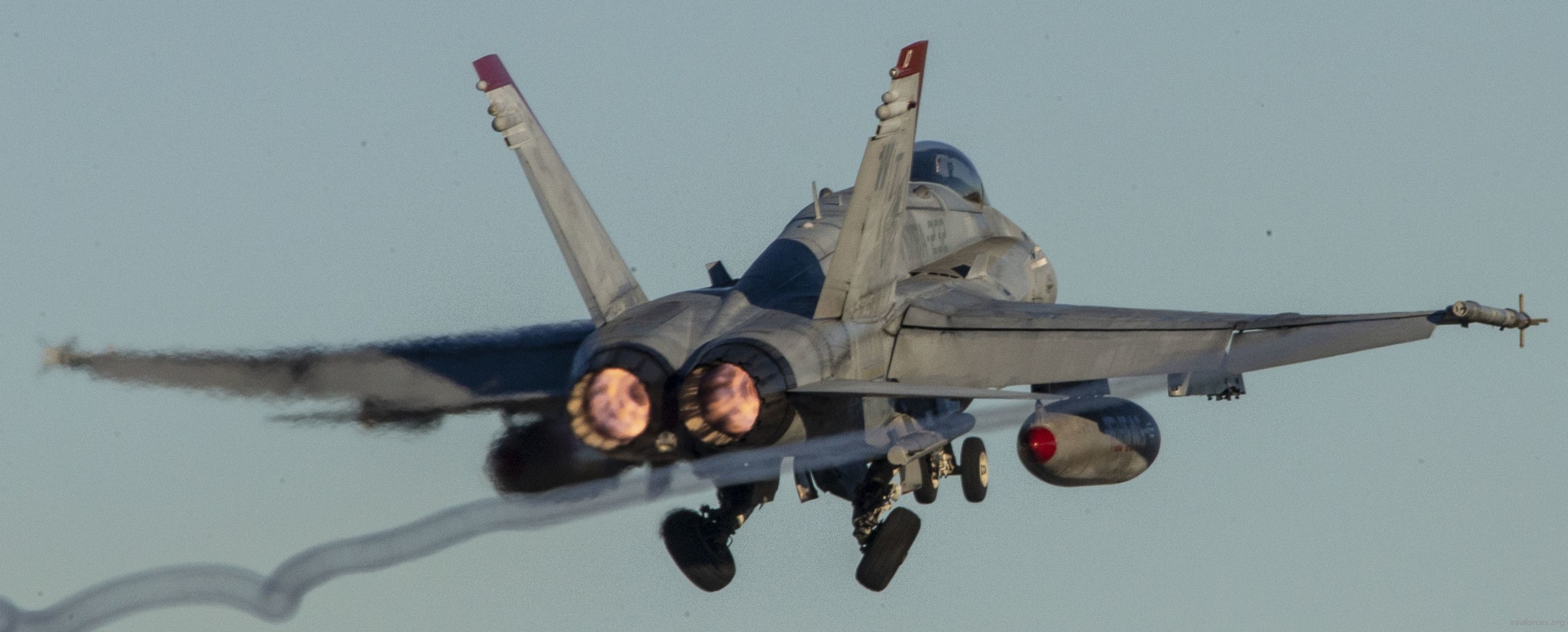 F/A-18C Hornet (VMFA-232) during exercise Red Flag at Eielson AFB, Alaska - October 2018 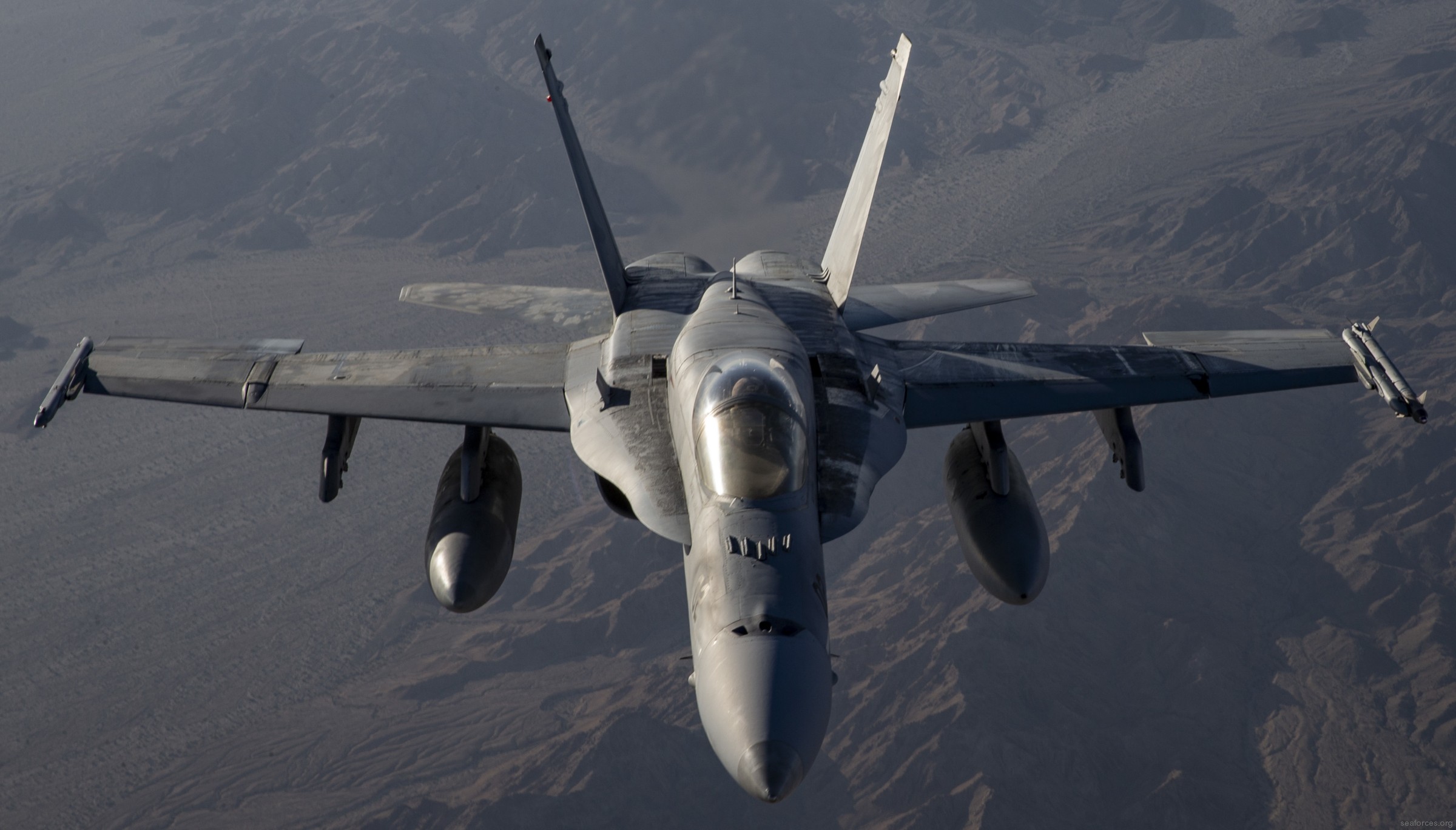 F/A-18C Hornet (VMFA-232) over California - May 2018 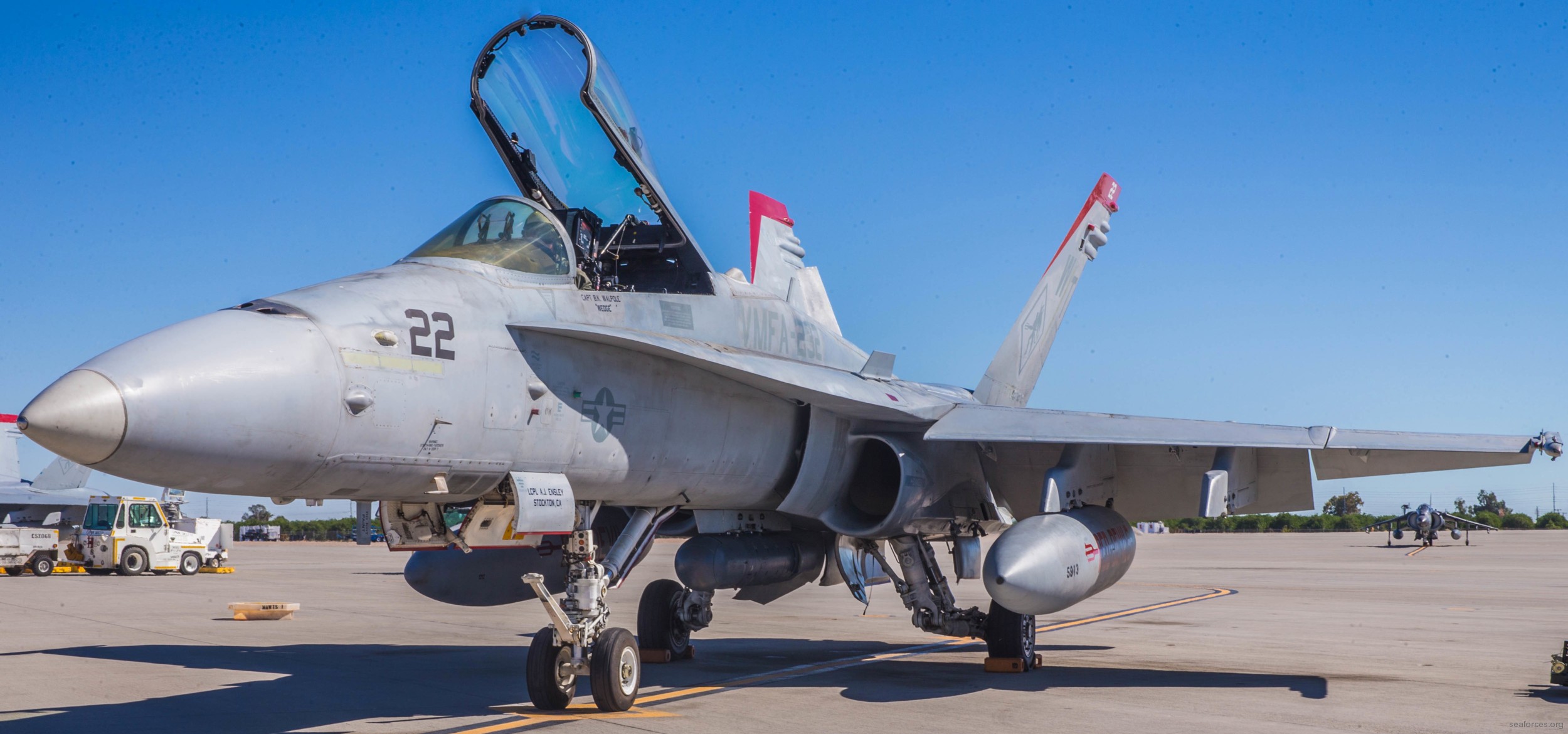 F/A-18C Hornet (VMFA-232) at MCAS Yuma, Arizona - September 2017 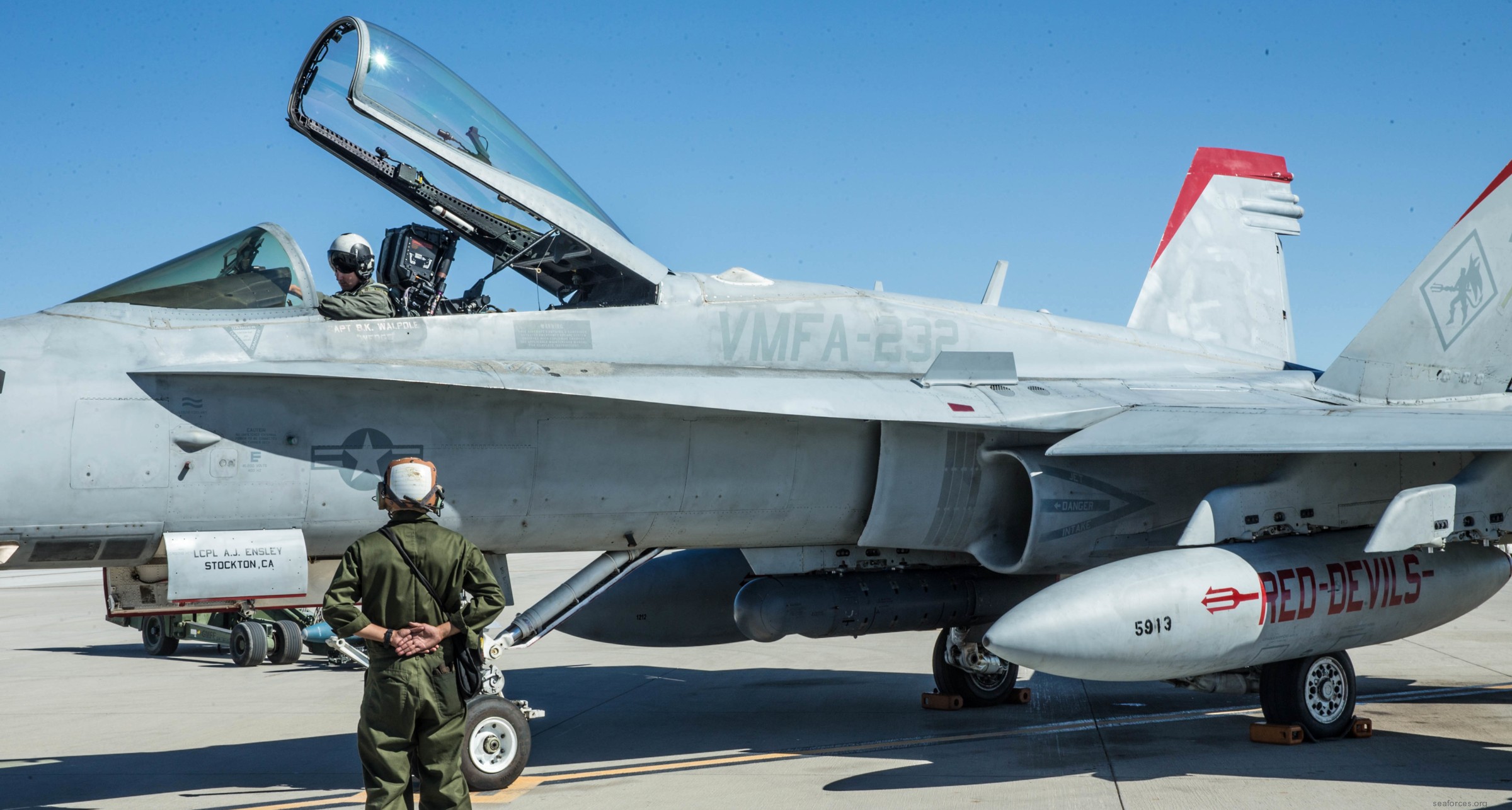 F/A-18C Hornet (VMFA-232) hot load exercise at MCAS Yuma, Arizona - September 2017 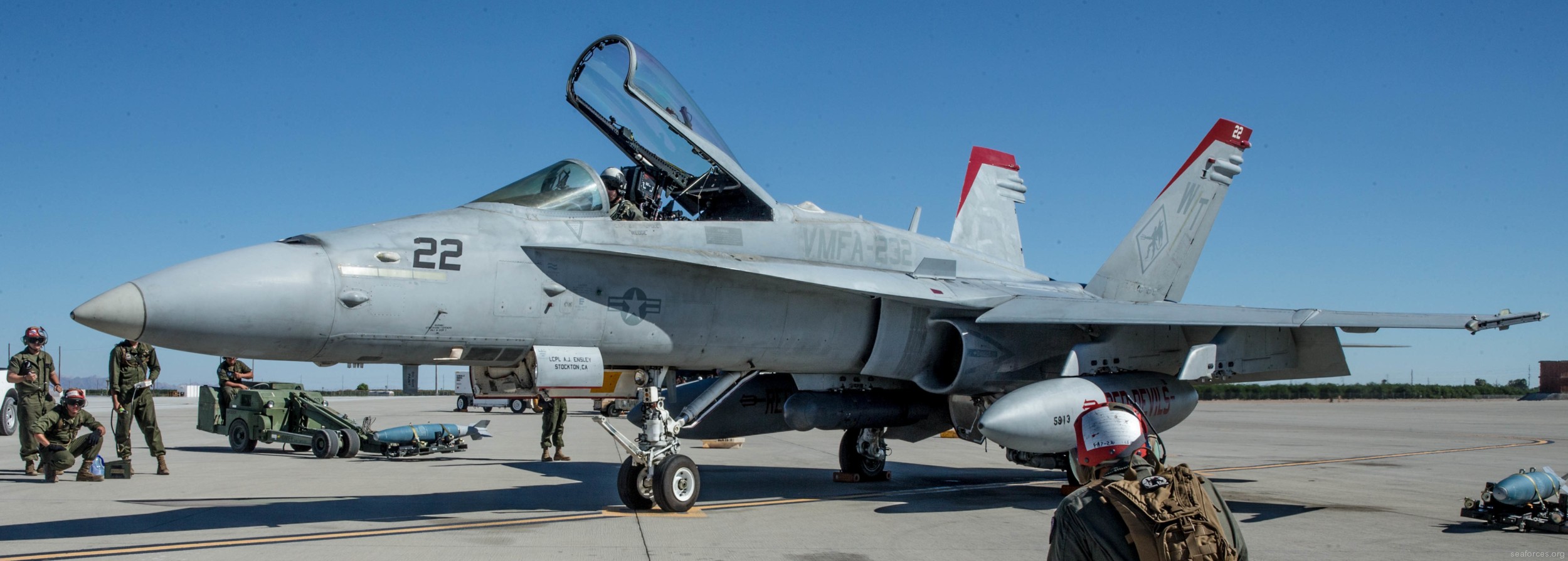 F/A-18C Hornet (VMFA-232) hot load exercise at MCAS Yuma, Arizona - September 2017 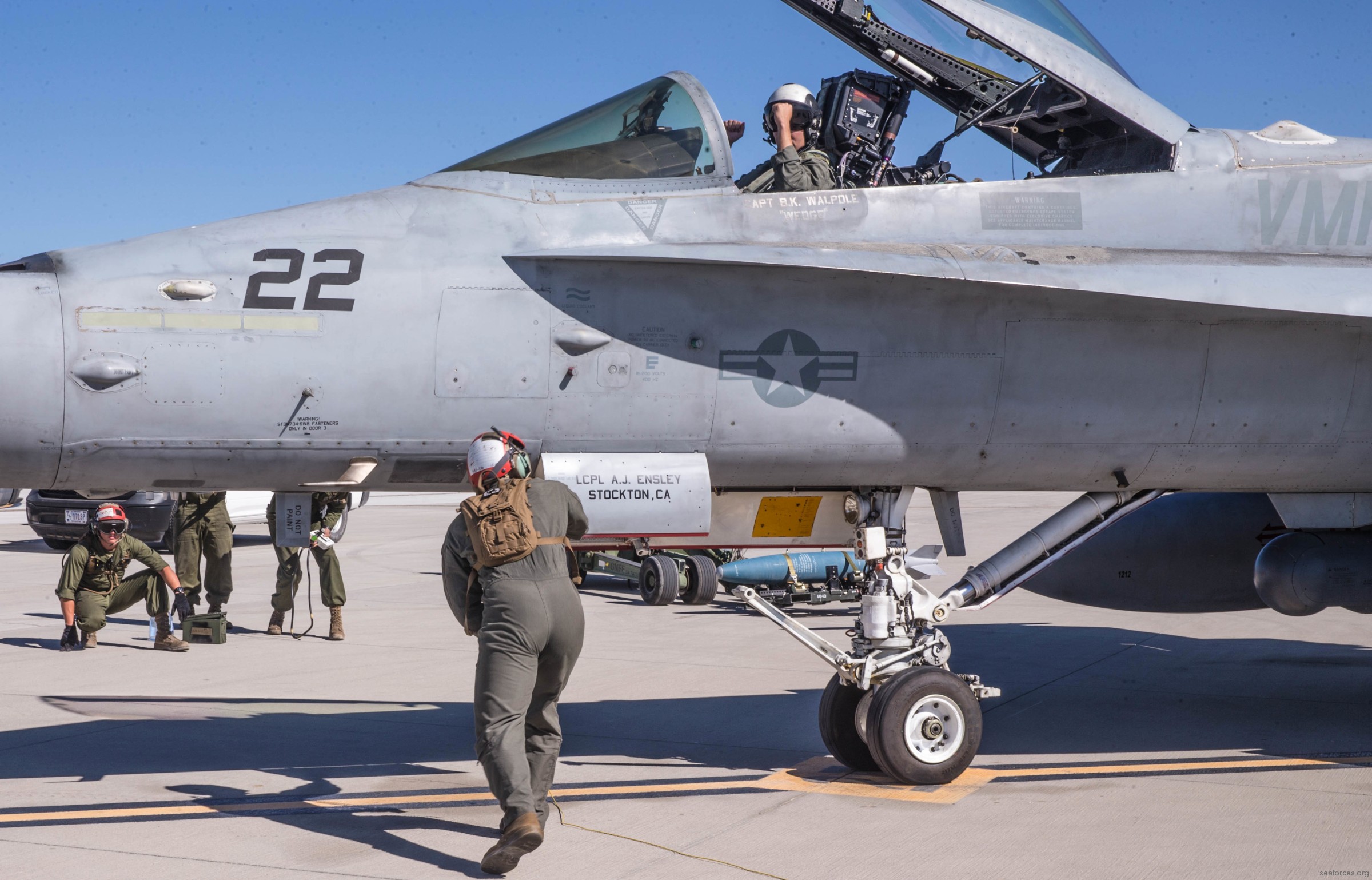 F/A-18C Hornet (VMFA-232) at MCAS Yuma, Arizona - September 2017 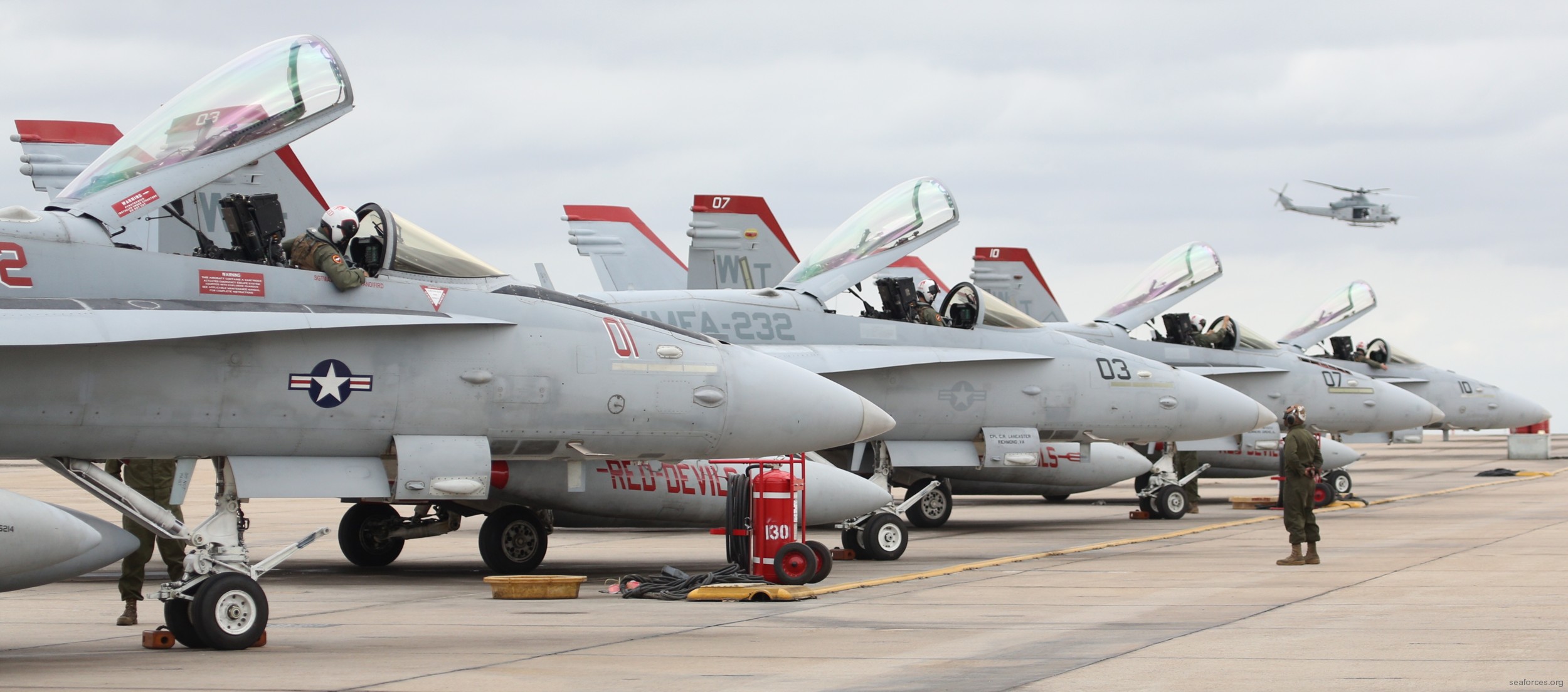 F/A-18C Hornet (VMFA-232) at MCAS Miramar, California - September 2017 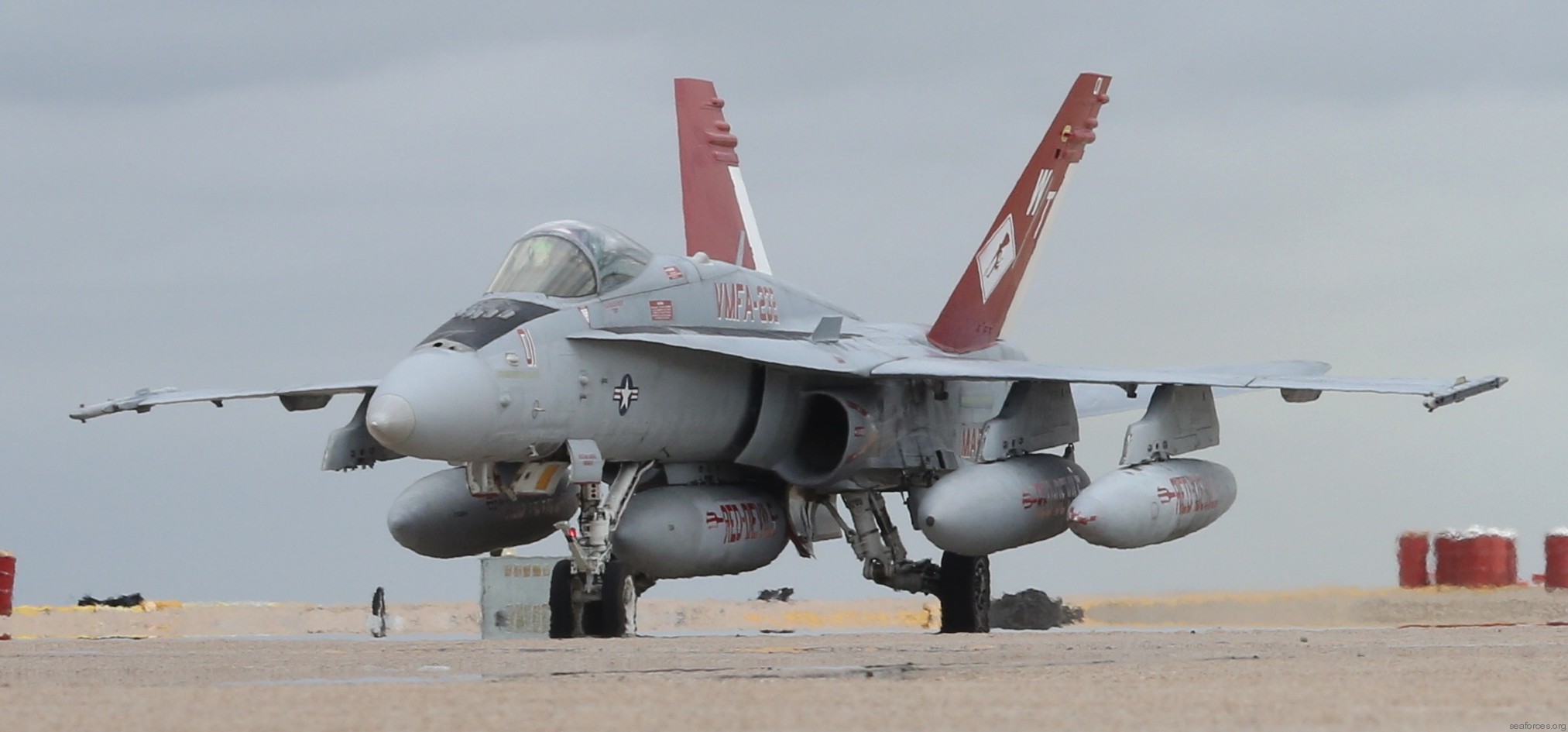 F/A-18C Hornet (VMFA-232) at MCAS Miramar, California - September 2017 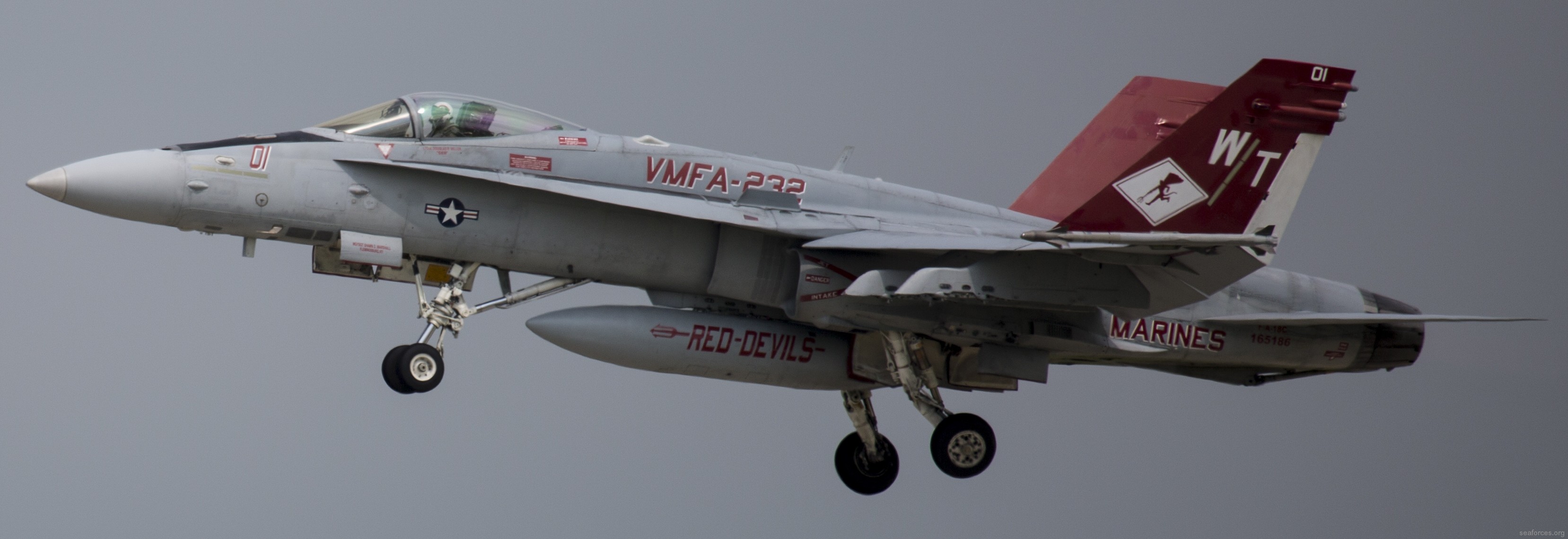 F/A-18C Hornet (VMFA-232) at MCAS Iwakuni, Japan - July 2017 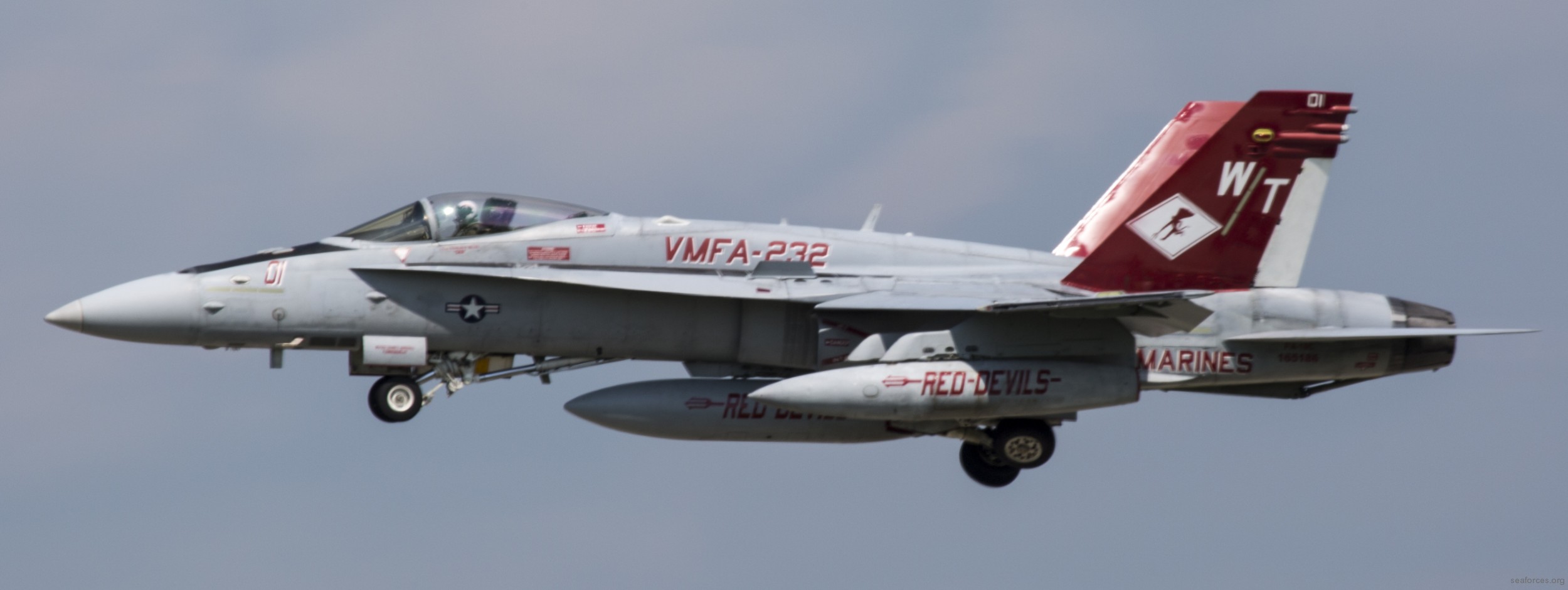 F/A-18C Hornet (VMFA-232) at MCAS Iwakuni, Japan - July 2017 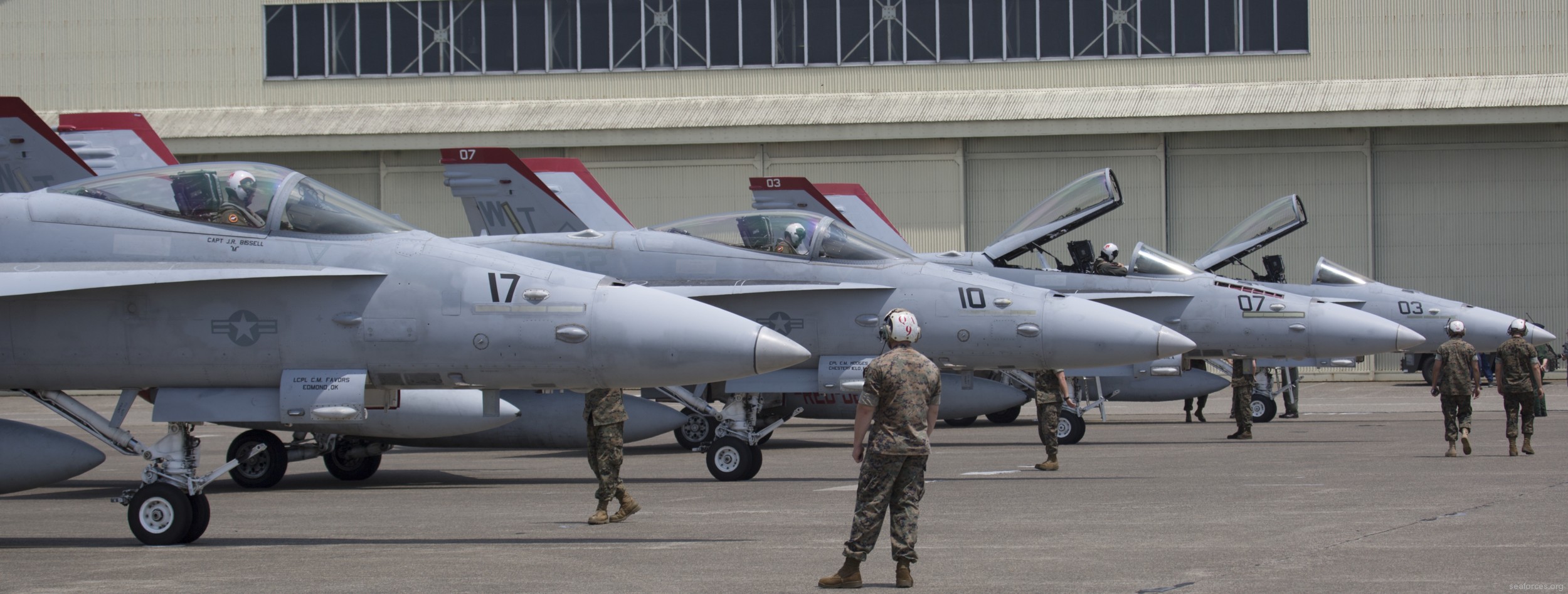 F/A-18C Hornet (VMFA-232) at JASDF Hyakuri Air Base, Ibaraki, Japan - July 2017 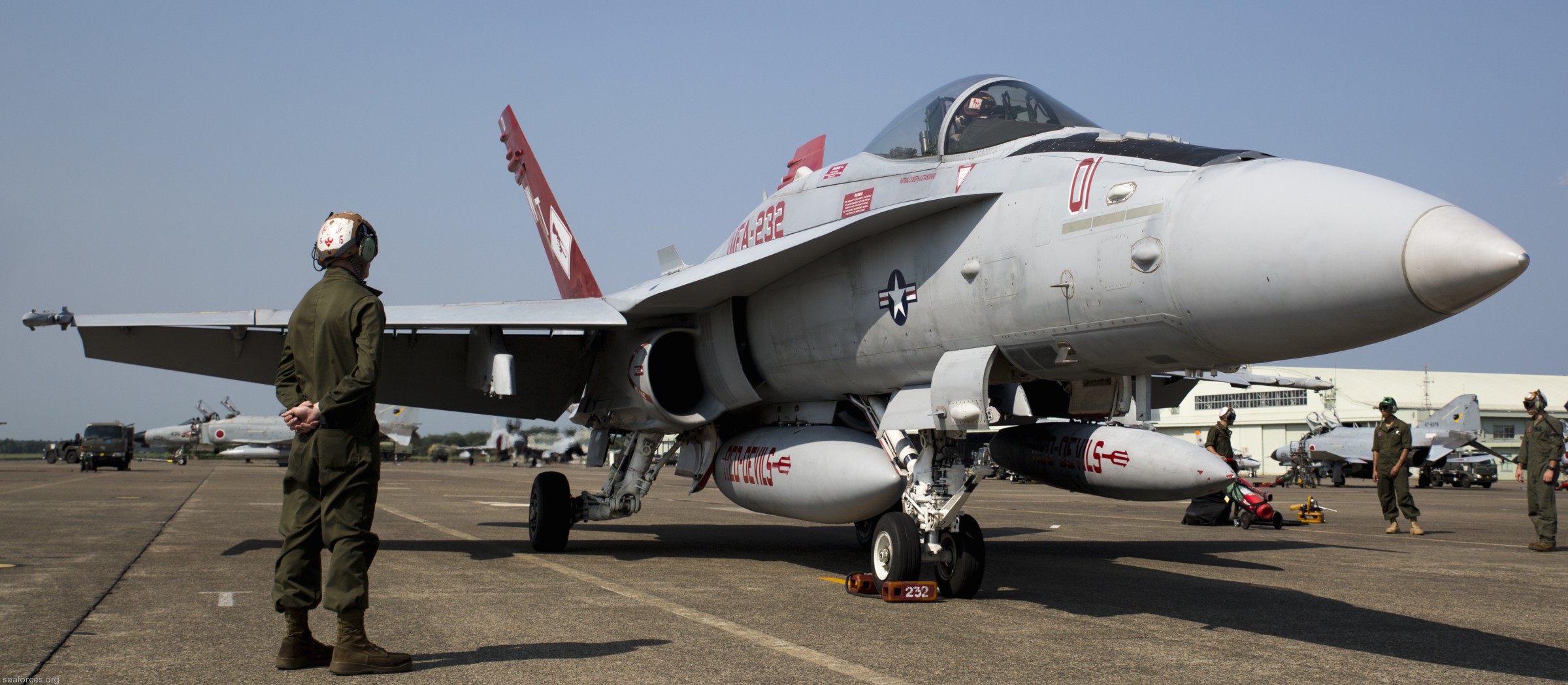 F/A-18C Hornet (VMFA-232) at JASDF Hyakuri Air Base, Ibaraki, Japan - July 2017 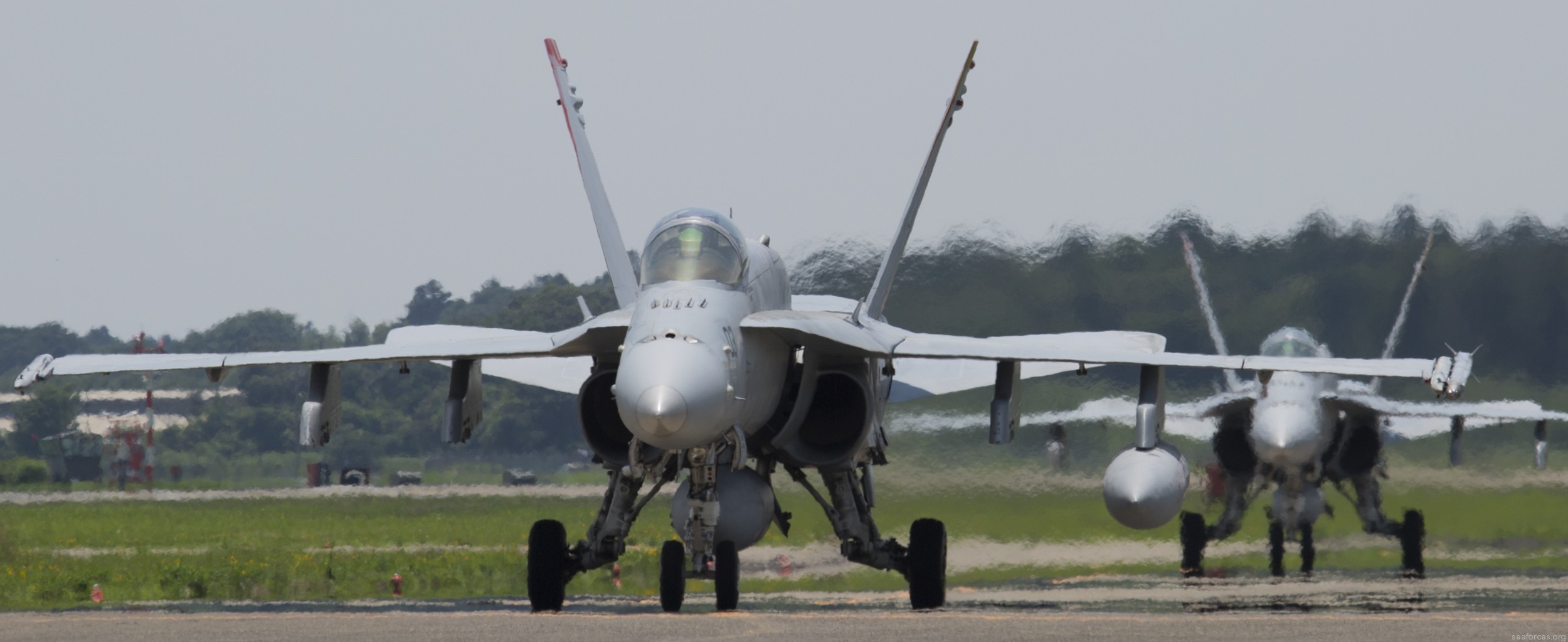 F/A-18C Hornet (VMFA-232) at JASDF Hyakuri Air Base, Ibaraki, Japan - July 2017 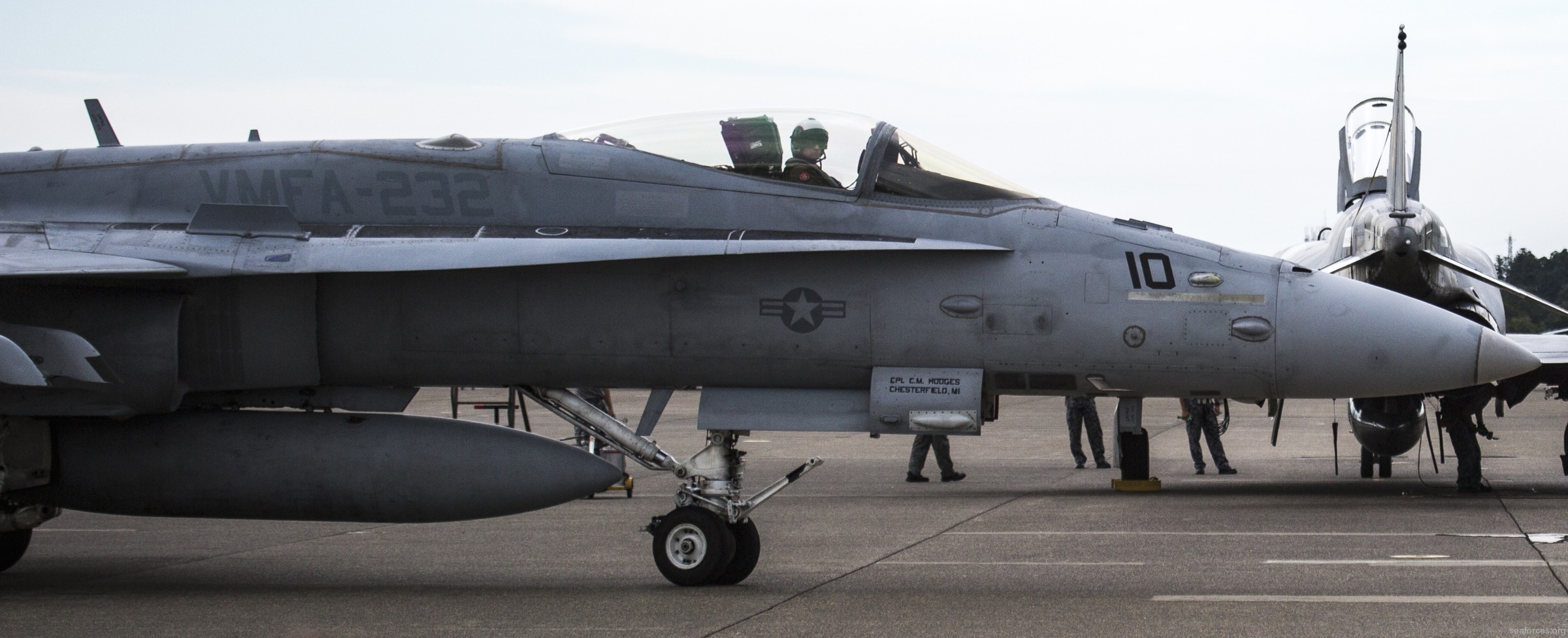 F/A-18C Hornet (VMFA-232) at JASDF Hyakuri Air Base, Ibaraki, Japan - July 2017 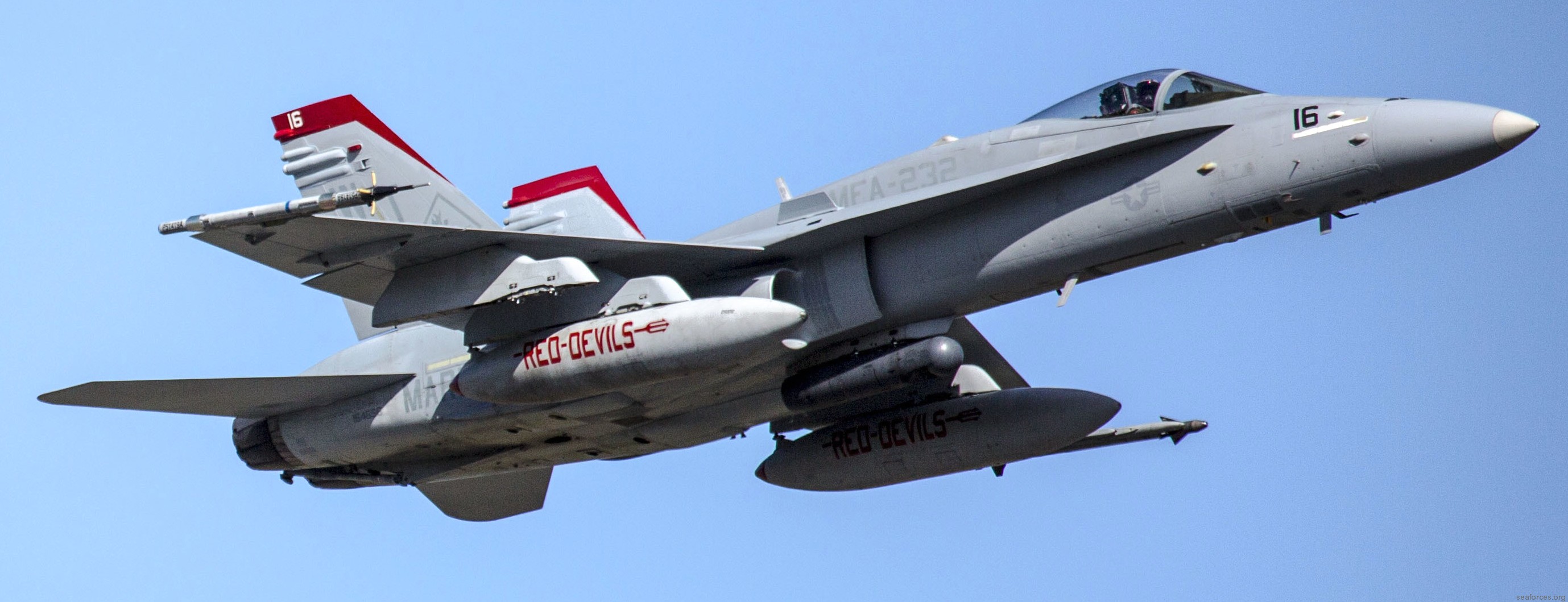 F/A-18C Hornet (VMFA-232) during exercise Distant Frontier at Joint Base Elmendorf-Richardson, Alaska - May 2017 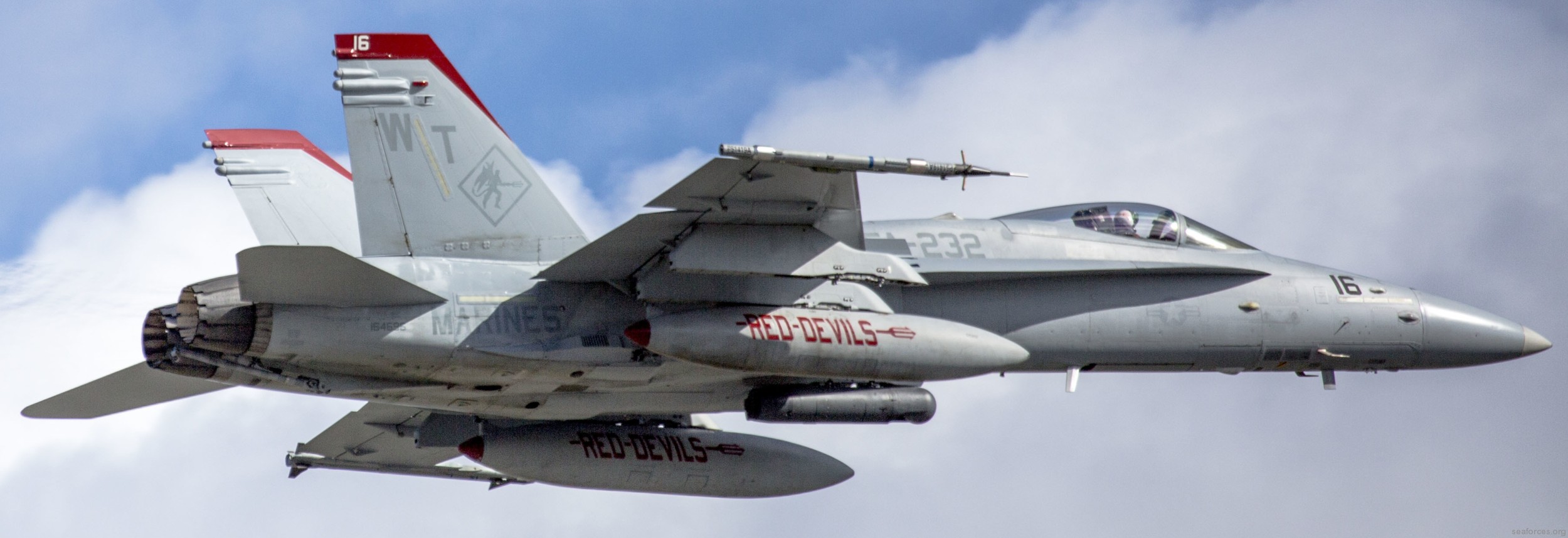 F/A-18C Hornet (VMFA-232) during exercise Distant Frontier at Joint Base Elmendorf-Richardson, Alaska - May 2017 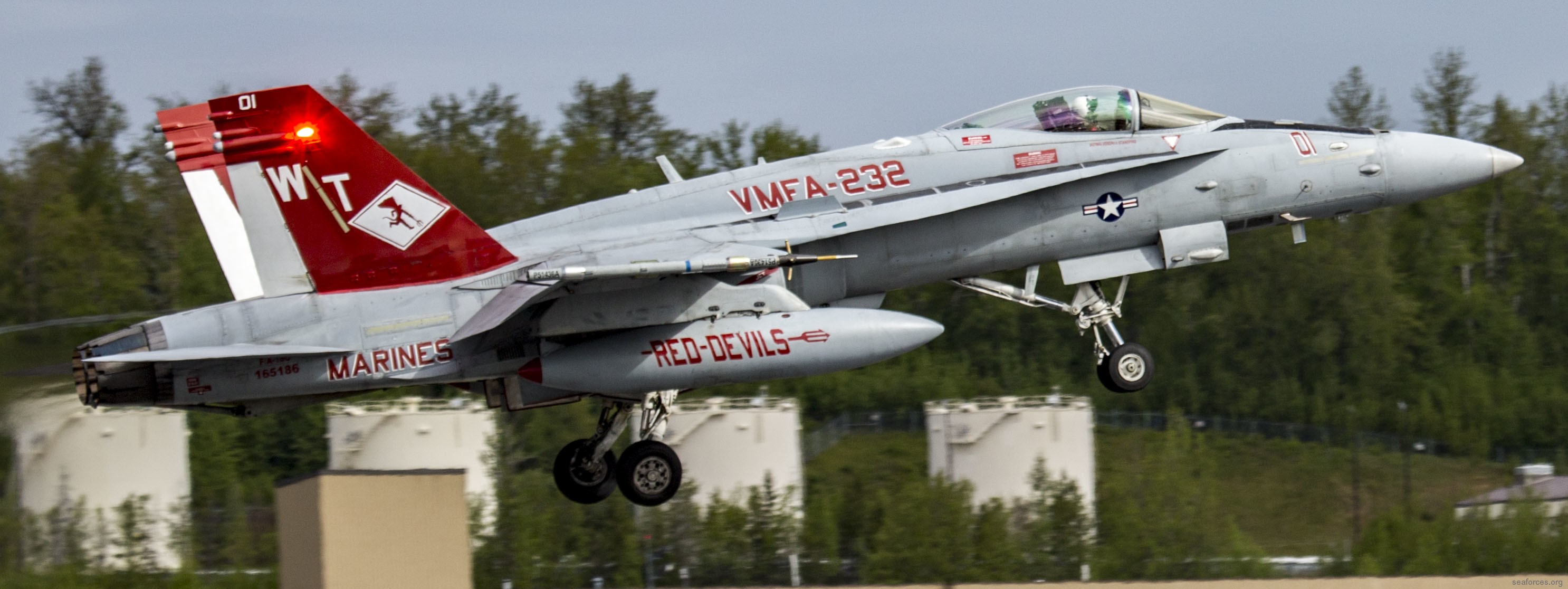 F/A-18C Hornet (VMFA-232) during exercise Distant Frontier at Joint Base Elmendorf-Richardson, Alaska - May 2017  F/A-18C Hornet (VMFA-232) during exercise Distant Frontier at Joint Base Elmendorf-Richardson, Alaska - May 2017  F/A-18C Hornet (VMFA-232) during exercise Distant Frontier at Joint Base Elmendorf-Richardson, Alaska - May 2017 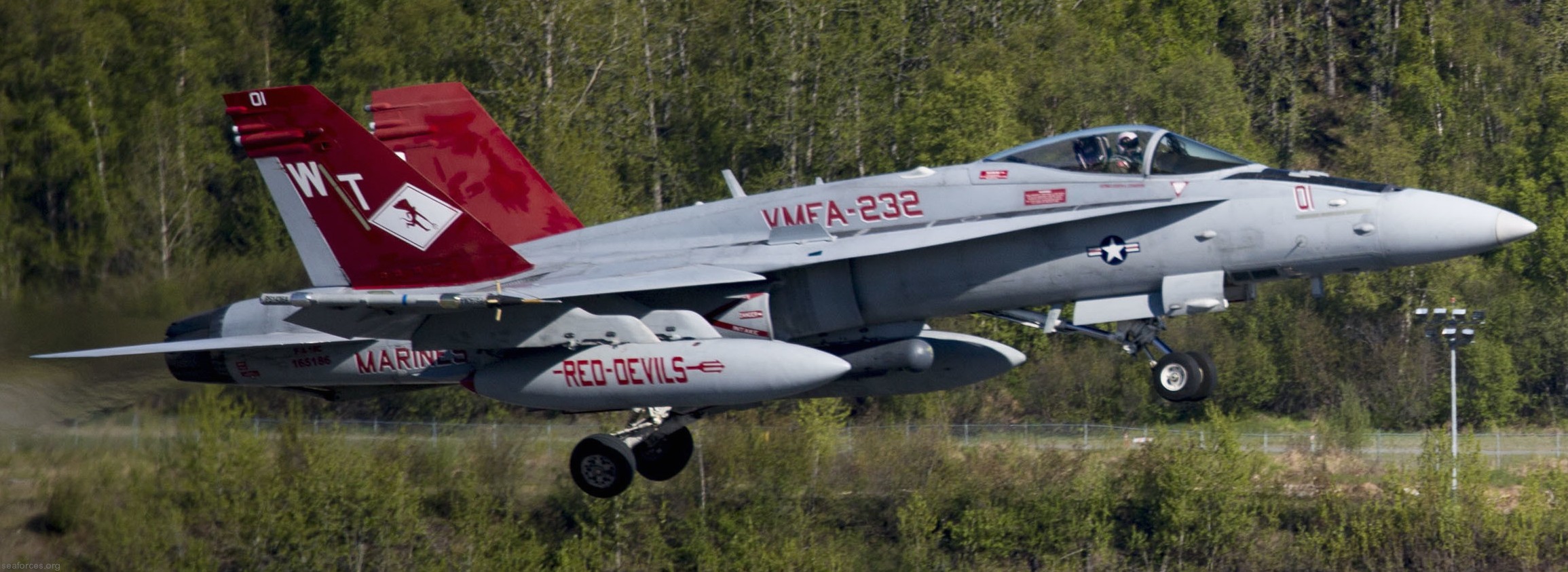 F/A-18C Hornet (VMFA-232) during exercise Distant Frontier at Joint Base Elmendorf-Richardson, Alaska - May 2017  F/A-18C Hornet (VMFA-232) during exercise Distant Frontier at Joint Base Elmendorf-Richardson, Alaska - May 2017  F/A-18C Hornet (VMFA-232) during exercise Distant Frontier at Joint Base Elmendorf-Richardson, Alaska - May 2017 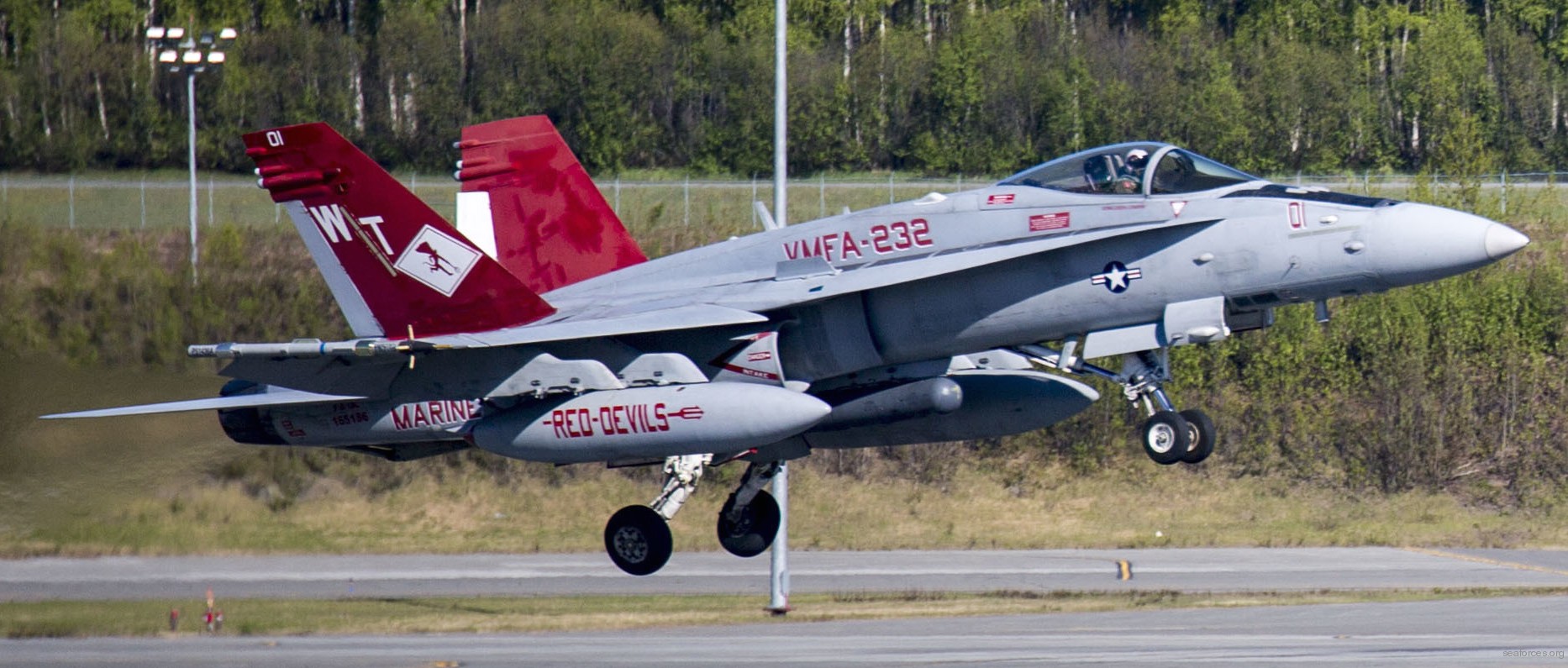 F/A-18C Hornet (VMFA-232) during exercise Distant Frontier at Joint Base Elmendorf-Richardson, Alaska - May 2017  F/A-18C Hornet (VMFA-232) during exercise Distant Frontier at Joint Base Elmendorf-Richardson, Alaska - May 2017 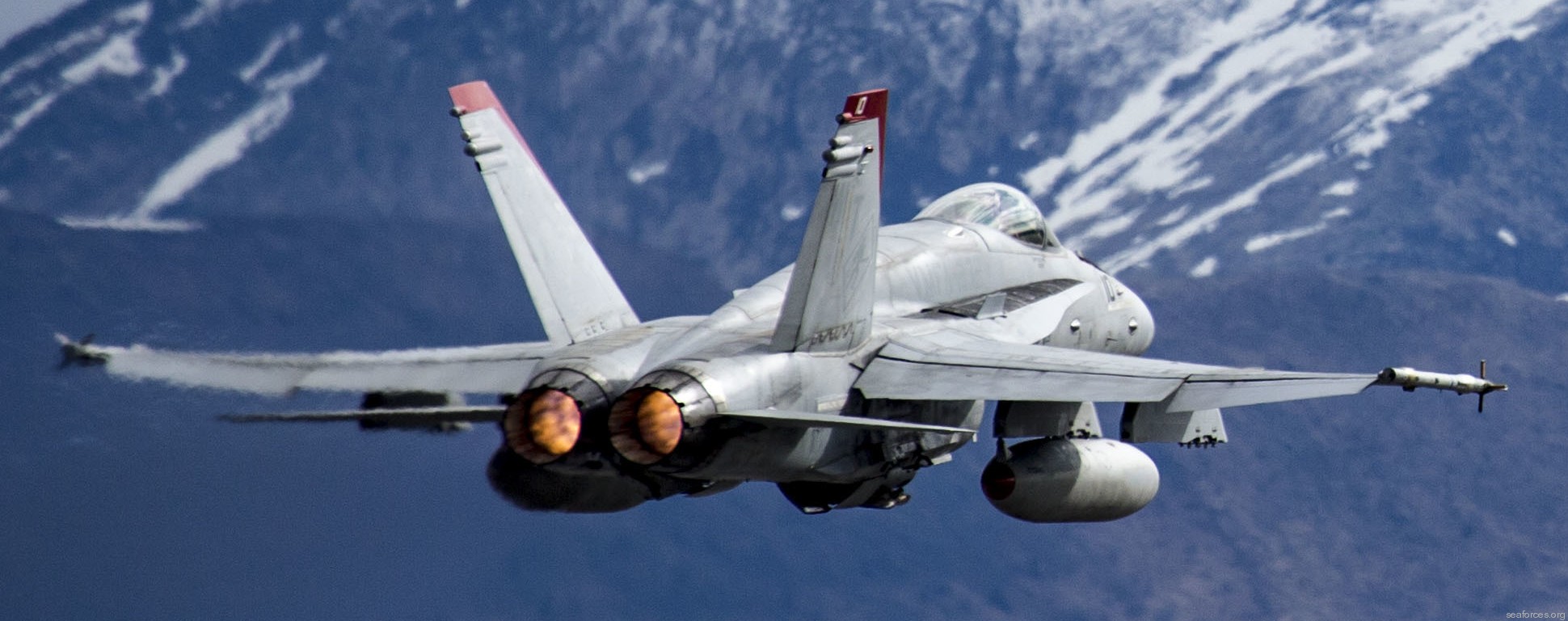 F/A-18C Hornet (VMFA-232) during exercise Distant Frontier at Joint Base Elmendorf-Richardson, Alaska - May 2017 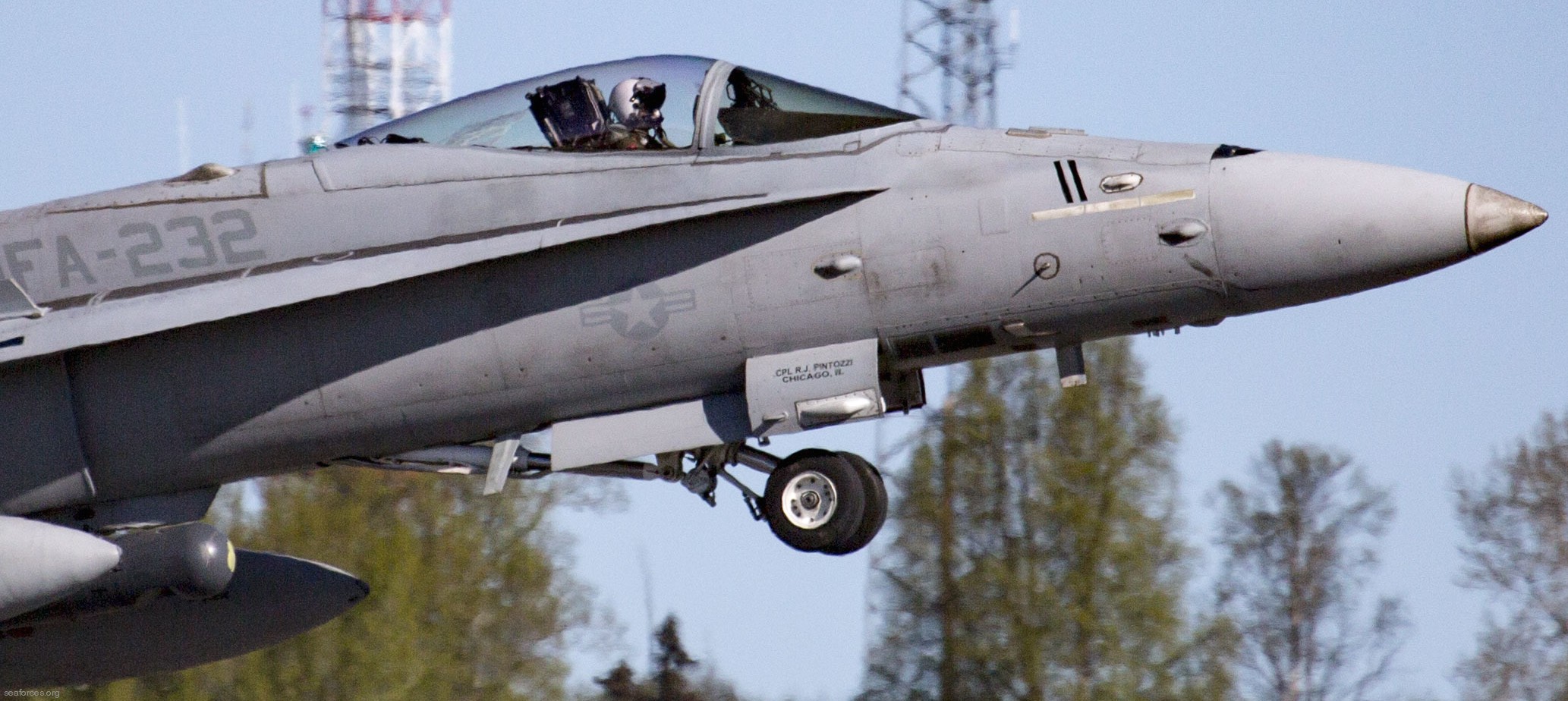 F/A-18C Hornet (VMFA-232) during exercise Distant Frontier at Joint Base Elmendorf-Richardson, Alaska - May 2017 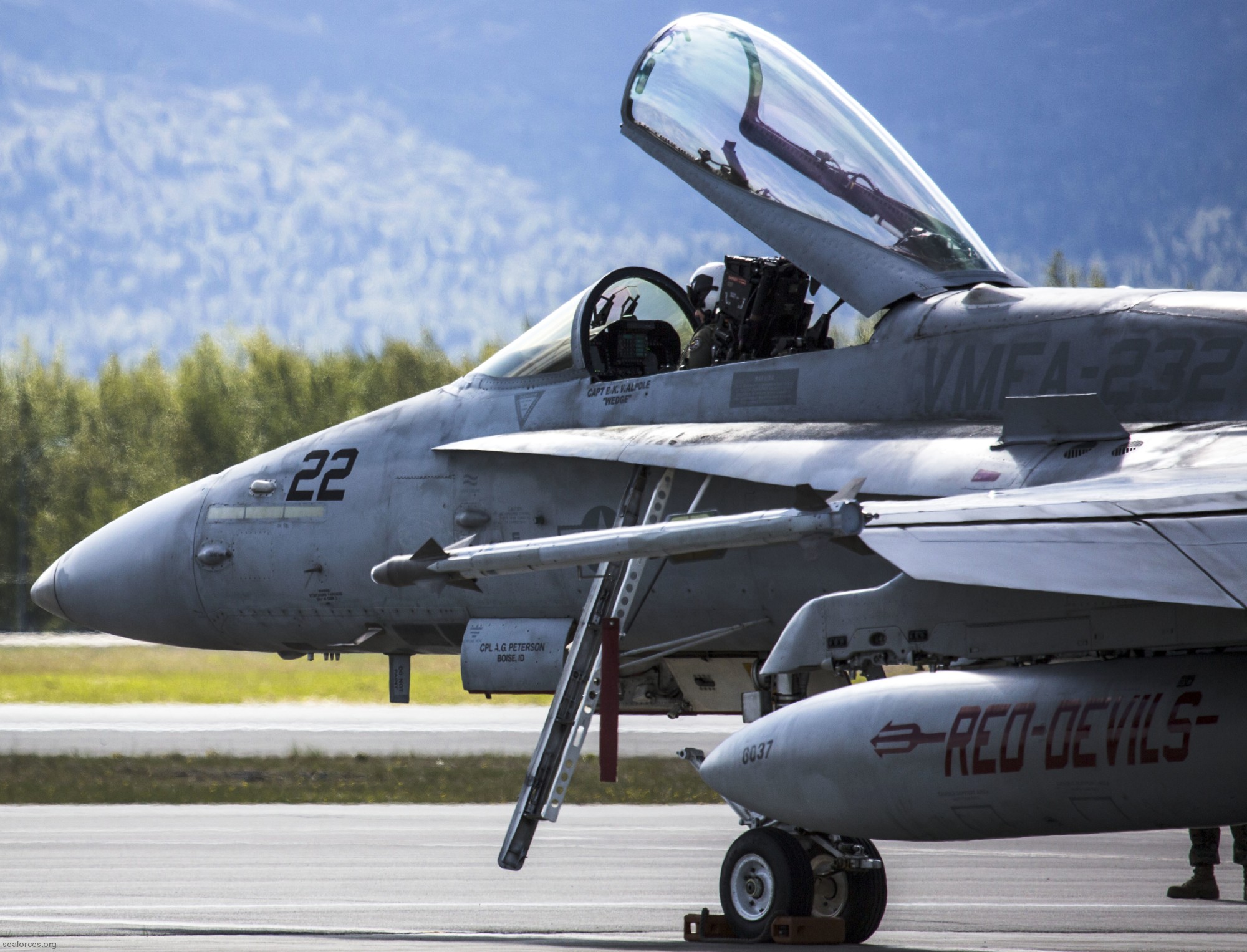 F/A-18C Hornet (VMFA-232) during exercise Distant Frontier at Joint Base Elmendorf-Richardson, Alaska - May 2017 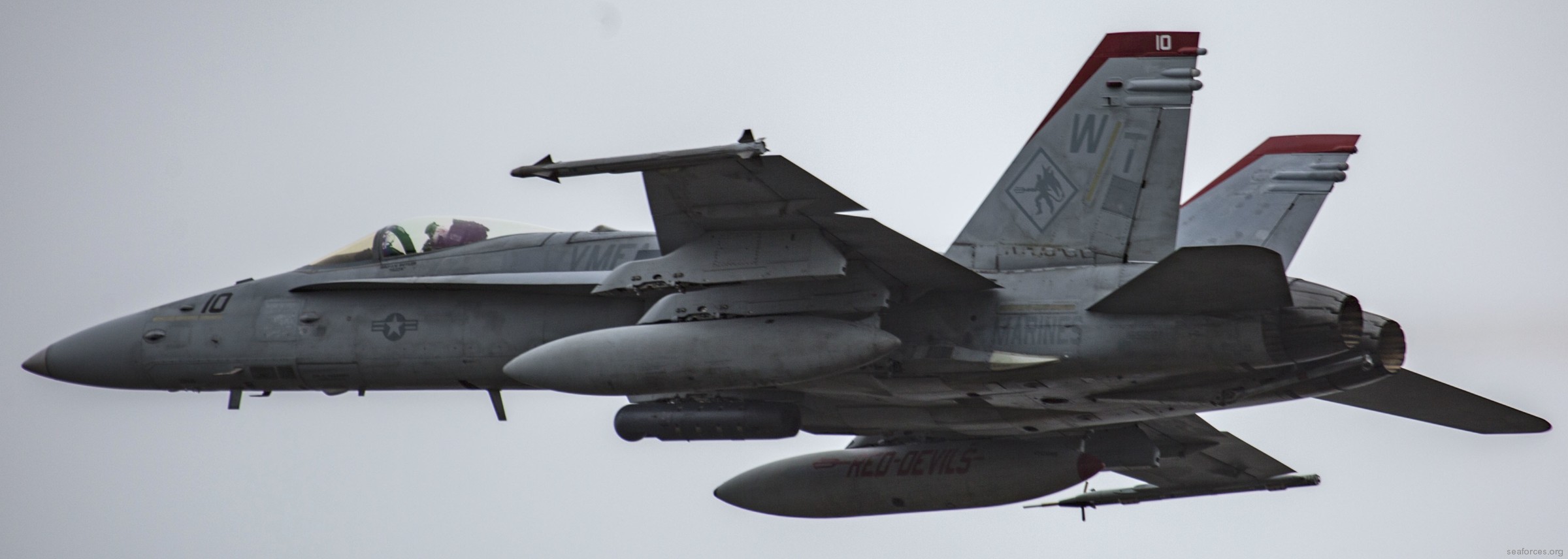 F/A-18C Hornet (VMFA-232) at Joint Base Elmendorf-Richardson, Alaska - May 2017 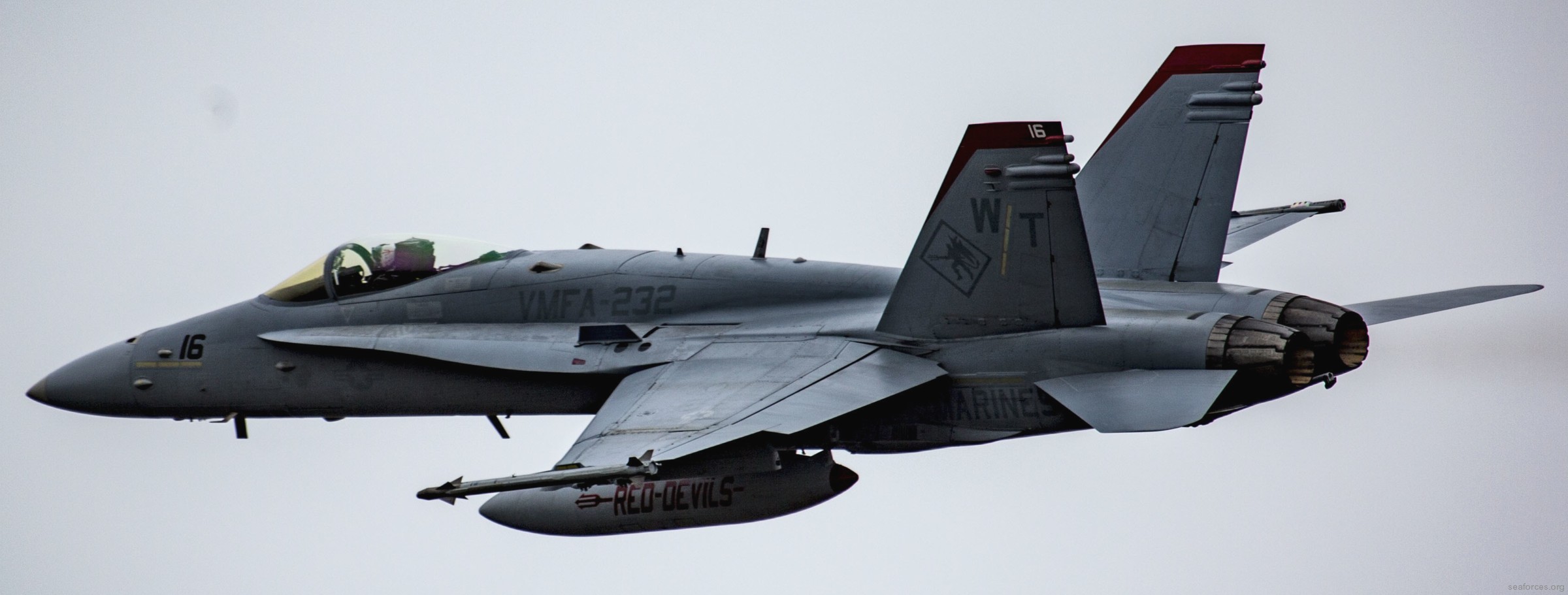 F/A-18C Hornet (VMFA-232) at Joint Base Elmendorf-Richardson, Alaska - May 2017 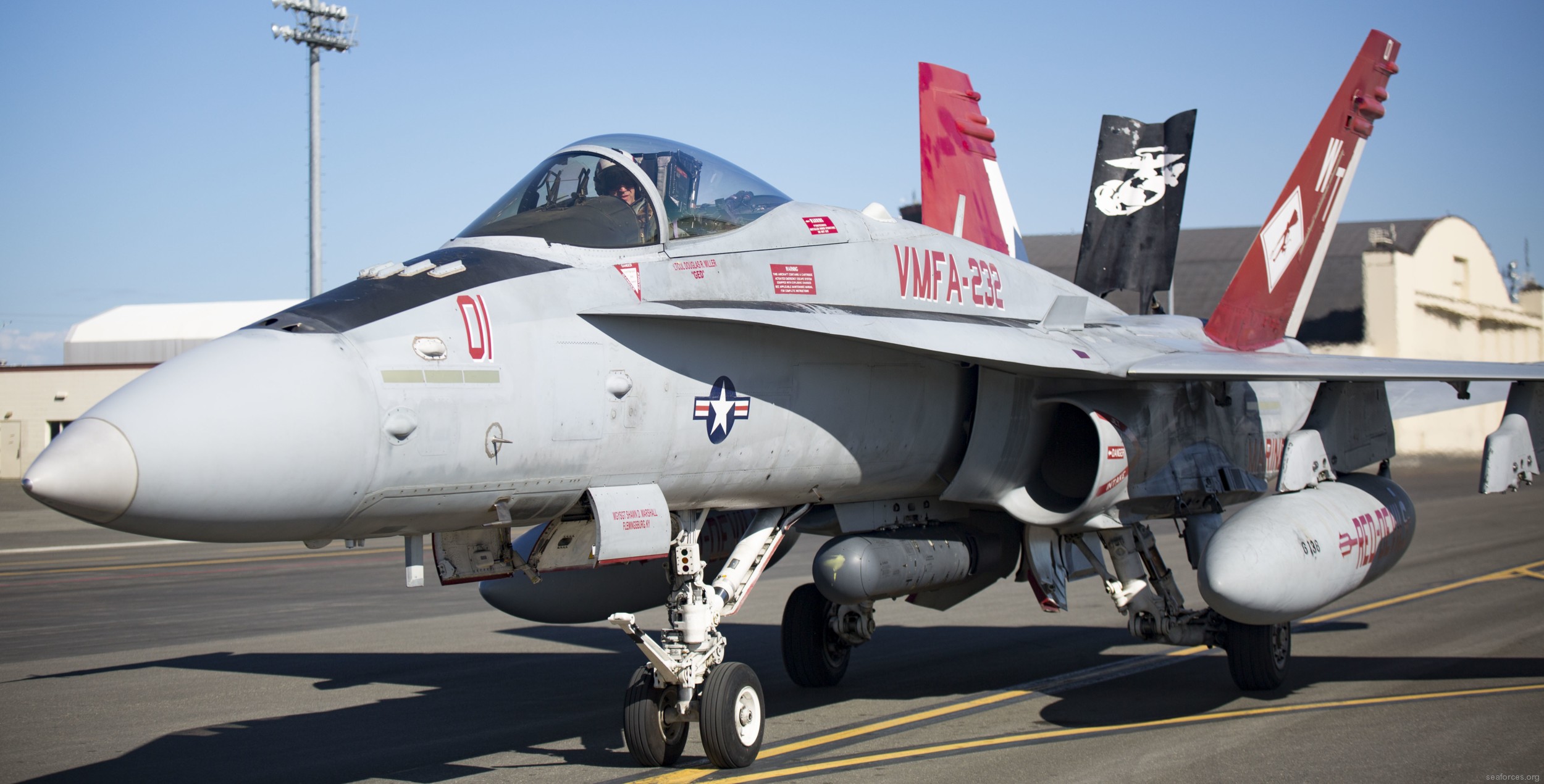 F/A-18C Hornet (VMFA-232) during exercise Northern Edge at Joint Base Elmendorf-Richardson, Alaska - May 2017 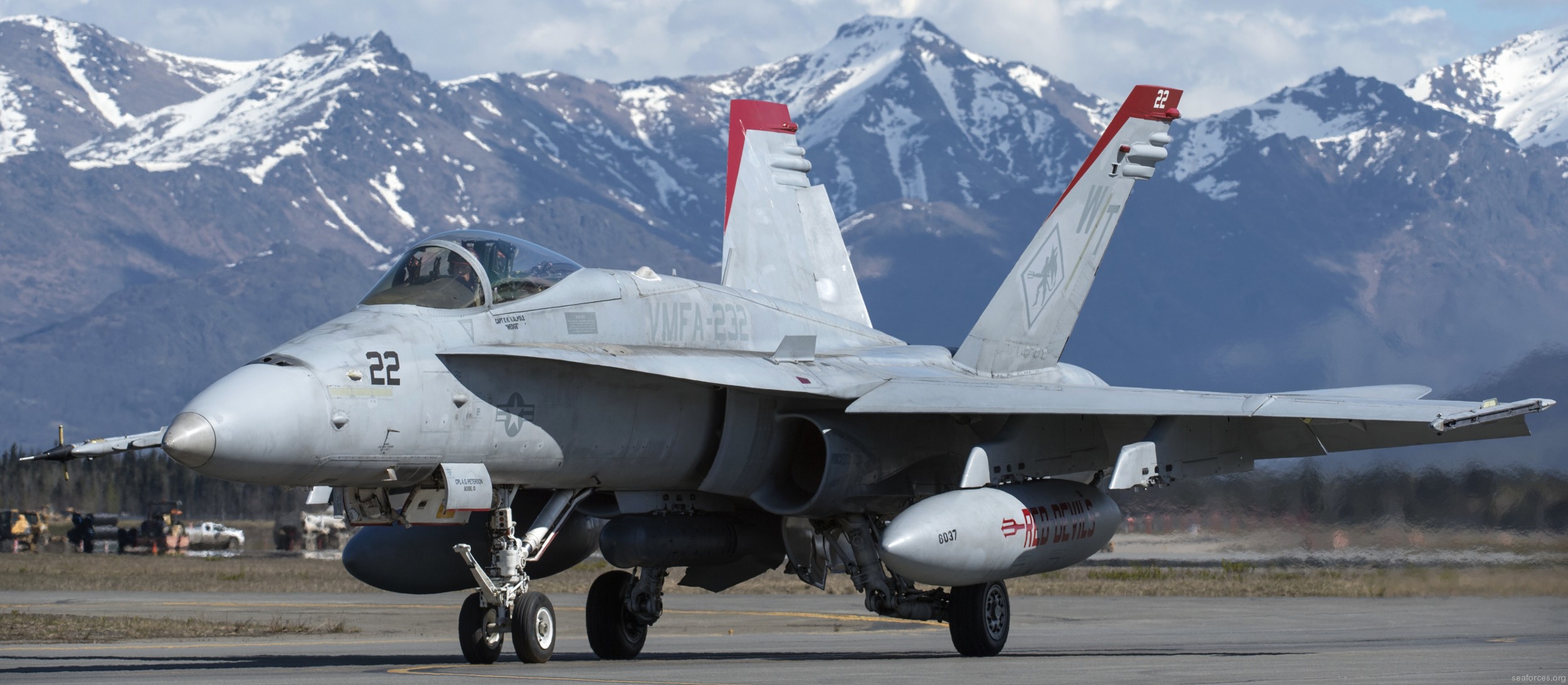 F/A-18C Hornet (VMFA-232) during exercise Northern Edge at Joint Base Elmendorf-Richardson, Alaska - May 2017 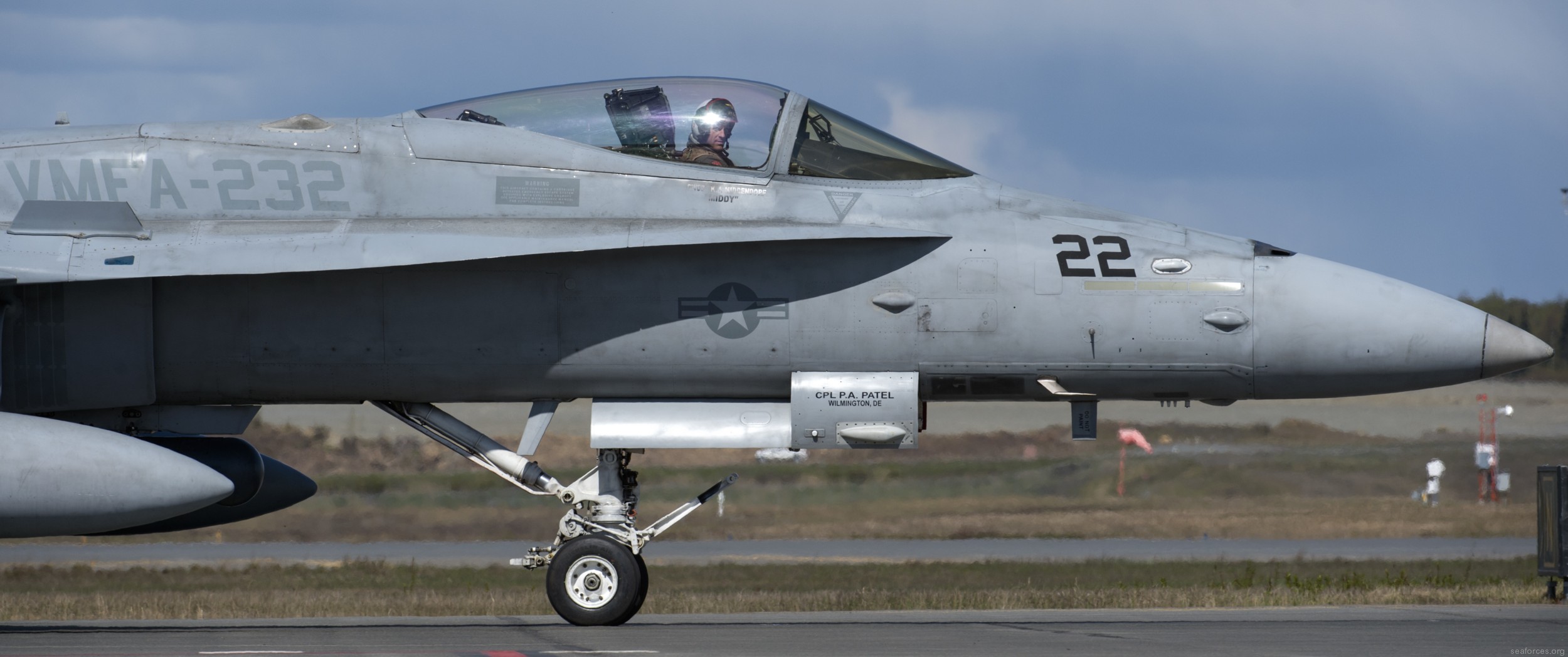 F/A-18C Hornet (VMFA-232) during exercise Northern Edge at Joint Base Elmendorf-Richardson, Alaska - May 2017 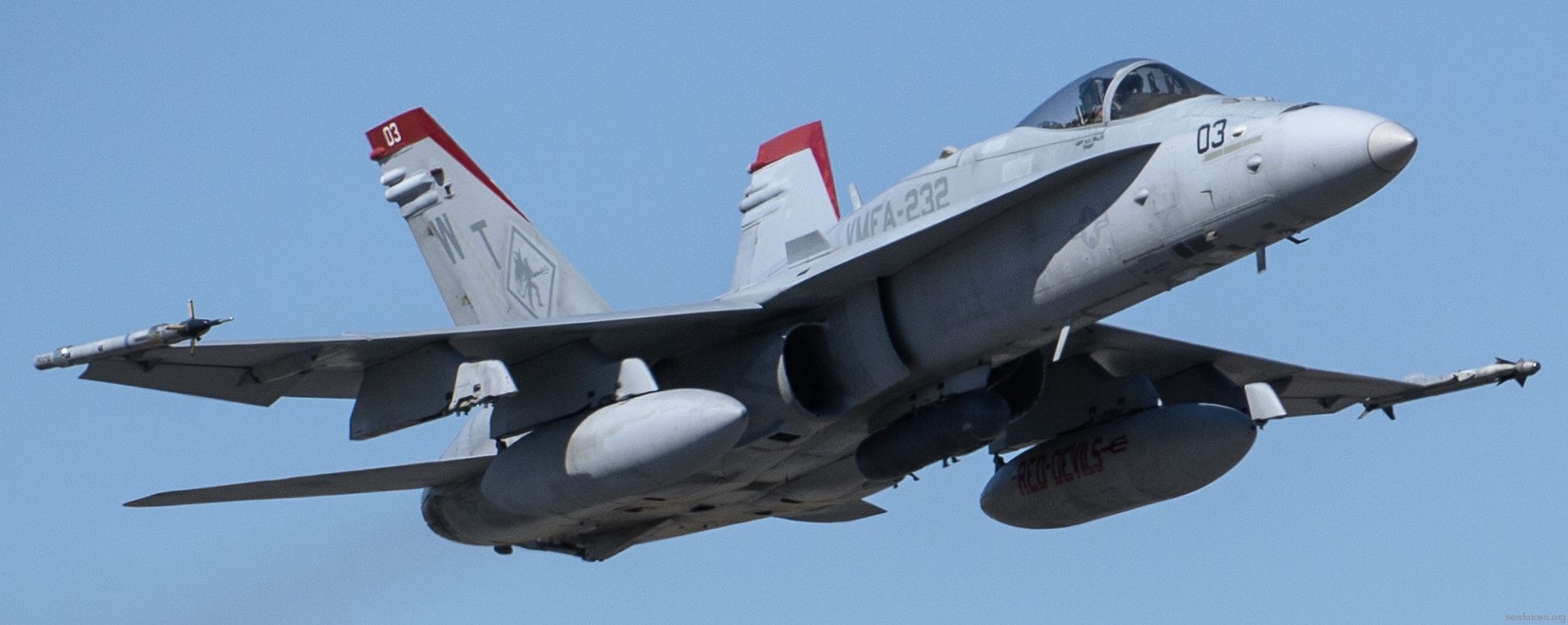 F/A-18C Hornet (VMFA-232) during exercise Northern Edge at Joint Base Elmendorf-Richardson, Alaska - May 2017 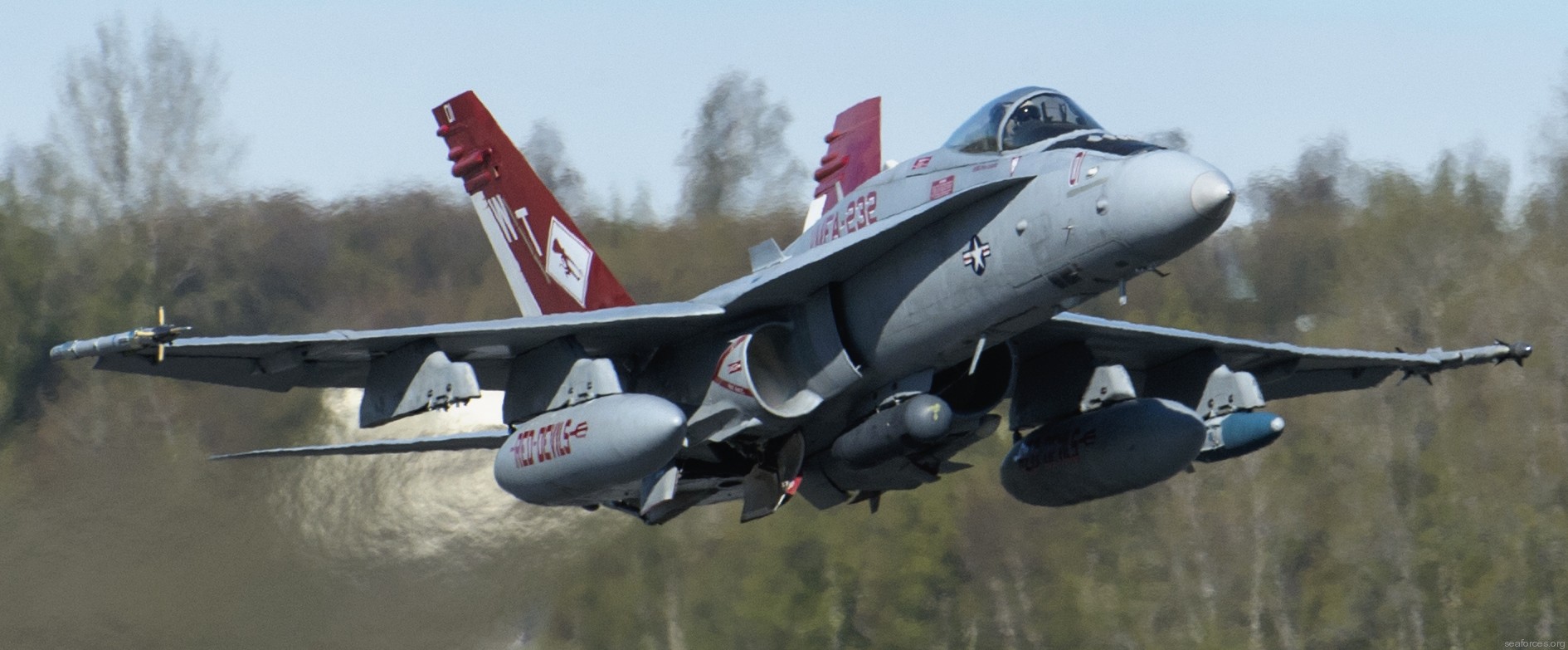 F/A-18C Hornet (VMFA-232) during exercise Northern Edge at Joint Base Elmendorf-Richardson, Alaska - May 2017 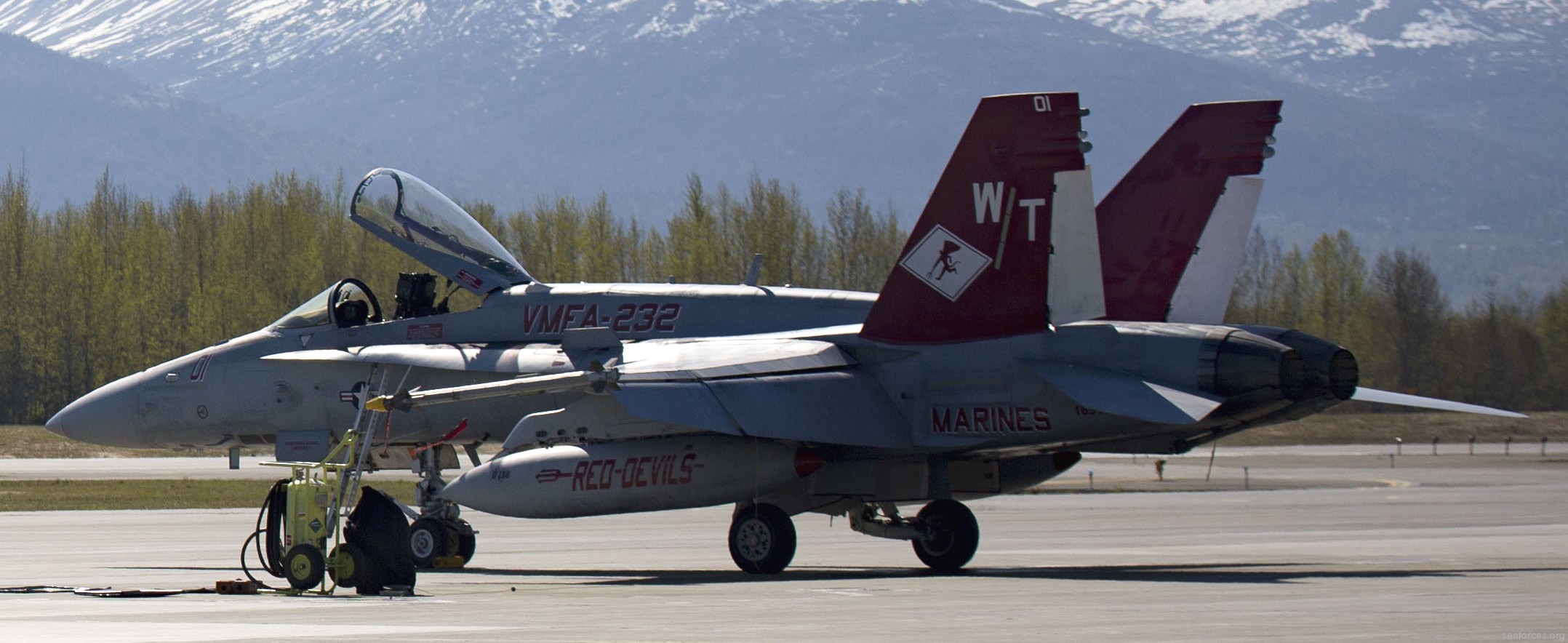 F/A-18C Hornet (VMFA-232) during exercise Northern Edge at Joint Base Elmendorf-Richardson, Alaska - May 2017 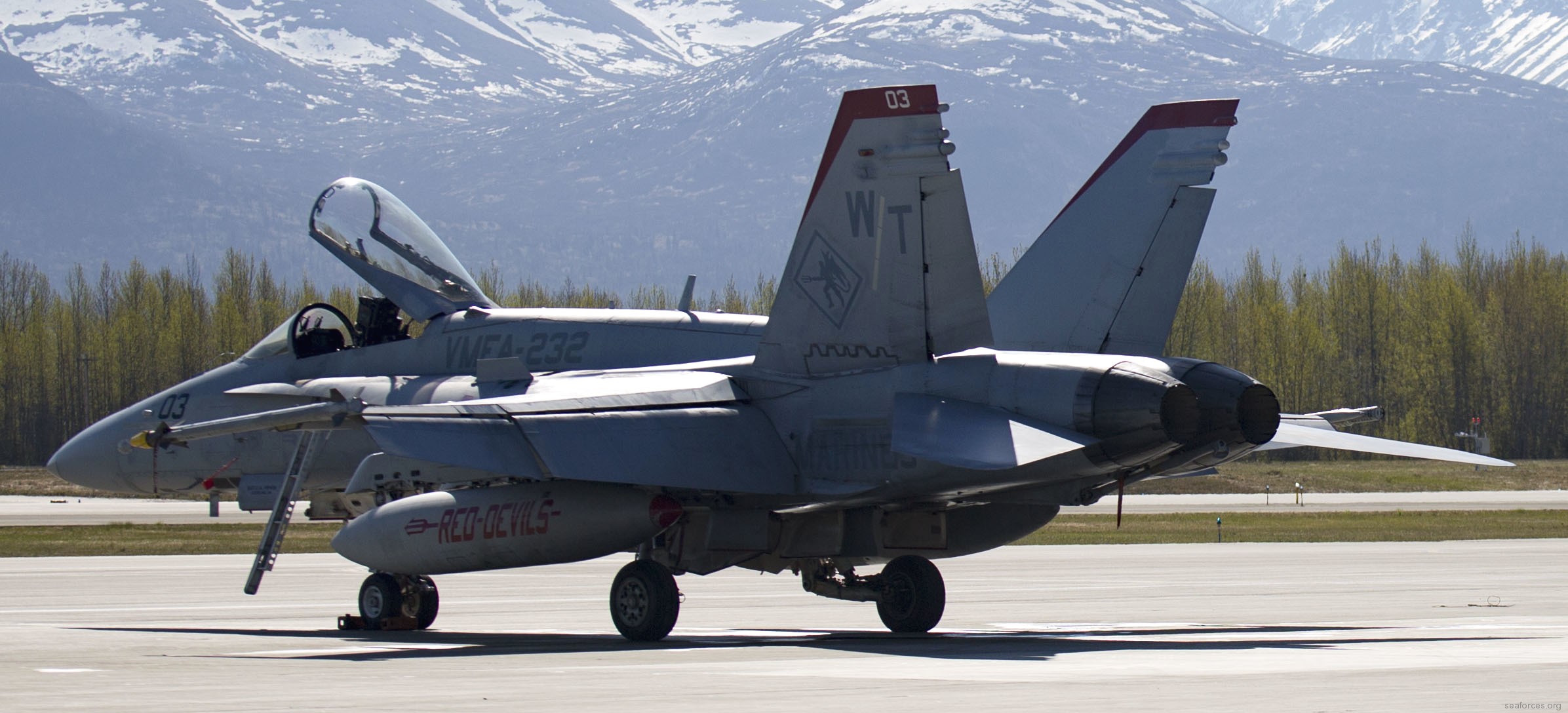 F/A-18C Hornet (VMFA-232) during exercise Northern Edge at Joint Base Elmendorf-Richardson, Alaska - May 2017 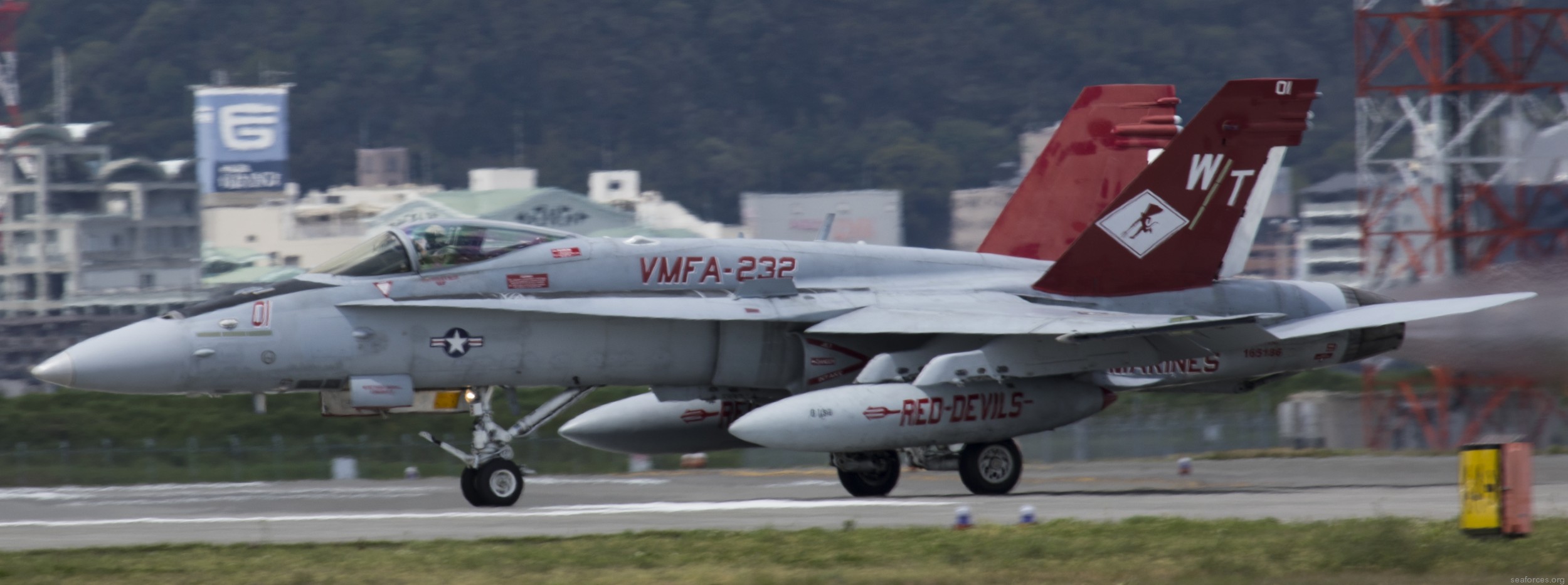 F/A-18C Hornet (VMFA-232) at MCAS Iwakuni, Japan - April 2017 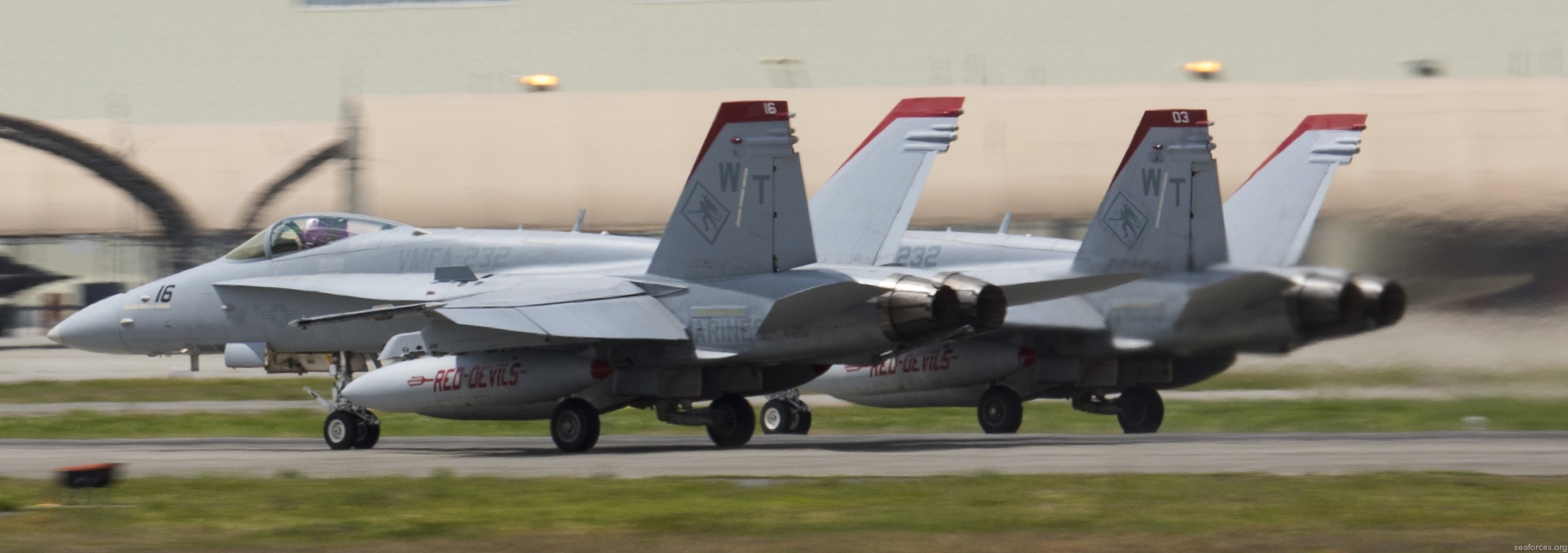 F/A-18C Hornet (VMFA-232) at MCAS Iwakuni, Japan - April 2017 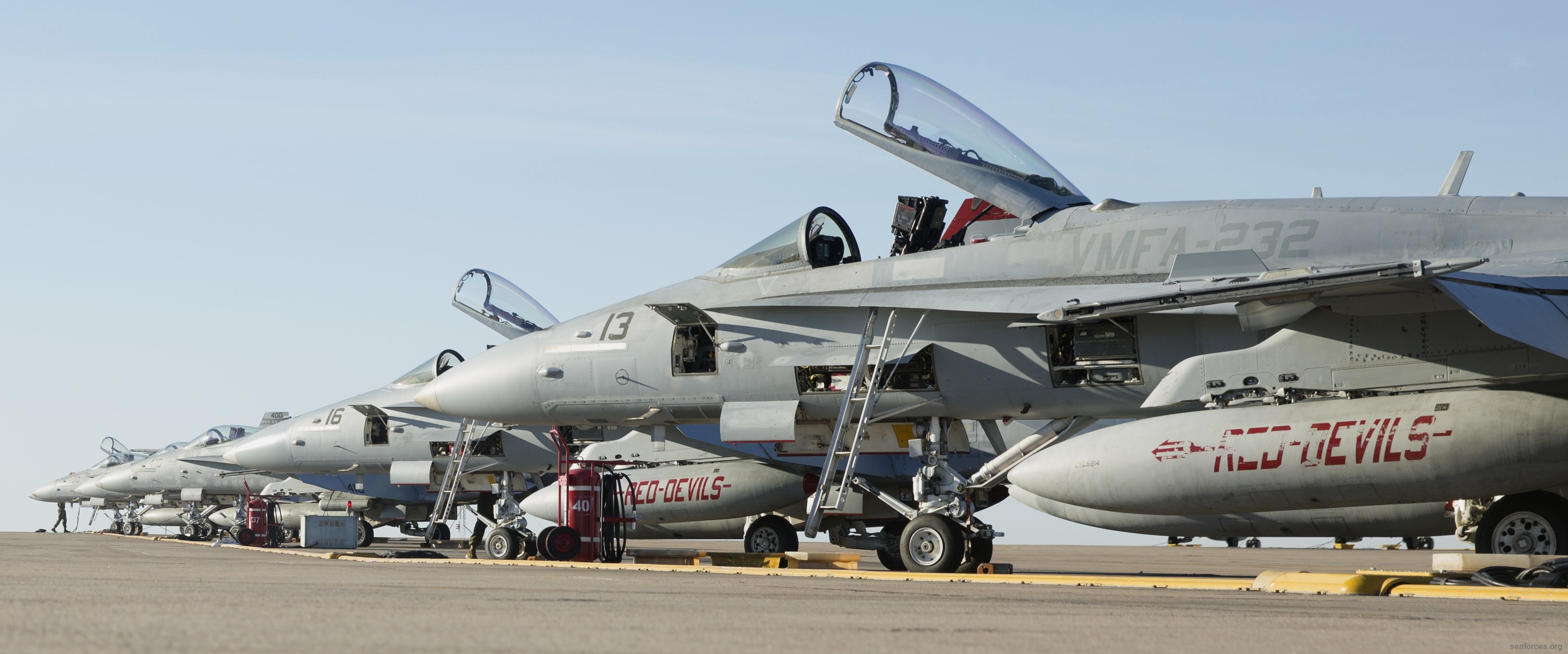 F/A-18C Hornet (VMFA-232) at MCAS Iwakuni, Japan - March 2017 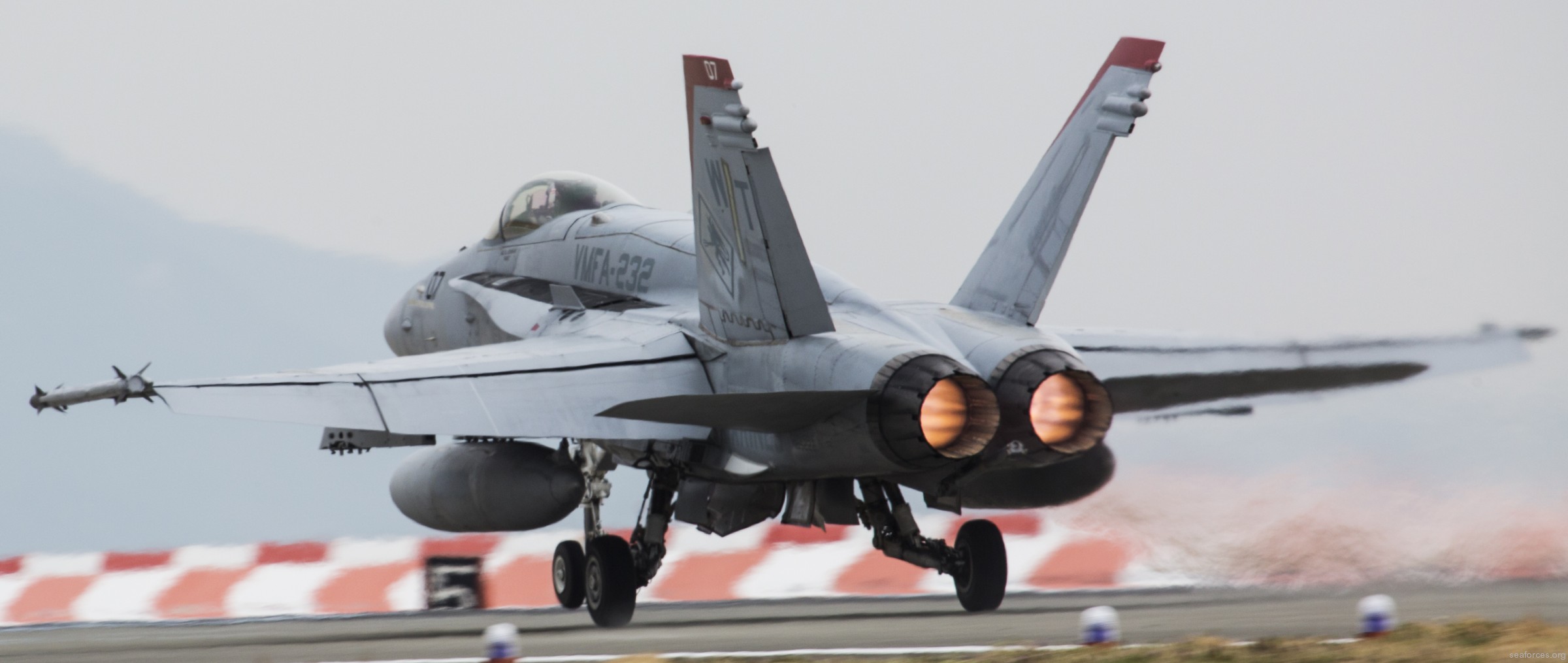 F/A-18C Hornet (VMFA-232) at MCAS Iwakuni, Japan - March 2017 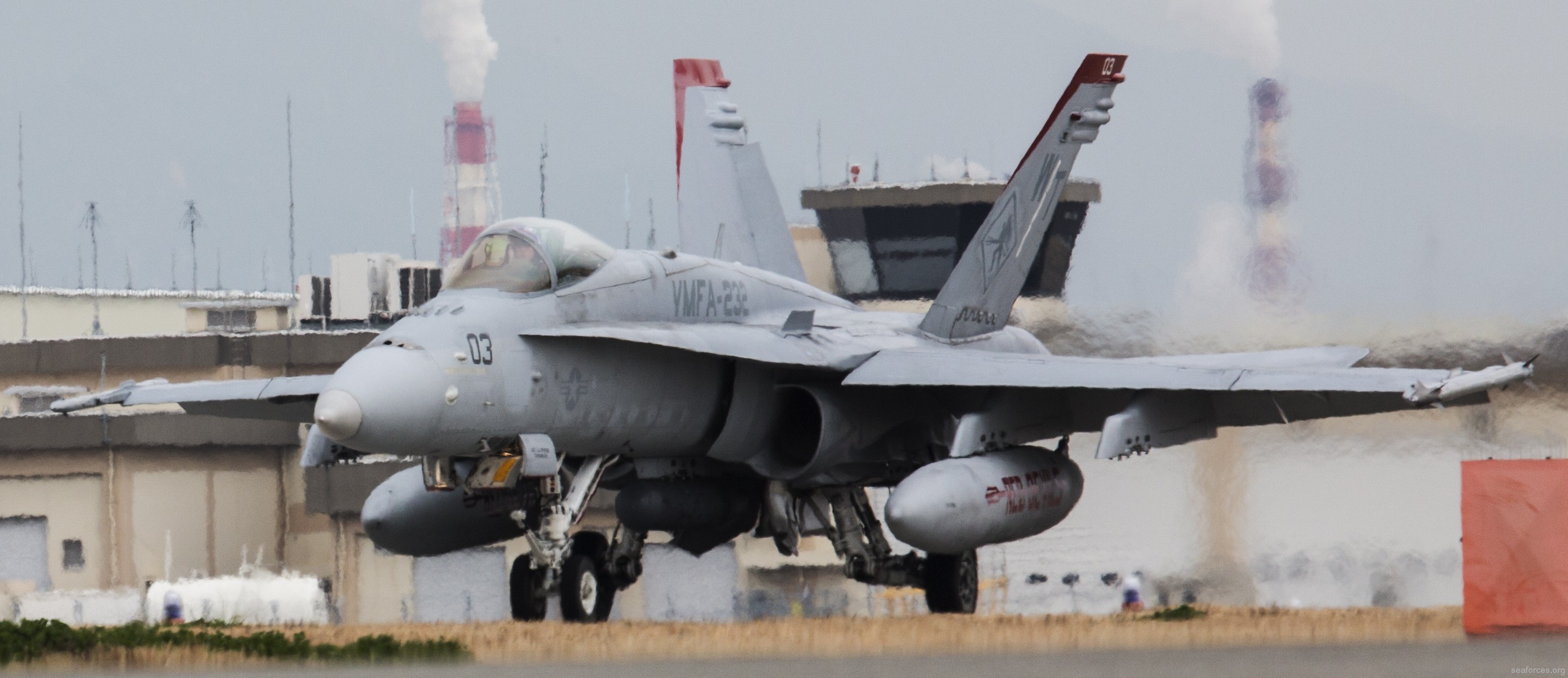 F/A-18C Hornet (VMFA-232) at MCAS Iwakuni, Japan - March 2017 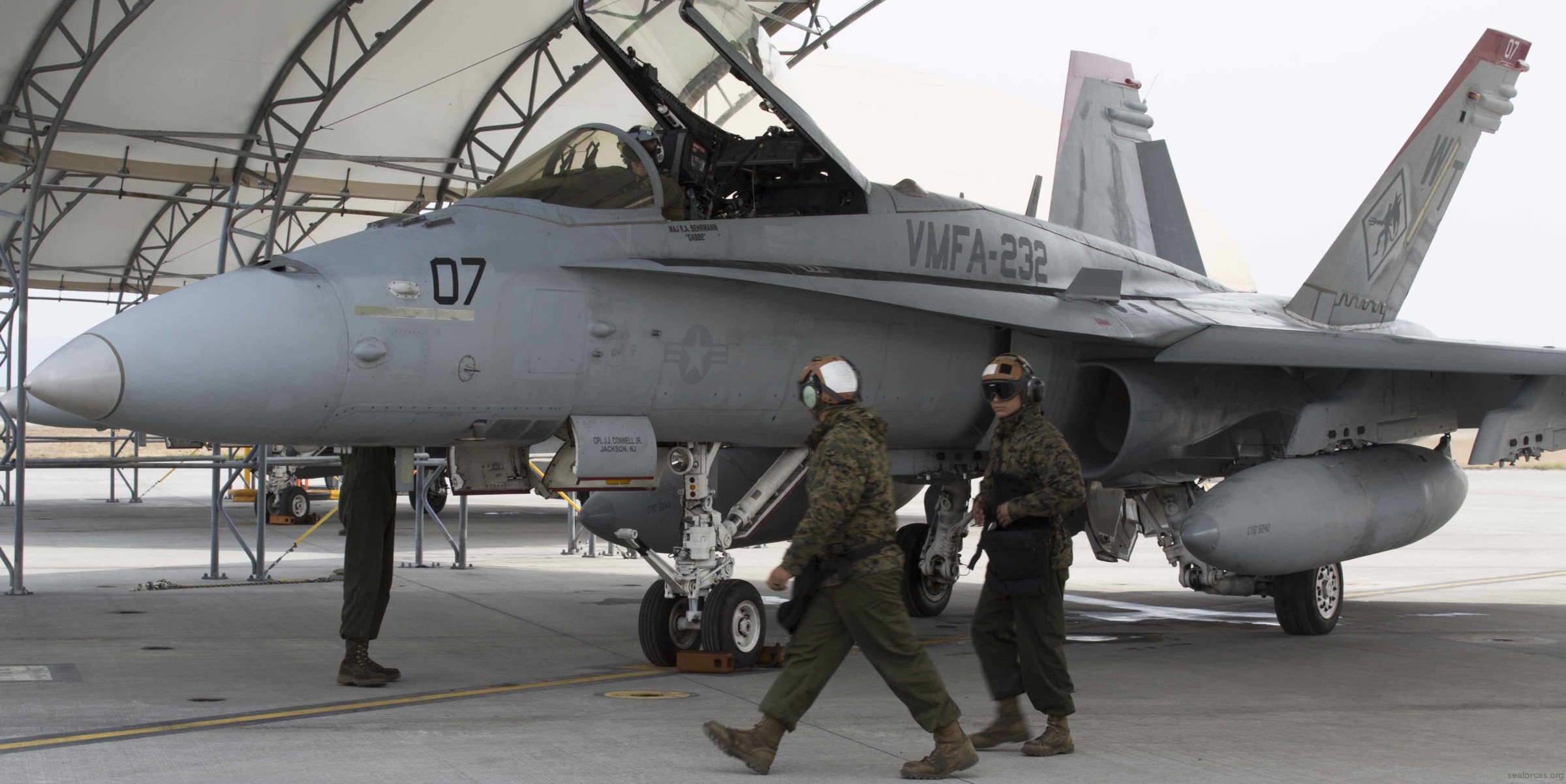 F/A-18C Hornet (VMFA-232) at MCAS Iwakuni, Japan - March 2017 > continue > VMFA-232 image page 2 < |
||||||
|
History: The history of the Marine Corps' oldest active fighter squadron began on 1 September 1925, at Naval Air Station San Diego, California. It was there that its first skipper, Second Lieutenant Clayton C. Jerome, took to the skies in a Vought VE-7SF single seat biplane with a shining "Red Devil" insignia clearly visible on the aft fuselage. The squadron's illustrious heritage began in earnest in April 1927 when the squadron embarked aboard USS HENDERSON and sailed from Shanghai, China, to provide reconnaissance and air support to General Smedley Butler's 3d Brigade. Between 1927 and 1936 the Red Devils flew four different aircraft including the FB-1, FB-5, F6C-4 Hawk, and F4B-4. In 1937, the unit was re-designated as Marine Bombing Squadron 2, flying the Great Lake BG-1 until it transitioned in late 1940 to the new Douglas SBD-1 Dauntless scout bomber. In response to mounting tension in the Pacific, the Red Devils deployed in 1941 to MCAS Ewa, Oahu, Territory of Hawaii. It was here that the squadron, now designated Marine Scout Bombing Squadron 232, saw its first combat action of World War II and suffered the loss or severe damage of nineteen of its twenty aircraft during the infamous Japanese attack against Pearl Harbor. While only one squadron Marine was killed in that attack, the Red Devils did not fair nearly as well on Wake Island, where a detachment of twenty-five enlisted Marines were all killed or captured while assisting in the defense of the doomed island. In August 1942, the opportunity came to avenge the attacks on Pearl Harbor and Wake Island. Flying the SBD-3 Dauntless from the decks of USS LONG ISLAND, the Red Devils became the first Marine dive-bomber squadron to fly against the Japanese and the first squadron to land at Henderson Field, Guadalcanal. When the squadron left Guadalcanal on 13 October 1942, the Commanding Officer was the only pilot of the original fifteen able to walk away from Henderson Field. Re-designated yet again in 1943 as Marine Torpedo Bombing Squadron 232 flying newly acquired Grumman TBF-1 Avengers, the Red Devils continued to pound enemy shipping, airfields, and installations throughout the entire Pacific until the end of hostilities in August 1945. The price of victory did not come cheaply. During its participation in operations throughout WWII, VMTB-232 lost forty-nine Marines and seventeen aircraft. On 16 November 1945, the squadron, one of the few to earn two Presidential Unit Citations during the war, returned home to San Diego, and was temporarily decommissioned. The Red Devils were reactivated in the Marine Corps Reserve on 3 June 1948, flying the Grumman F6F-5 Hellcat at NAS Floyd Bennett Field in New York. With the outbreak of hostilities in Korea, the squadron was placed on alert and ordered to MCAS El Toro, California. Here the squadron received the first delivery of the Chance-Vought F4U-4 Corsair. Although the unit itself did not deploy to Korea, by April 1951 nearly all the original aviators and forty percent of the enlisted Marines in the squadron had been detached and sent overseas for combat duty. In March 1953, the Red Devils transitioned to the jet age with the receipt of the Grumman F9F-2 Panther. In 1954, homeport for the Red Devils was changed from MCAS El Toro to MCAS Kanehoe Bay, Hawaii. In 1956 the Red Devils changed aircraft once again to the North American F4-J Fury. While on deployment aboard USS BENNINGTON in 1958, the squadron flew combat air patrol missions in support of the Taiwan Defense Command during the Communist bombardment of Quemoy and Matsu Islands. In 1962, the squadron again transitioned to a new aircraft. With the receipt of their Chance-Vought F-8D Crusaders, the Red Devils' designation was changed to VMF(AW)-232. During this period, the squadron participated in various exercises and deployment to the Philippines and aboard USS ORISKANY. As a result of intensification of operations in Southeast Asia, the Red Devils departed Kanehoe Bay and became fully operational in Da Nang, Vietnam, December 1966. While flying combat missions for the next 290 consecutive days, the Red Devils set new records flying 5,785 sorties and 7,273 flight hours, delivering 6,221 tons of ordnance. In September 1967, the squadron returned to MCAS El Toro and painted the Red Devil insignia on their new McDonnell Douglas F-4 Phantoms. Re-designated as Marine Fighter Attack Squadron 232, the squadron returned to MCAS Iwakuni, Japan, as a MIG-alert squadron and subsequently deployed to Da Nang, Vietnam, and Nam Phong, Thailand. Here they continued to fly air-to-ground sorties in addition to playing a key fighter role in Operation LINEBACKER missions over North Vietnam. The only "last" in VMFA-232's history occurred on 1 September 1973, as the Red Devils became the last Marine squadron to leave Southeast Asia. The squadron returned to Iwakuni, Japan, as a force in readiness while participating in numerous training deployments and exercises. In 1974, the standard of excellence achieved by the Red Devils earned them the coveted Robert M. Hanson award as the Marine Fighter Attack Squadron of the Year. In October of 1977, the Red Devils returned to MCAS Kaneohe Bay, Hawaii, after an eleven-year absence. This event marked the beginning of Red Devil participation in the demanding Western Pacific Unit Deployment Program. The squadron completed their sixth WestPac deployment in October 1986, then prepared to transition from the F-4J Phantom II to the F/A-18A Hornet. In 1988, the last Red Devil Phantom was flown to the Smithsonian Air and Space Museum. In early 1989, the Red Devils began the transition to the Hornet with its pilots training at VMFAT-101 in El Toro, California and the maintainers training at NAS Lemoore, California. By June 1989, the squadron had reunited at MCAS Kanehoe Bay, Hawaii. In December 1990, the squadron deployed to Shaik Isa Air Base, Bahrain, in support of Operation DESERT SHIELD. On 17 January 1991, the Red Devils were among the first to cross the Iraqi border during Operation DESERT STORM. During 41 days of combat operations, the Red Devils completed 740 combat missions totaling 1,390 combat flight hours. Upon returning to MCAS Kanehoe Bay in April 1991, the Red Devils participated in several WestPac deployments and changed their home station in early 1993 to MCAS El Toro, California, and again in 1995 back to their birthplace of San Diego, California at NAS (soon to become MCAS) Miramar. The squadron also achieved a safety milestone during this period by surpassing 50,000 mishap free flight hours. From 1995 to 2000 the squadron continued its proud tradition of excellence by completing eleven Combined Arms Exercises and four UDP deployments while amassing five Chief of Naval Operations Safety Awards for the years 1995, 1997, 1998, 1999 and 2000. Additionally, in 1996 the squadron once again earned the honored Robert M. Hanson Award as the Marine Fighter Attack Squadron of the Year. In the wake of the events of September 11, 2001, VMFA-232 deployed to Andersen AFB, Guam to assume the mission of homeland defense of Guam and the Marianas Islands. While supporting Operation NOBLE EAGLE, the Red Devils surpassed 90,000 mishap free flight hours, setting a new record in Marine Fighter Aviation. As tensions mounted in the Middle East, the Red Devils deployed in February 2003 to Ahmed Al Jaber Air Base, Kuwait, to support Operation SOUTHERN WATCH. As Operation IRAQI FREEDOM began, the Red Devils were among the first to fly in the combat zone. From March to May 2003, VMFA-232 flew over 800 combat sorties, the most in MAG-11, totaling 1700 hours, while dropping over 640,000 pounds of ordnance on enemy positions. By doing so, the Red Devils significantly contributed to the destruction of eight Iraqi divisions, allowing I MEF to advance toward Baghdad with significantly reduced resistance. Once back at MCAS Miramar, 2004 proved to be a year of change for Marine Fighter Attack Squadron 232. The Red Devils became the first Marine Hornet squadron to begin the Department of the Navy's Tactical Aircraft Integration plan. Throughout the second half of 2004, the squadron completed detachments to NAS Fallon, Nevada, aboard USS ABRAHAM LINCOLN with Carrier Air Wing TWO, and aboard USS NIMITZ with Carrier Air Wing ELEVEN to take part in their first Strike Fighter Advance Readiness Program (SFARP), Tailored Ships Training Activity (TSTA), and Composite Training Unit Exercise (COMPTUEX). From May to November 2005 the Red Devils deployed aboard an aircraft carrier for the first time in forty-six years. While deployed, the squadron operated out of the Arabian Gulf and flew over 200 combat sorties totaling 1200 hours in support of Operation IRAQI FREEDOM. On 1 September 2005, the Red Devils celebrated their 80th anniversary. Upon returning home the squadron deployed in full to support a Weapons and Tactics Instructor course in Yuma, Arizona. In May 2006 the Red Devils transitioned aircraft once again, this time from the F/A-18C to the F/A-18A+ airframe. While the Red Devils now found themselves flying and maintaining the oldest Hornets in the active-duty Navy or Marine Corps, the vast array of weapons and avionics systems upgrades represented a tremendous increase in combat capability. Shortly thereafter the squadron began preparing for another carrier deployment. After completing five pre-deployment detachments both afloat and ashore, the Red Devils deployed once again aboard USS NIMITZ in April 2007, this time to support Operation ENDURING FREEDOM. During the 2007 deployment on board the USS Nimitz the squadron continued its long tradition of support of US troops and Marines engaged in combat. Operating in the Persian Gulf and North Arabian Sea the Devils flew combat sorties in support of both Operations Enduring and Iraqi Freedom. The Squadron employed precision and unguided munitions to include strafing runs in support of troops in both theaters of operation. During the Western Pacific deployment of 2007 the squadron accumulated 1124 arrested landings and flew 2400 hours from the USS Nimitz. The squadron returned to MCAS Miramar in Sept 2007 after a successful deployment. As part of the Navy’s Fleet Readiness Program the squadron was scheduled for a quick turnaround and another surge deployment to the Western Pacific only four months later. The Devils set sail aboard the Nimitz again on 2 April 2008 for its 2nd Western Pacific cruise in 12 months. This deployment brought the Devils into the Western Pacific to work with the US Air Force and air forces of Allied Asian nations and participated in several bilateral and multinational exercises around the Pacific Rim. In 2009 the Red Devils continued training to support Marines deployed throughout the globe participating in Exercise Jaded Thunder in Tampa, Florida, as well as embarking on a squadron air to air detachment in October to NAS Key West. The year ushered in a series of maintenance inspections culminating with the Commander Naval Air Forces (CNAF) inspection. The results were the best seen by the inspection team in over three years and a testament to the professionalism of the maintenance department as a whole. In February 2010 the Red Devil’s embarked the squadron to the Strategic Expeditionary Landing Field in 29 Palms, CA for Enhanced Mojave Viper. As the first resident F/A-18 squadron in over five years, VMFA-232 reset the standard for fixed wing operations. Flying sorties day and night in conjunction with MV-22’s, UH-1’s, and AH-1’s the squadron demonstrated flexibility and tremendous capability. Assessed as combat ready by evaluators from both TTECG and MAWTS-1 the Red Devils were set to deploy following a Commanding Generals Inspection (CGIP) upon their return to Miramar in April of 2010. The results of the inspection matched those of the CNAF the previous year. Of 54 programs evaluated all received a passing grade once again resetting the bar for performance within MAG-11. From May to November 2010, the squadron deployed ten F/A-18C and two F/A-18D aircraft to Kandahar Airfield, Afghanistan in support of Operation Enduring Freedom. As the first land based F/A-18 squadron in Afghanistan, the Red Devils flew over 1700 sorties and 4900 combat hours. Flying under the callsign “Stoic” the Red Devils dropped over 71,000 lbs of ordnance and shot over 20,000 rounds of 20mm in support of Marines and coalition forces in the Helmand Province. With nearly every employment inside of 500 meters VMFA-232 quickly gained the special trust and confidence of battalion commanders, air officers, joint tactical air controllers, and the individual Marine or coalition partner on the ground. The callsign “Stoic” became a known and much preferred brand of support. As the deployment progressed ground forces ceased requesting first available fixed wing support, but simply requested “Stoic”. VMFA-232’s successful pre-deployment training plan and subsequent combat deployment earned them the coveted Robert M. Hanson award as the Marine Fighter Attack Squadron of the Year 2011. source: USMC - - - - - another history: The early years: VMFA-232 can trace its lineage back to VF-3M, which was commissioned on September 1, 1925, at Naval Air Station San Diego, California. Originally equipped with Vought VE-7s, the squadron received three of the new Boeing FB-1s in the first part of 1926, allowing them to operate one division of modern aircraft while retaining the older VE-7s for training purposes. With the civil war in China threatening American interests, it was decided to deploy U.S. forces and in November and December 1926, seven additional FB-1s were transferred to VF-3M from VF-1M and VF-2M on the east coast, bringing the squadron's complement to 10 FB-1s. As diplomacy and planning was taking place on the international level, the squadron concentrated on familiarizing itself with their new aircraft and training the influx of new pilots. On April 7, 1927, VF-3M departed San Diego bound for China on the transport USS Henderson, but upon arrival, no airfield was available for operations. After waiting in the Philippines for almost two months, the squadron returned to China and eventually operated from airfields at Tientsin and Hsin-Ho, where they supported the 3rd Brigade. Shortly after setting up camp and starting flight operations, the squadron was redesignated VF-10M on July 1, 1927, the first of many changes in designation caused by the reorganization of naval aviation assets. The mission to China demonstrated that Marine Aviation was vital to the expeditionary role Marine forces were called on to perform and the squadron performed photography, mapping and reconnaissance missions while deployed. Another change in designation occurred while the squadron was still in China, when on July 1, 1928, the squadron was redesignated VF-6M. With its mission in China completed, the squadron withdrew on October 3, 1928, arriving back at San Diego on October 31, 1928, after stops at Guam and Hawaii. With its return to San Diego, most of the squadron's personnel were transferred to other units and the next year was spent re-organizing and training new personnel as they arrived. In addition to new pilots, several Boeing FB-5s were assigned to the squadron in 1929, the last of the in-line aircraft to be used by Marine squadrons. On July 1, 1930 the squadron was again re-designated, this time reverting to VF-10M, but the most noticeable change was the replacement of the FB-5s with Curtiss F6C-4s, the first radial engine fighters the squadron would be assigned. The squadron would operate the F6C-4s for over two years and be awarded the Herbert H. Schiff Cup for aviation safety before they were replaced by factory-fresh Boeing F4B-4s in late 1932, the most advanced biplane fighter in service at that time. In 1932, it was determined that Marine Aviation should be provided with two light bombing squadrons, and on July 1, 1933, VF-10M became VB-4M, and was re-equipped with Boeing F4B-3s, a move considered a step back by members of the squadron. Participation in the Los Angeles National Air Races and annual Fleet Exercises were part of the routine that marked the squadron's activity in the early 1930s. In 1935, the squadron received 16 Great Lakes BG-1s, large two-place dive bombers that would equip the squadron for over five years. On July 1, 1937, Marine aviation was completely reorganized to conform to Navy requirements, and VB-4M became VMB-2. Still flying the BG-1, the squadron continued to take part in the annual Fleet Exercises, and in December 1940, the squadron began receiving the new Douglas SBD-1, the first mono-plane in Marine Corps service. Arrival of the SBD also marked the first time that the Red Devil insignia was not carried on the squadron's aircraft, even though it was authorized to do so. World War II: With the tension in the Pacific increasing, VMB-2 was deployed to Marine Corps Air Station Ewa, Oahu, Hawaii. Early 1941 also saw the transition from the colorful pre-war scheme to the tactical, and less colorful, light gray scheme, but still the Red Devil insignia was absent. On July 1, 1941, in anticipation of the large expansion marine aviation was about to undergo, VMB-2 became VMSB-232, the designation it carried during the Japanese attack on Pearl Harbor during which one member of the squadron was killed and nine of the squadron's aircraft were destroyed, with ten more requiring major overhaul. On Wake Island, a Red Devil detachment suffered twenty five enlisted Marines killed or captured while assisting in the defense of the doomed island. On August 20, 1942, the squadron became part of the Cactus Air Force. and flew SBD Dauntlesses from Guadalcanal's 3,000-foot dirt runway Henderson Field. The Red Devils became the first Marine dive bomber squadron to fly against the Japanese. They left Guadalcanal on October 12, 1942, and headed for Marine Corps Air Station El Toro, California, where they were redesignated yet again as Marine Torpedo Bombing Squadron 232 (VMTB-232), flying newly acquired Grumman TBF Avengers. They returned to the Pacific in July 1943 when they were originally based in Espiritu Santo. From there they moved to Munda in order to support allied forces during the Bougainville landings in November 1943. For the next few months the squadron participated in strikes against the isolated Japanese garrison at Rabaul. On February 14, 1944, Avengers from VMTB-232 and VMTB-233 took part in a mission to sow mines in Simpson Harbor at Rabaul. The Grumman TBM Avengers were to fly up in three groups of eight each at the speed of 160 knots to drop their parachute-mines, weighing 1,600 pounds a piece. The first group lost one plane. The commanding officer tried to radio the other TBFs to warn them to turn back but he couldn't make radio contact. The second group lost two planes. The third group was immediately found by searchlight and anti-aircraft guns while flying at 800 feet over the water and had five aircraft shot down. Six planes and eighteen men were lost during the attack. Four of the eighteen men survived the loss of the six TBFs that evening. Of the four, none survived captivity. One was murdered at Tunnel Hill, two died of starvation, disease or medical neglect, and a fourth was murdered by the Japanese Navy some time in April. The next few months would see them move continuously, operating from Piva, Green Island, Emirau and Ulithi. VMTB-232 landed at Kadena on April 22, 1945, and began flying close air support missions three days later and for the rest of the Battle of Okinawa. In July 1945 they began to fly strikes against the Japanese mainland until the surrender of Japan. During its participation in operations throughout World War II, VMTB-232 lost forty-nine Marines and seventeen aircraft. On November 16, 1945, the squadron, one of the few to earn two presidential citations during the war, arrived at San Diego, and was temporarily decommissioned. 1950s: On June 3, 1948 the Red Devils were reactivated as a reserve fighter squadron at NAS New York / Floyd Bennett Field, New York, with the name it currently holds; Marine Fighter Attack Squadron 232. With the outbreak of hostilities in Korea, the squadron was placed on alert and ordered to Marine Corps Air Station El Toro, California. Here, the squadron received its first delivery of the F4U Corsair. Although the unit itself did not deploy to Korea, by April 1951 nearly all the original aviators and forty percent of the enlisted Marines in the squadron had been detached and sent overseas for combat duty. In March 1953, the Red Devils transitioned to the jet age with the receipt of the Grumman F9F Panther. In 1954, homebase for 232 was changed from MCAS El Toro, to Marine Corps Air Station Kaneohe Bay, Hawaii, where they flew the FJ Fury, the "Navalized" version of the F-86 Sabre. In March 1956, the Red Devils, VMF 232 set a "till that time" record of 2558 flight hours and 1571 sorties in one month. The Red Devils moved to the final version of the Fury, the FJ-4 from '56-'59. VMF 232 was deployed to Westpac on the USS Bennington during the Quemoy Matsu Crisis in the fall of 1958 and later was stationed at Naval Air Facility Atsugi. That year the squadron flew over 10,000 hours and was named by the Commandant, the Marine Fighter Squadron of the Year. In 1958 the squadron returned from Japan to transition into the F-8 Crusader. Vietnam War: As a result of intensified operations in Southeast Asia, VMF(AW)-232 departed MCAS Kaneohe Bay, and were flying combat sorties out of Da Nang Air Base, South Vietnam by December 1966. Staying online for the next 290 consecutive days, the squadron flew 5,785 sorties encompassing 7,273 flight hours and delivering 6,221 tons of ordnance. The squadron's aircraft were equipped with TPQ-10 bombing radar receivers thus making them ideal close air support platforms. They were also the only Marine aircraft capable of carrying 2,000-pound bombs until the arrival of Marine A-6 Intruders. In September 1967, the squadron returned to MCAS El Toro and painted the Red Devil insignia on their new McDonnell Douglas F-4 Phantoms. Redesignated as Marine Fighter Attack Squadron 232, the squadron returned to MCAS Iwakuni, Japan. In March 1969, the squadron deployed to MAG 13 at Chu Lai Air Base, Vietnam, supporting ground operations in I Corps. They returned to Iwakuni in late 1969. In April 1972, the entire squadron redeployed from Japan to Vietnam with minimum notice to counter the spring offensive of that year. After a three-month stay at Da Nang Air Base, VMFA-232 moved its operations to Royal Thai Air Base Nam Phong, Thailand. Here they continued to fly air to ground sorties in addition to playing a key fighter role on Operation Linebacker missions over North Vietnam. During their time operating out of Thailand, the squadron lost three F-4J Phantoms and two crewman. One of these aircraft was shot down by a MiG-21 over North Vietnam. The only "last" in VMFA-232's history occurred in September 1973 as the Red Devils became the last Marine squadron to leave the Vietnam War. The squadron remained at MCAS Iwakuni, Japan as a force in readiness while participating in numerous training deployments and exercises. In 1974, the Red Devils received the coveted Robert M. Hanson "Marine Fighter Attack Squadron of the Year" award. In October 1977, the Red Devils of VMFA-232 returned to MCAS Kaneohe Bay, Hawaii, after an eleven-year absence. This event, in turn, marked the beginning of Red Devils participation in the demanding Westpac Unit Deployment Program. In October 1986, the Red Devils completed their sixth, and last six-month tour of the Western Pacific in the venerable F-4 Phantom. In December 1988, VMFA-232 turned in their last F-4 Phantom II to the National Air and Space Museum. 1980s and 1990s: In early 1989, the Red Devils began their transition to the F/A-18 Hornet. Aircrew trained at VMFAT-101 at MCAS El Toro and the maintenance department at FRAMP at NAS Lemoore, California. In June 1989, with return of aircrew and maintenance personnel to Kaneohe Bay, Hawaii, and receipt of their twelfth Hornet, the Red Devils had completed the transition. In December 1990, with intensification of Operation Desert Shield, the squadron deployed to Shaikh Isa, Bahrain. On January 17, 1991, the Red Devils were among the first to cross the Iraqi border during Operation Desert Storm. After 41 days of intense combat operations, Kuwait was liberated as the Red Devils completed 740 combat missions and 1,390 hours. For their outstanding performance in Southwest Asia, VMFA-232 received the Navy Unit Commendation. Returning to Hawaii in April 1991, the squadron spent four short months at home before they were again deployed to Westpac. Upon completion of their Westpac deployment in July 1993, the squadron stopped briefly at MCAS Kaneohe Bay en route to their new home at MCAS El Toro, California, ending a sixteen-year absence. In October 1993, a significant milestone was reached when members of the Hornet Industry Team presented the squadron with a plaque honoring the Red Devils for achieving 50,000 accident free flight hours. This achievement spans almost 13 years of flying in the F-4 and F/A-18. The squadron returned to Iwakuni in February 1996 and began what was to be a most memorable WestPac. While deployed to WestPac, the squadron achieved two impressive milestones. The squadron was honored as it received both the 1995 Chief of Naval Operations Safety Award as they surpassed 66,000 hours and 17 years of mishap free flying, and the 1996 Marine Corps Aviation Association's, Marine Fighter Attack Squadron of the Year Award. VMFA-232 returned to Marine Corps Air Station Miramar in August 1996. Global War on Terror: The squadron deployed to Kuwait in January 2003 and took part in the 2003 invasion of Iraq as part of Operation Iraqi Freedom. During the three and a half weeks of the war the squadron flew 1,150 hours during 540 sorties dropping 620,000 pounds of ordnance. The squadron returned to MCAS Miramar in April 2003. In 2005, VMFA-232 became part of the United States Navy's Carrier Air Wing 11. In May 2005 they deployed with the rest of CVW-11 aboard the USS Nimitz to the Western Pacific and Persian Gulf, participating in combat operations in support of Operation Iraqi Freedom, Operation Enduring Freedom, and multinational exercises with Japan, Egypt, and India until November 2005. Early in the Nimitz deployment, several of the squadron members were interviewed for the PBS documentary Carrier. In 2007 the squadron deployed on the Nimitz again for a six-month cruise to the Persian Gulf. Four months later they did another WestPac deployment on the Nimitz. In January 2010 VMFA-232 accepted two F/A-18D Hornet aircraft and left in May 2010 for a deployment to Kandahar, Afghanistan in support of Operation Enduring Freedom. While in Afghanistan the Red Devils flew 4,090 Flight hours encompassing 1190 sorties and dropped 240,000 lbs of ordnance and expended 30,000 rounds of 20mm ammunition. They returned to MCAS Miramar in November 2010. 2015 Crash: On 21 October 2015, an F/A-18C of VMFA-232 crashed in East Anglia, United Kingdom near the airbases at RAF Lakenheath and RAF Mildenhall. The aircraft was reportedly one of six transitting through RAF Lakenheath following a deployment in the Middle East. It was reported the pilot, identified as Major Taj Sareen, ejected but did not survive the event. source: wikipedia |
||||||
|
Chronology: (source: USMC) 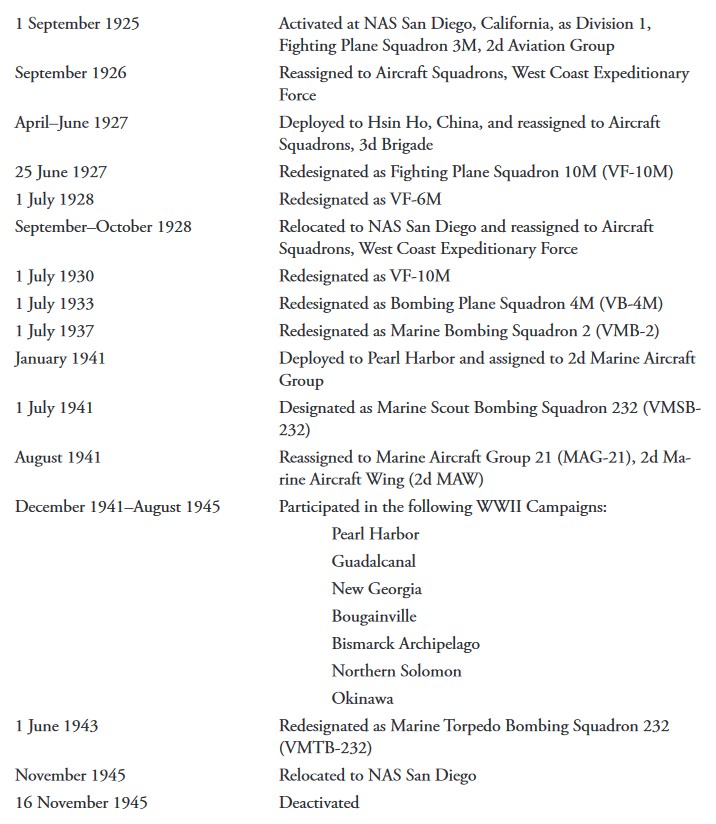 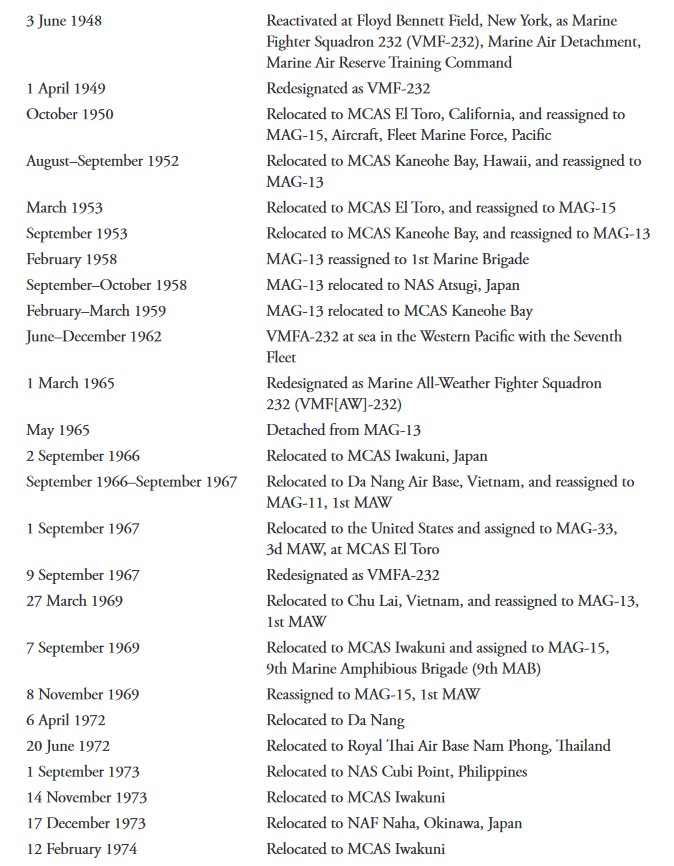 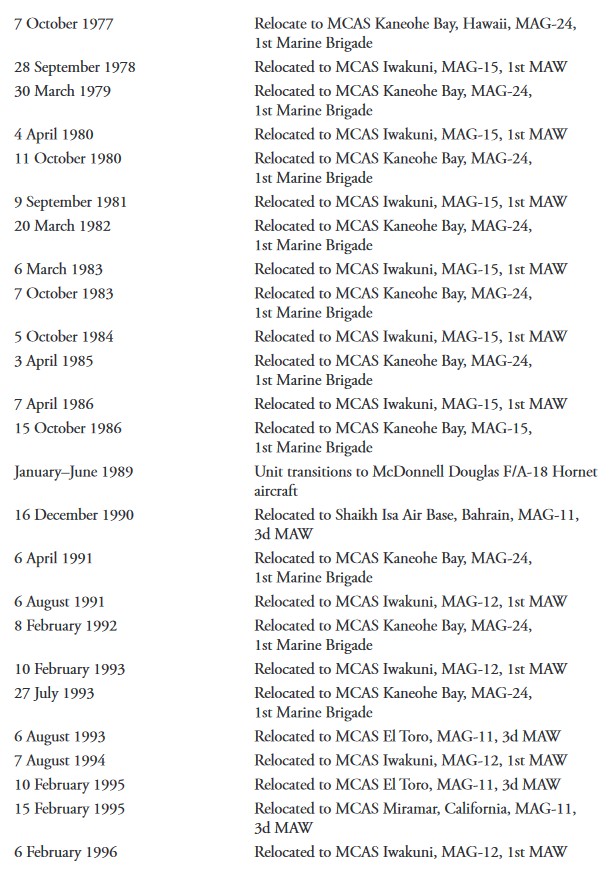 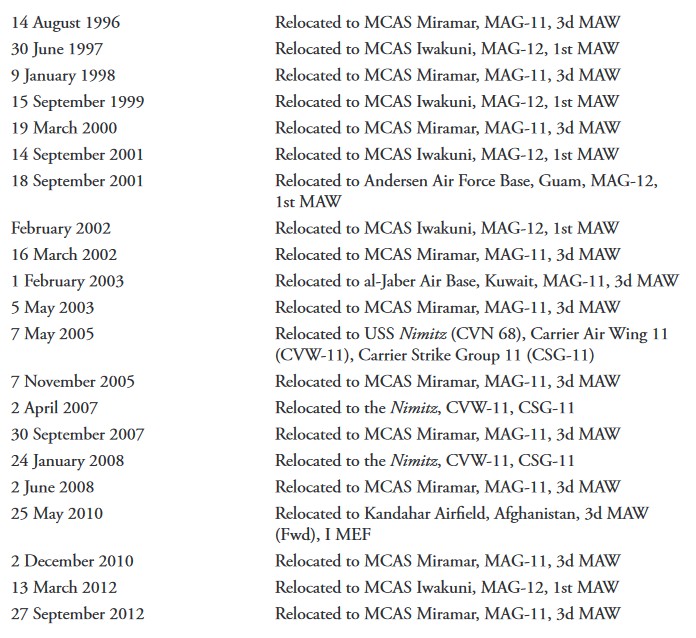 |
||||||
| patches + more | ||||||
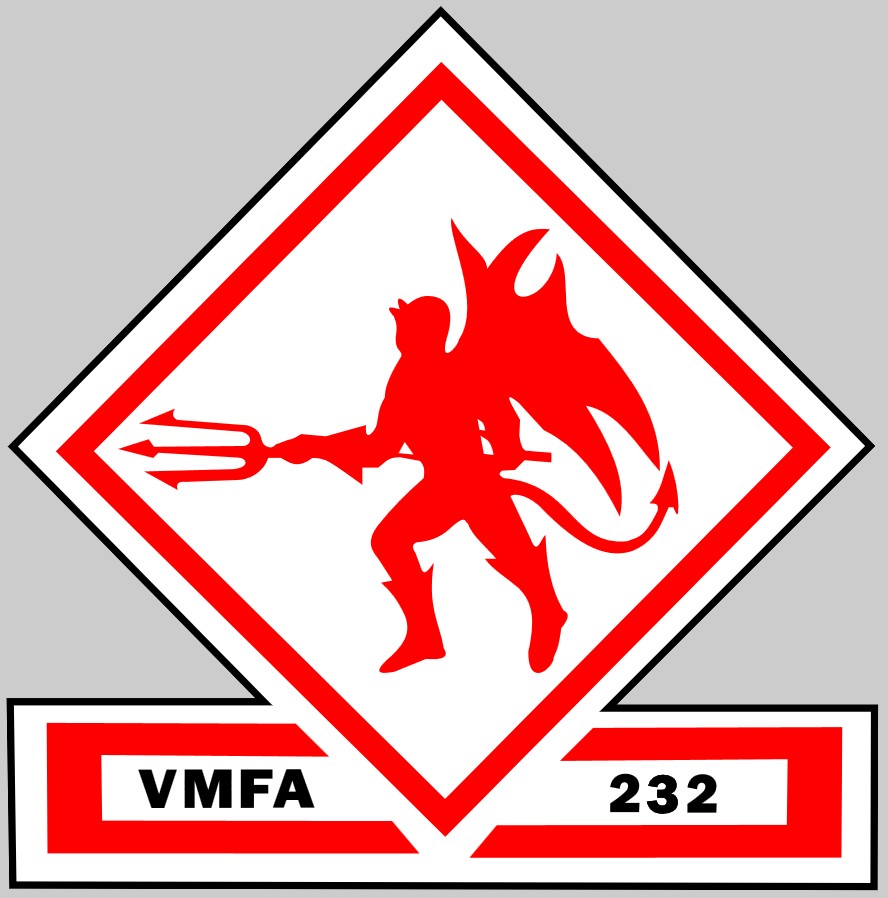 |
||||||
| | seaforces.org | US Marine Corps Air units start page | |
